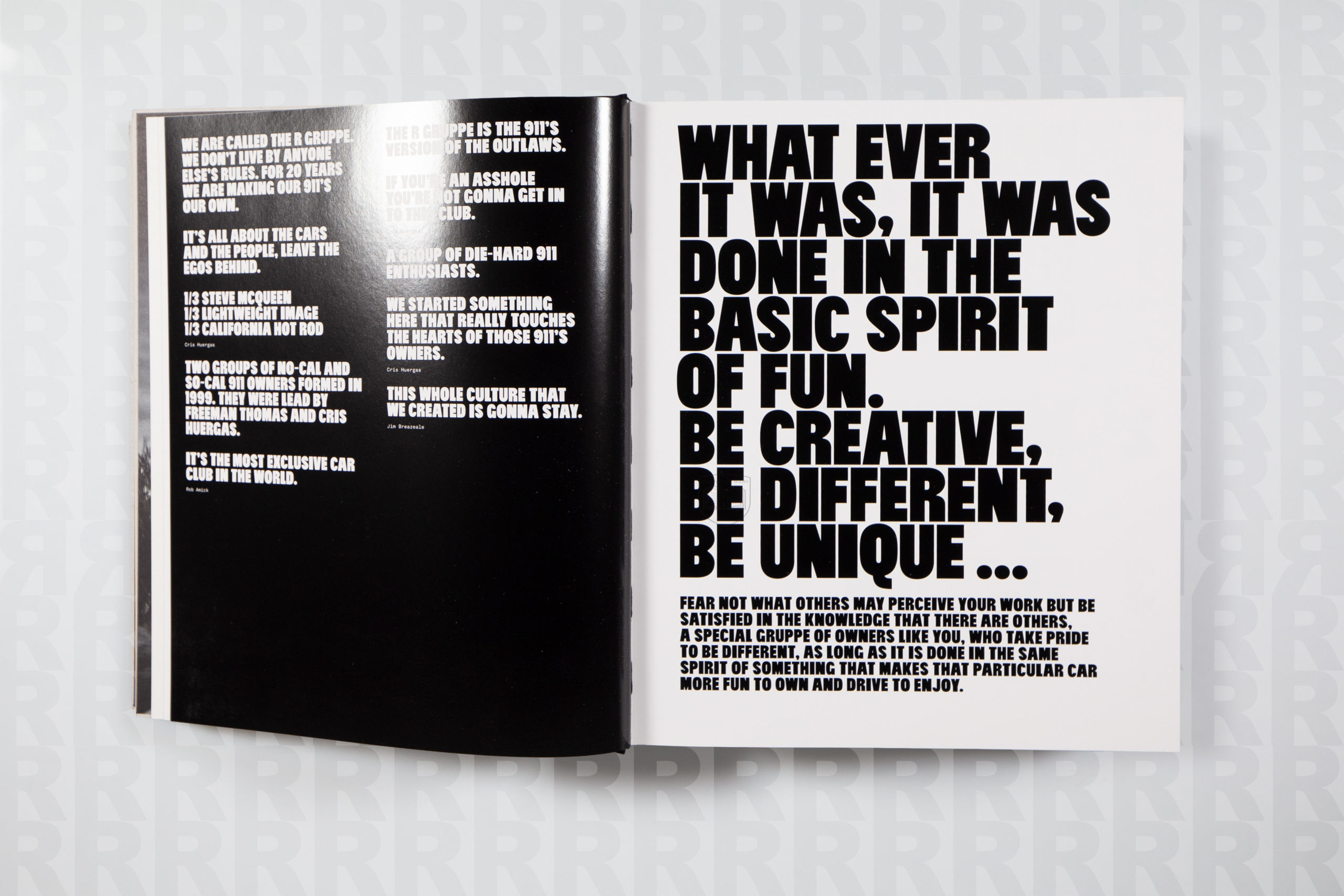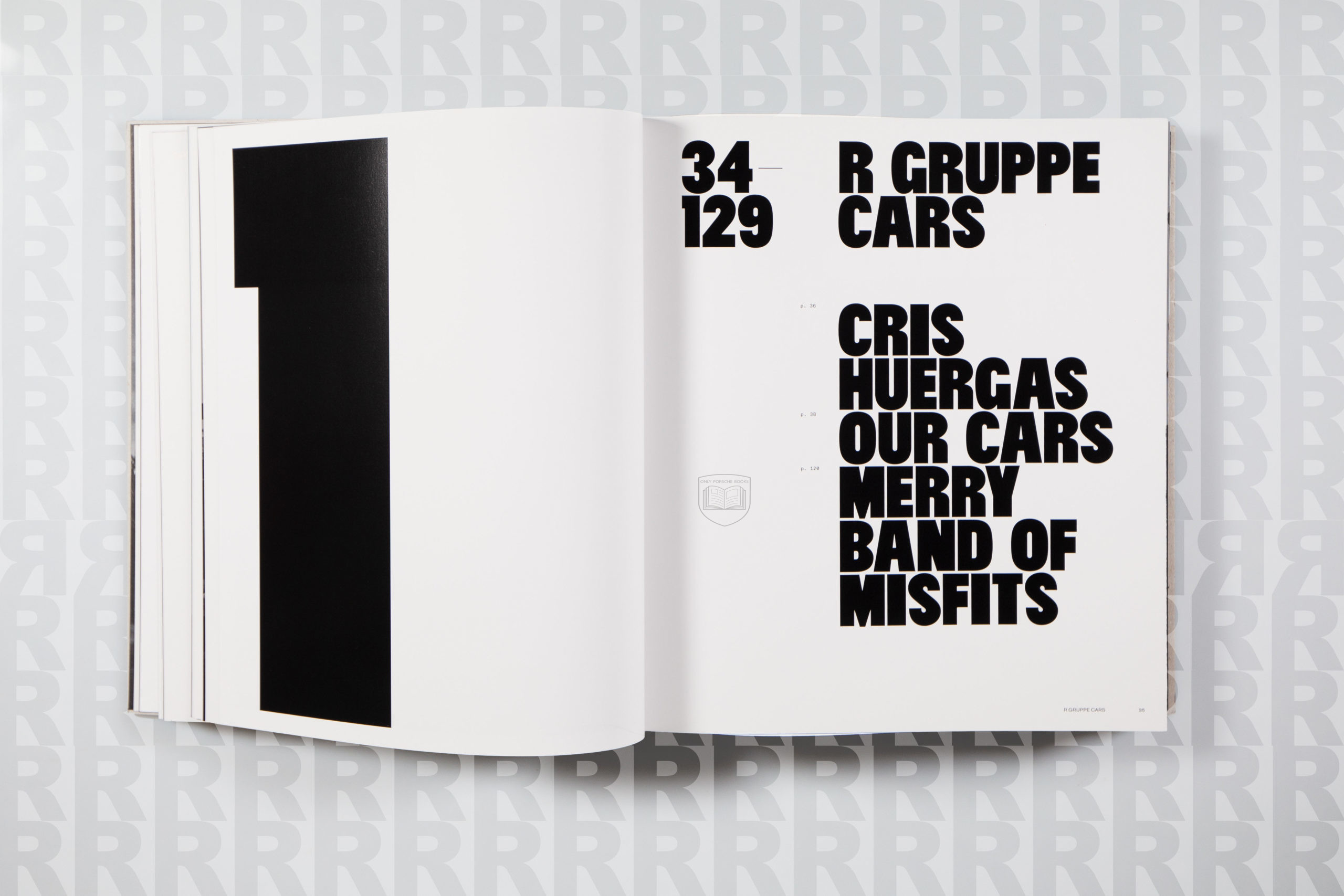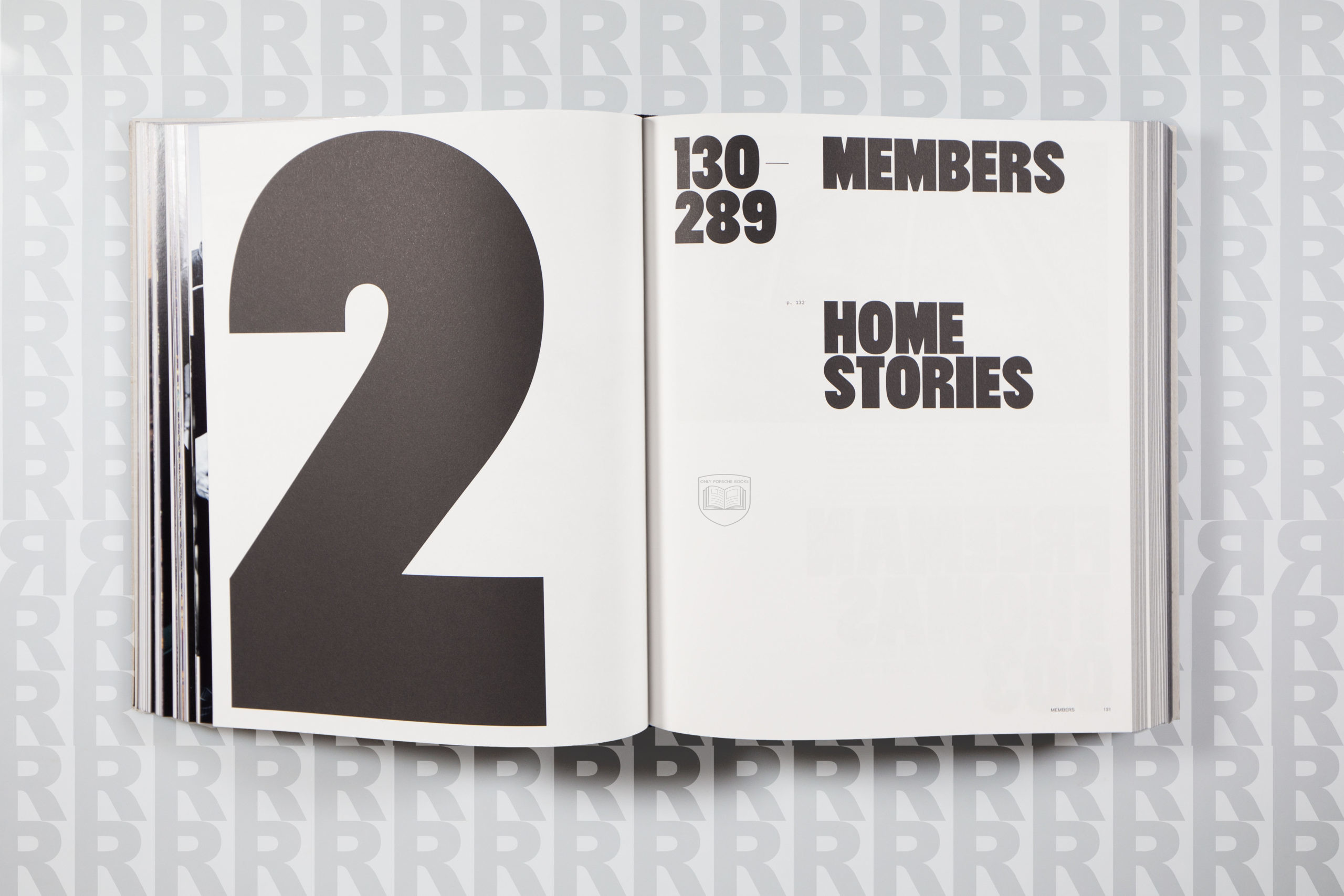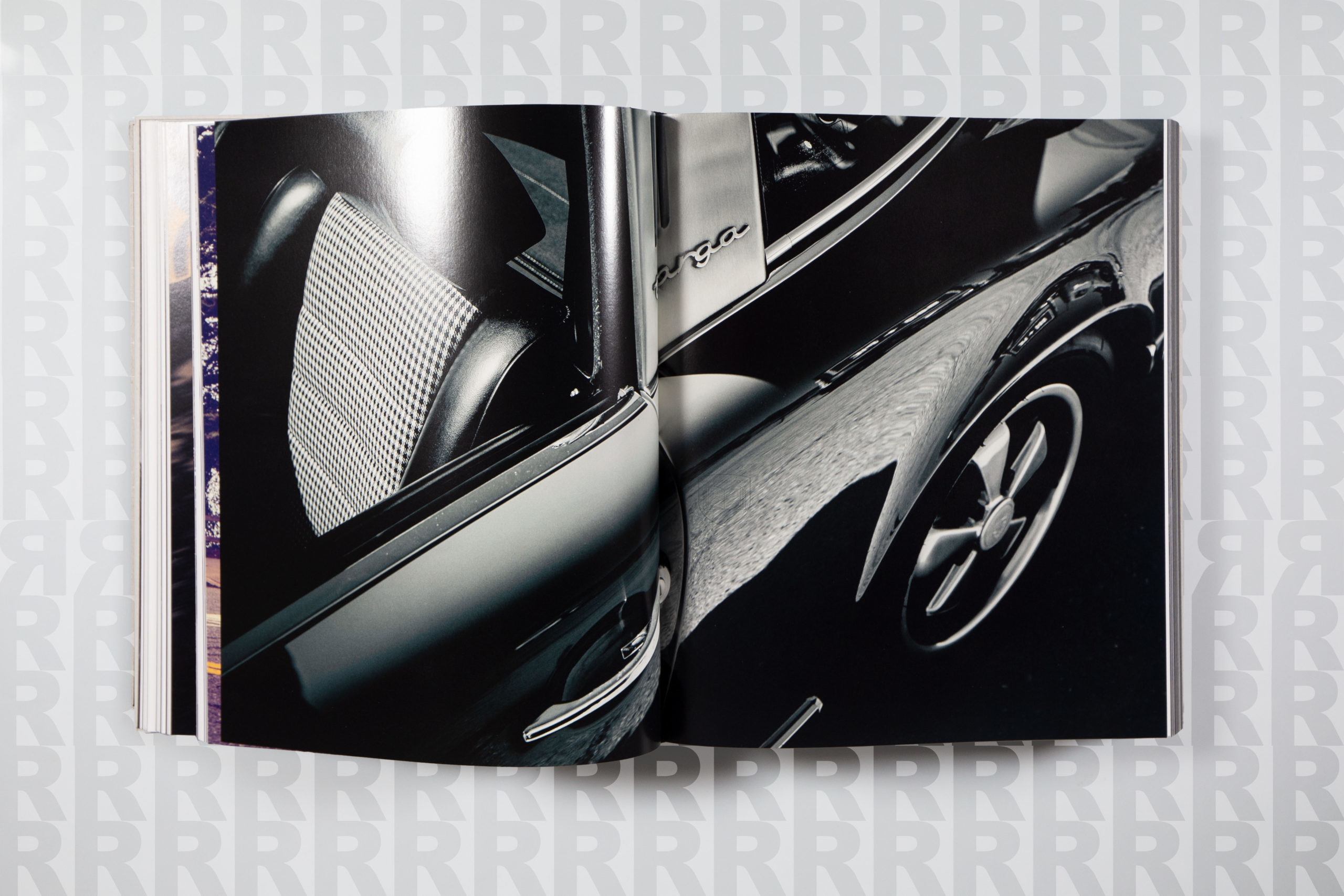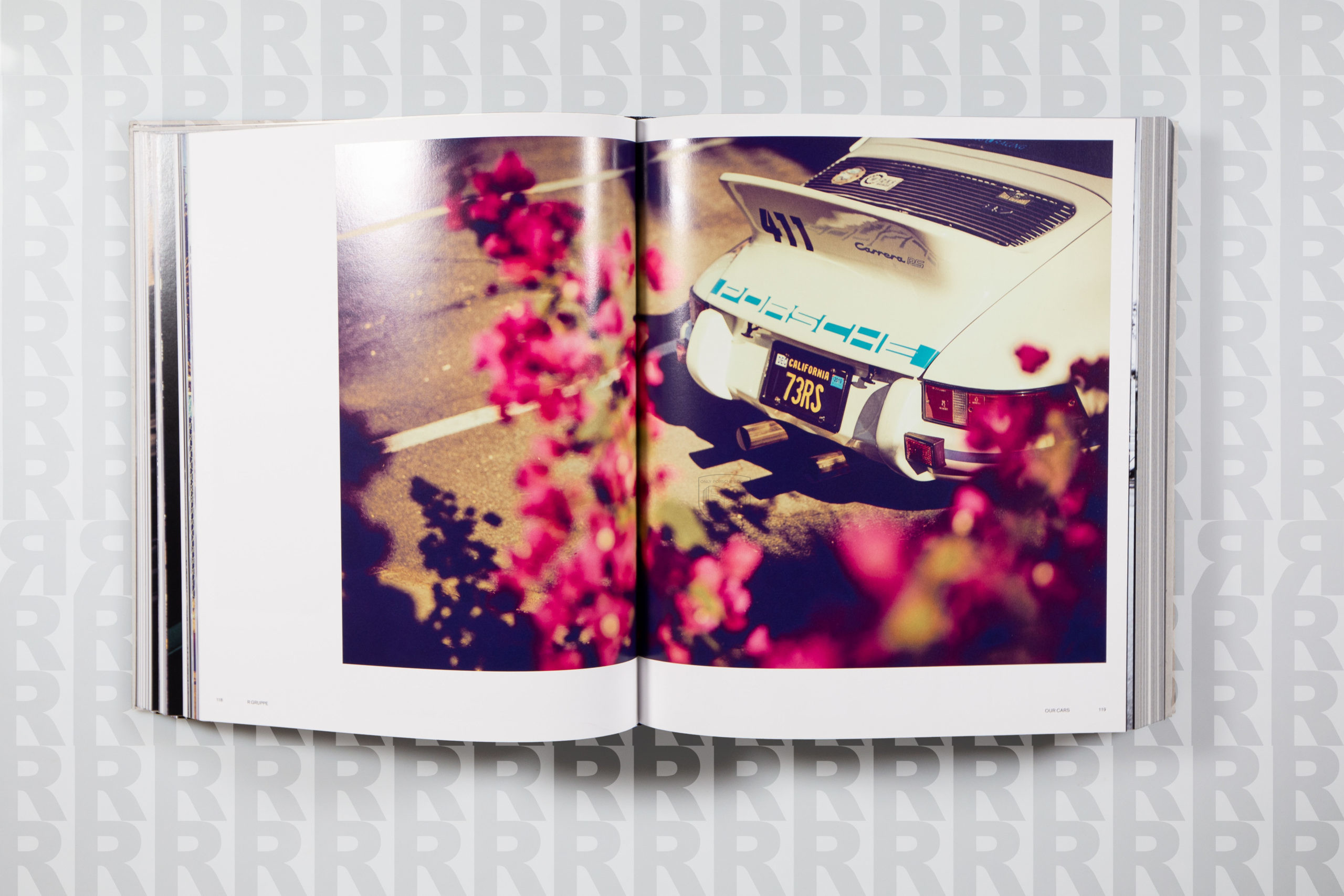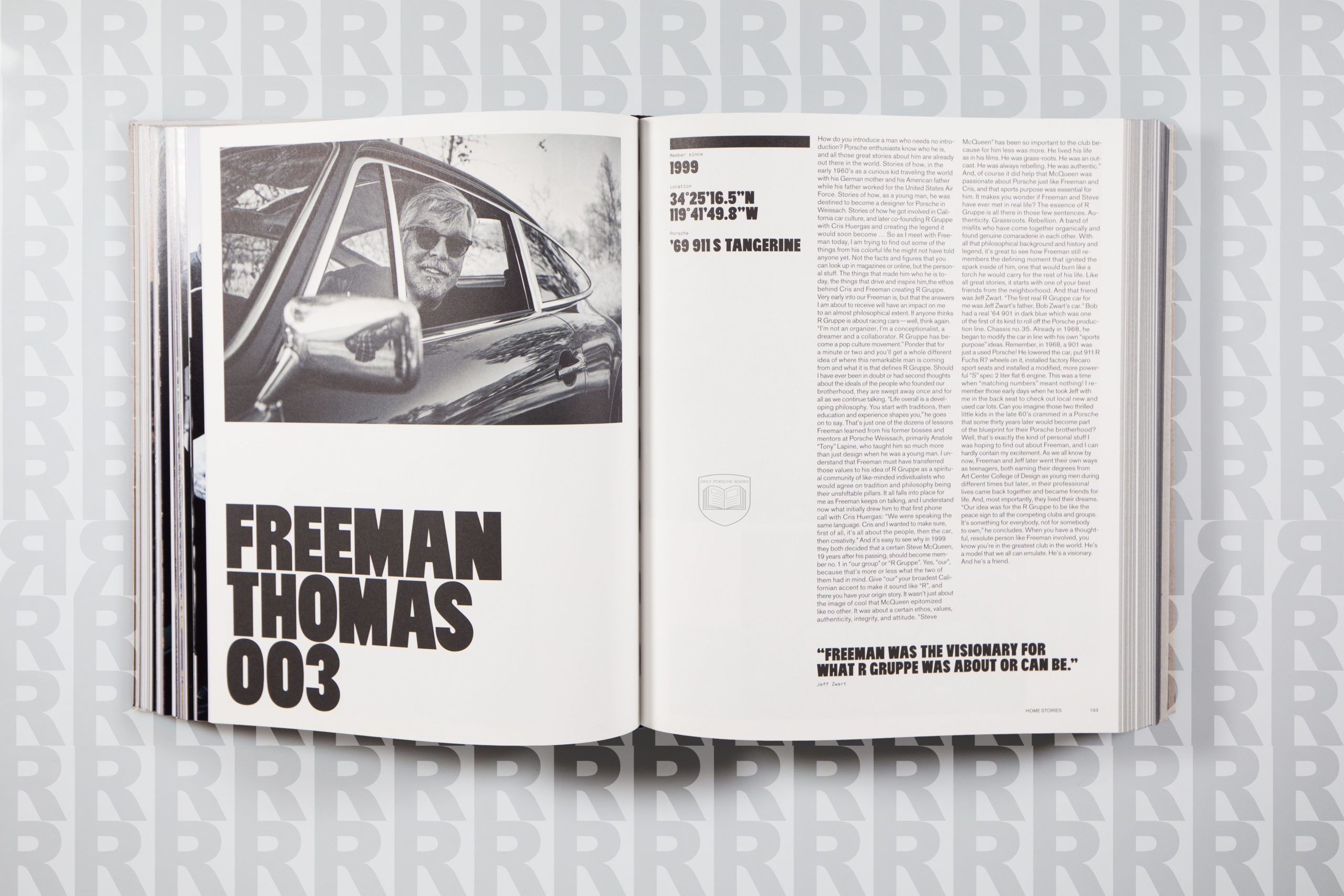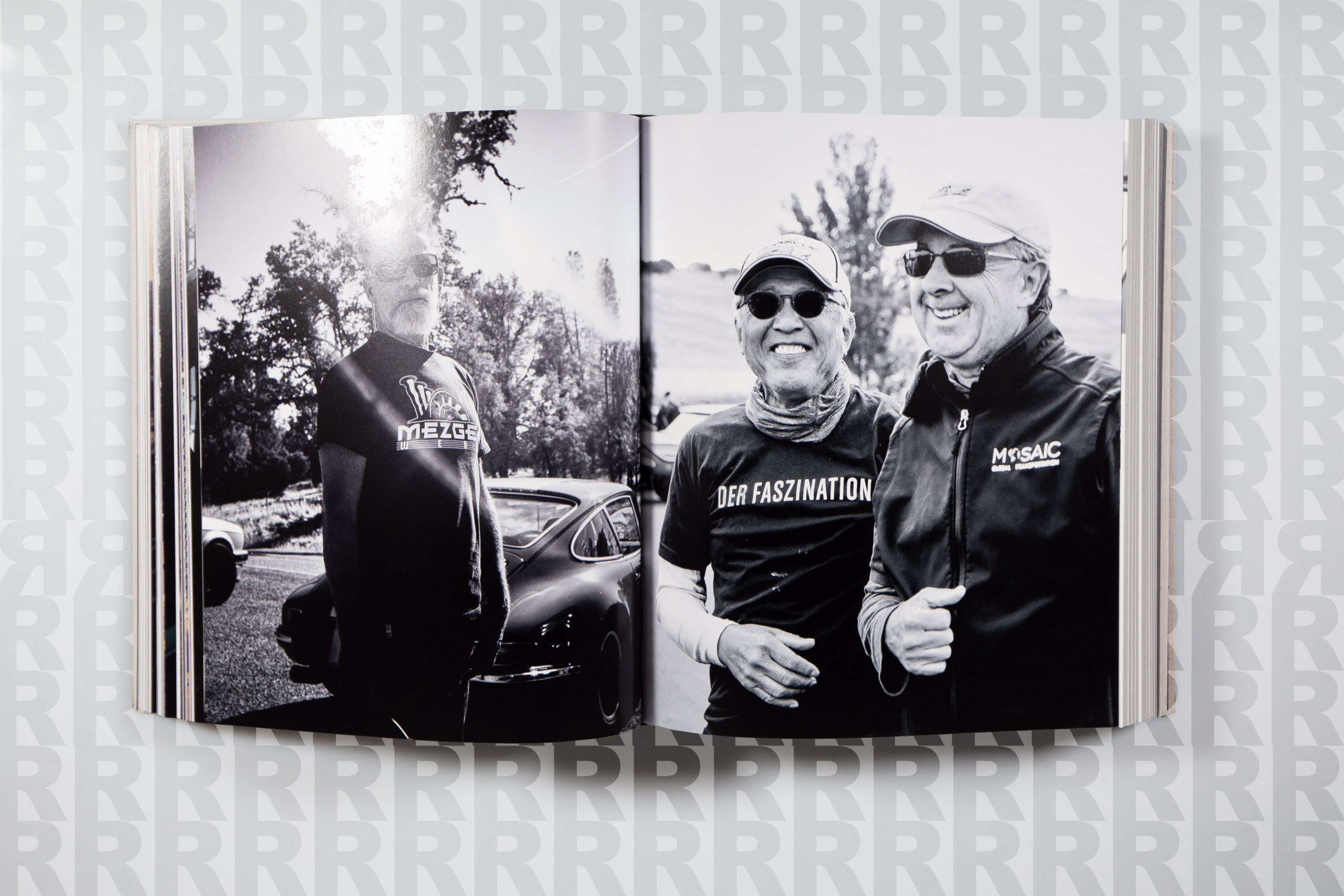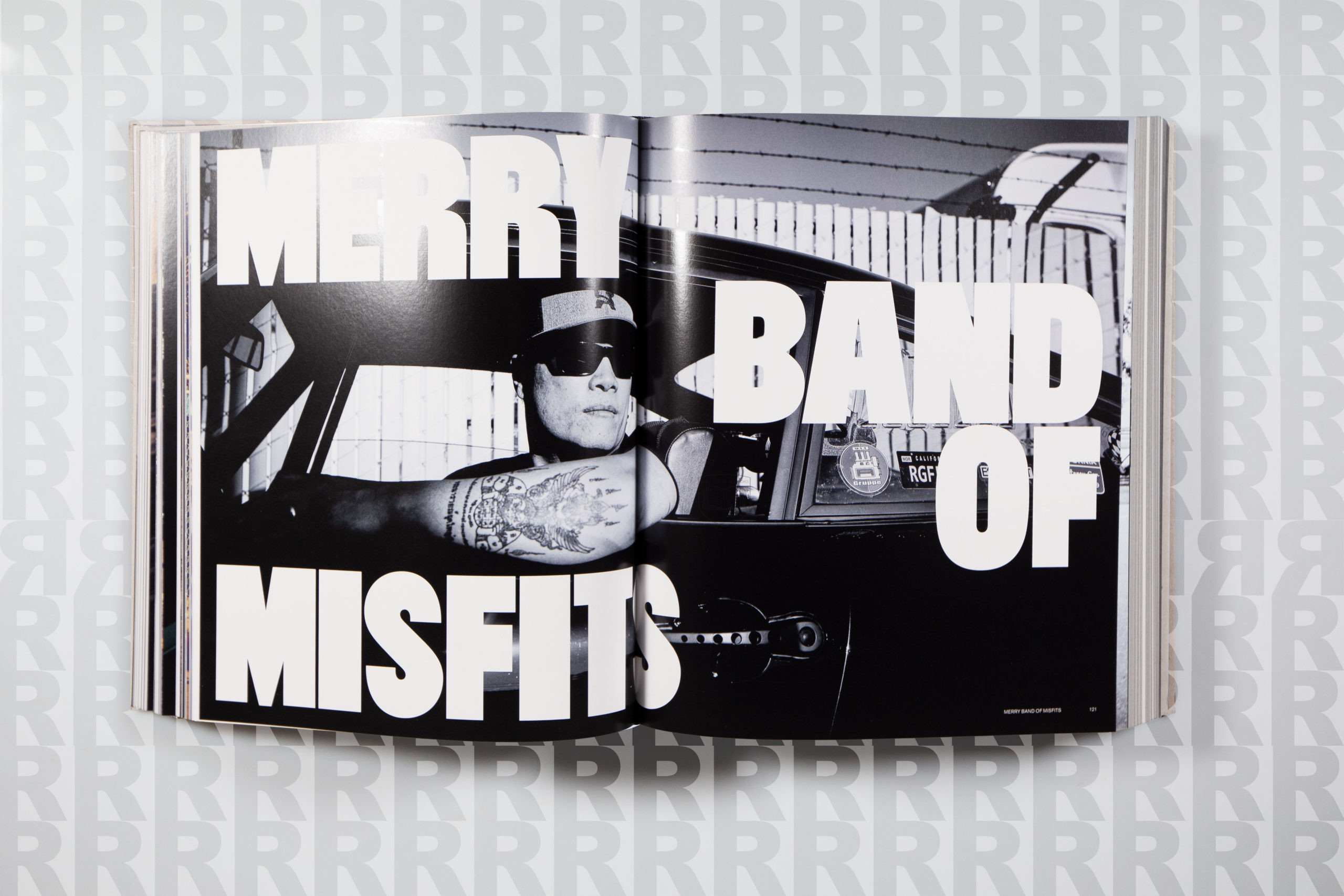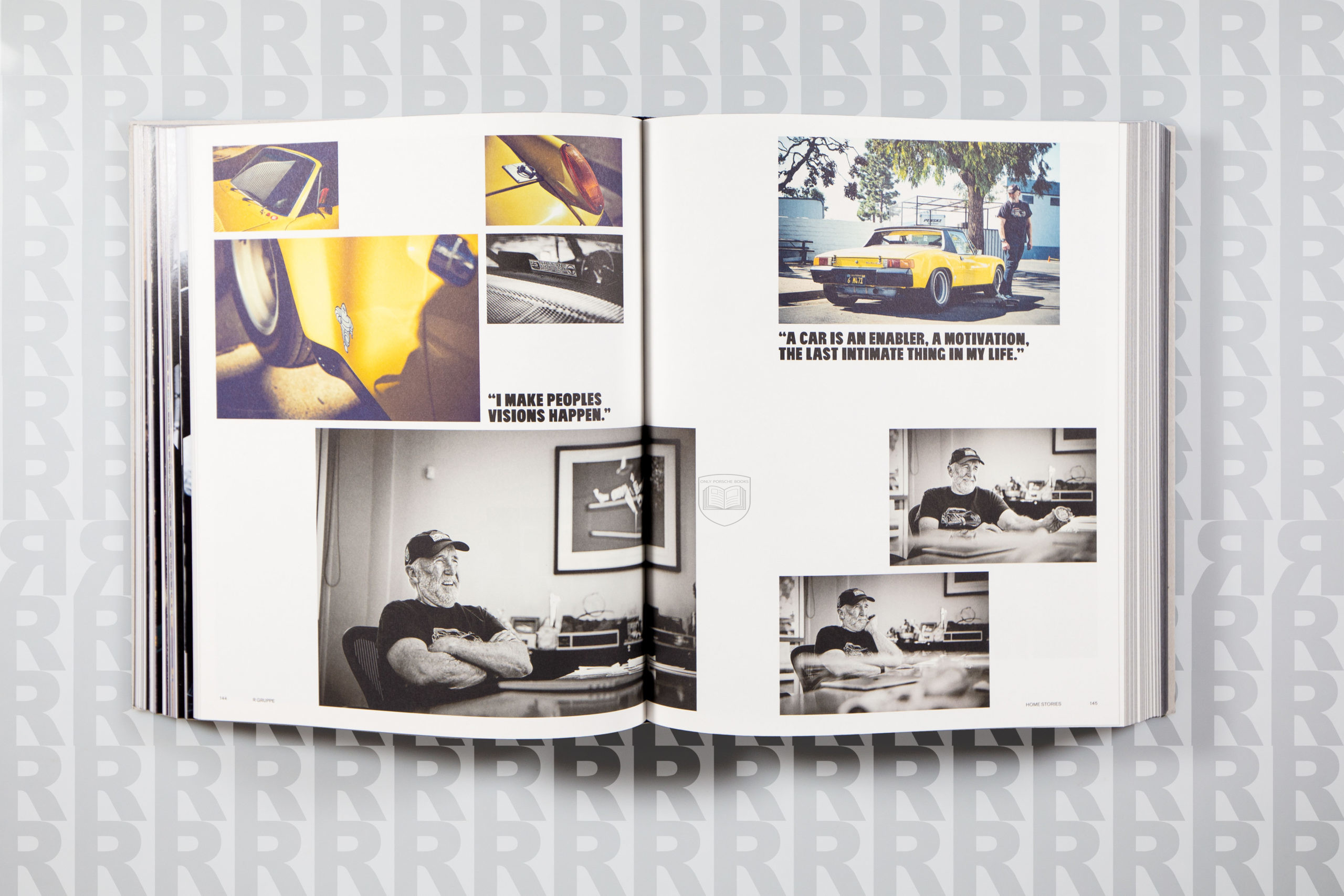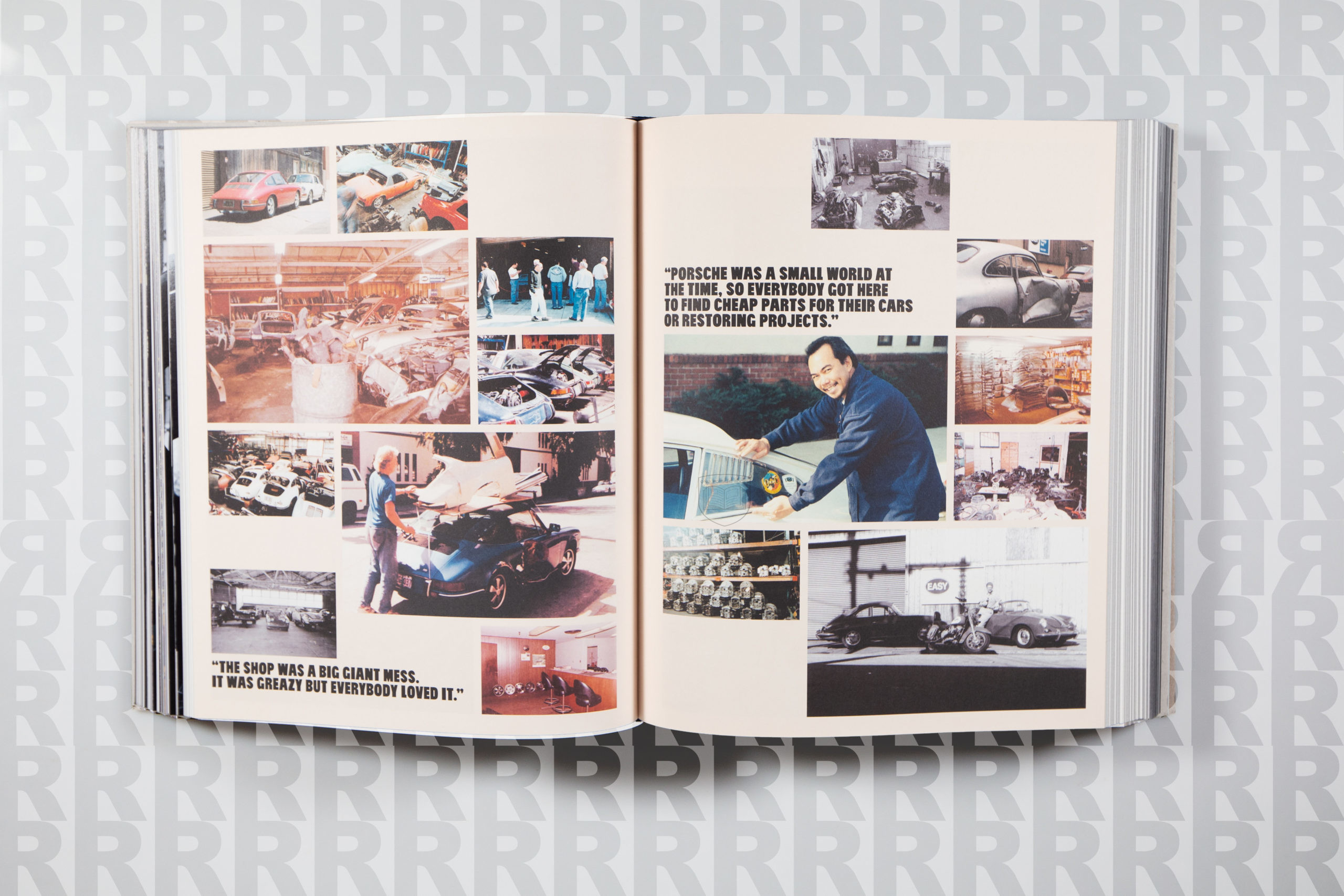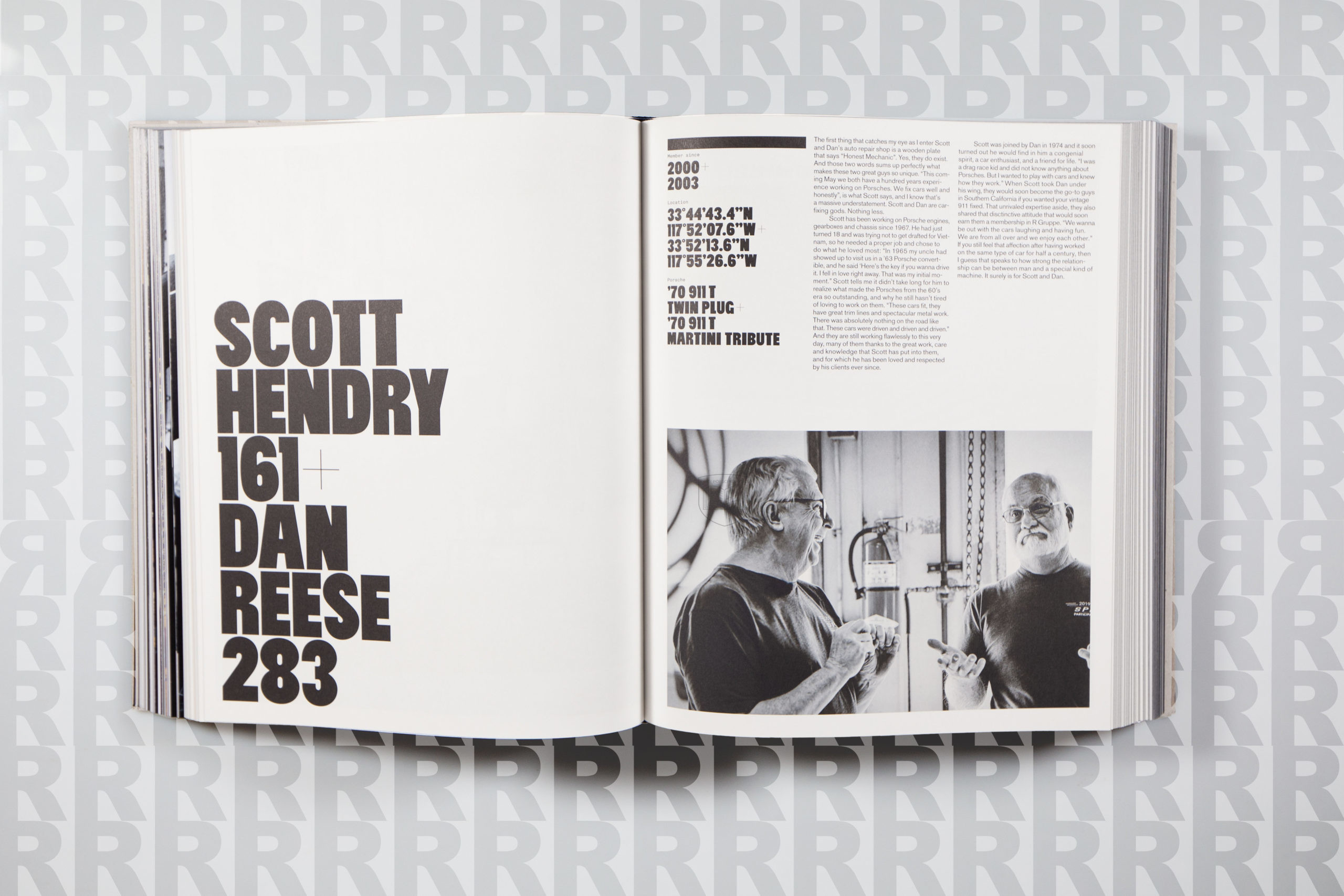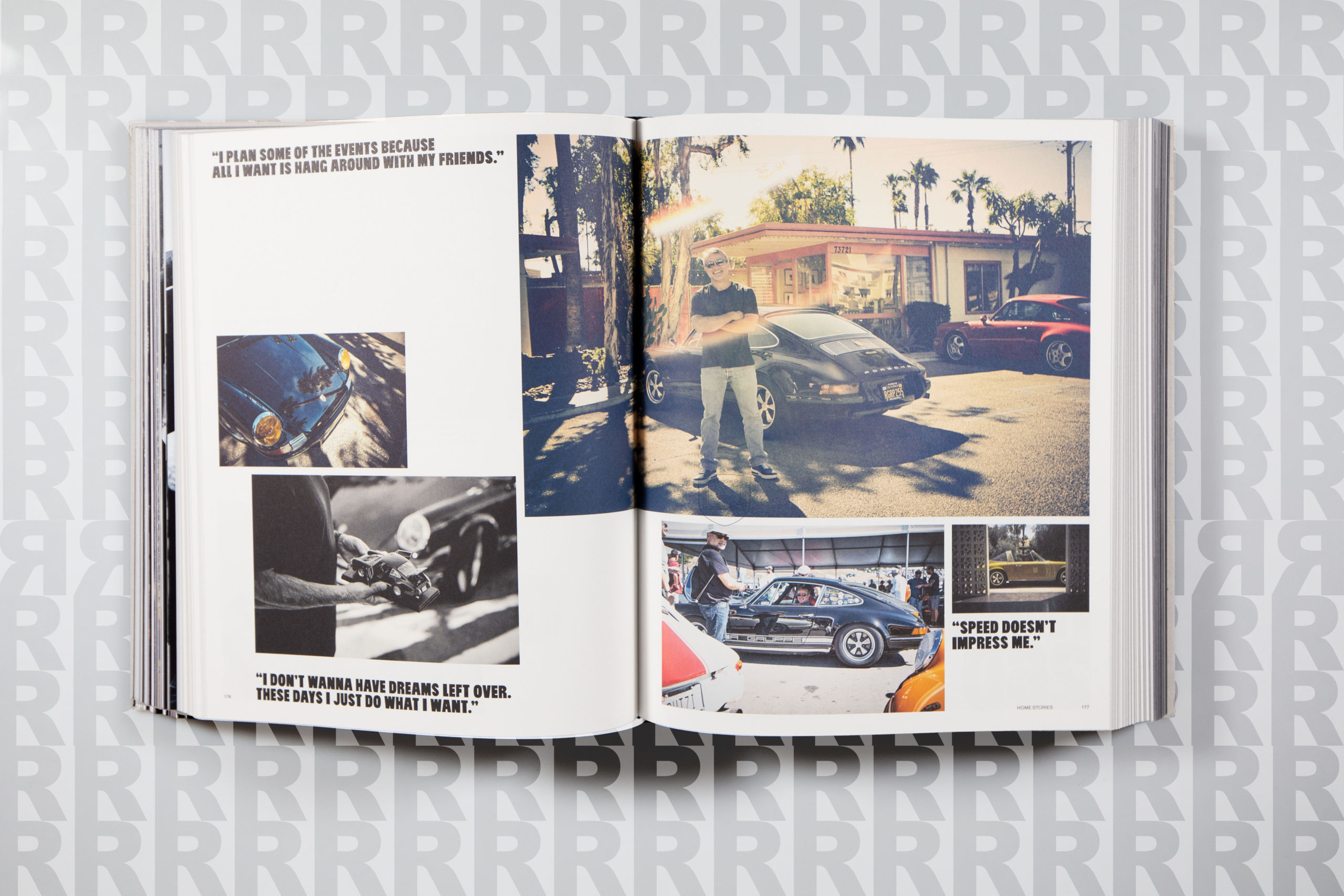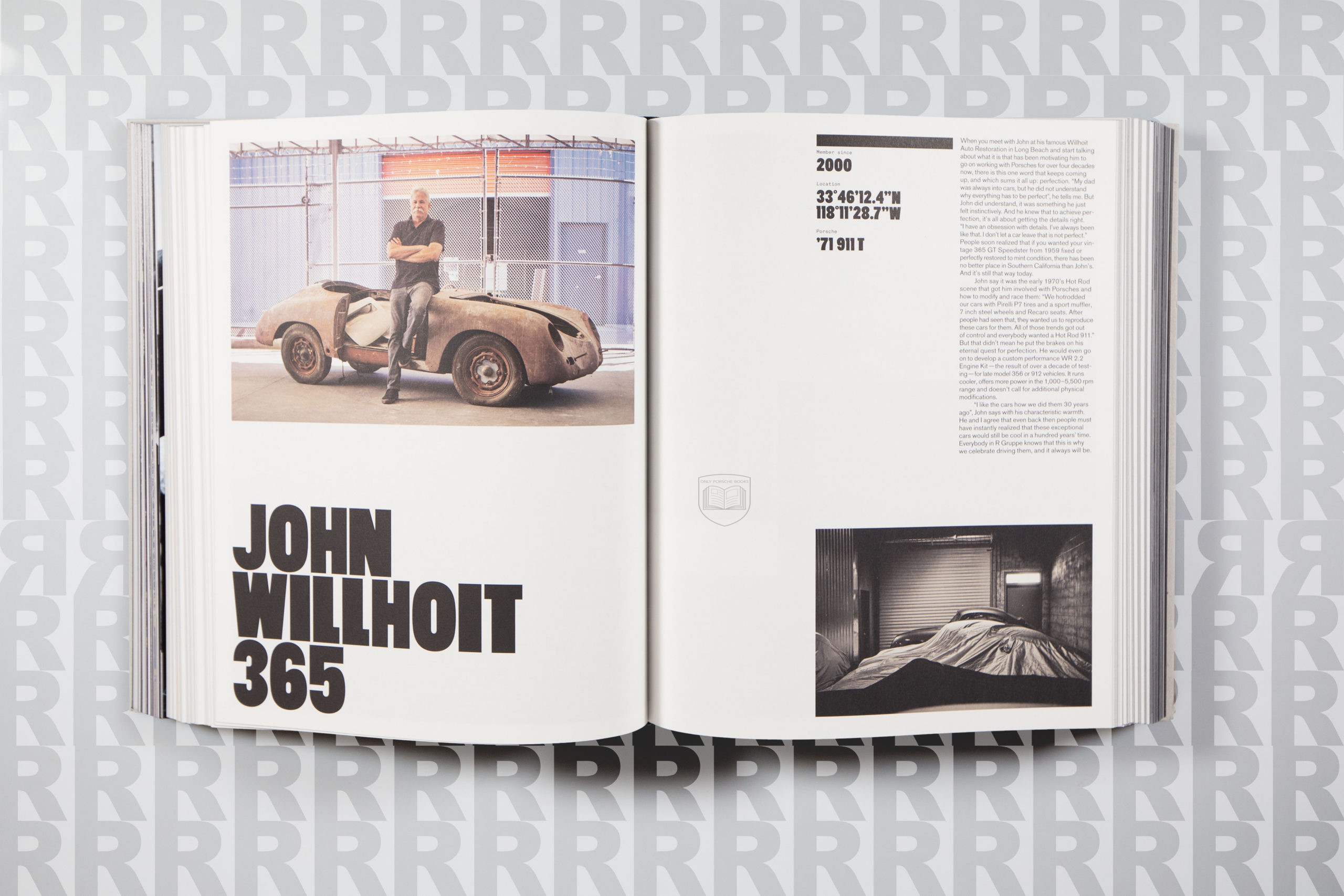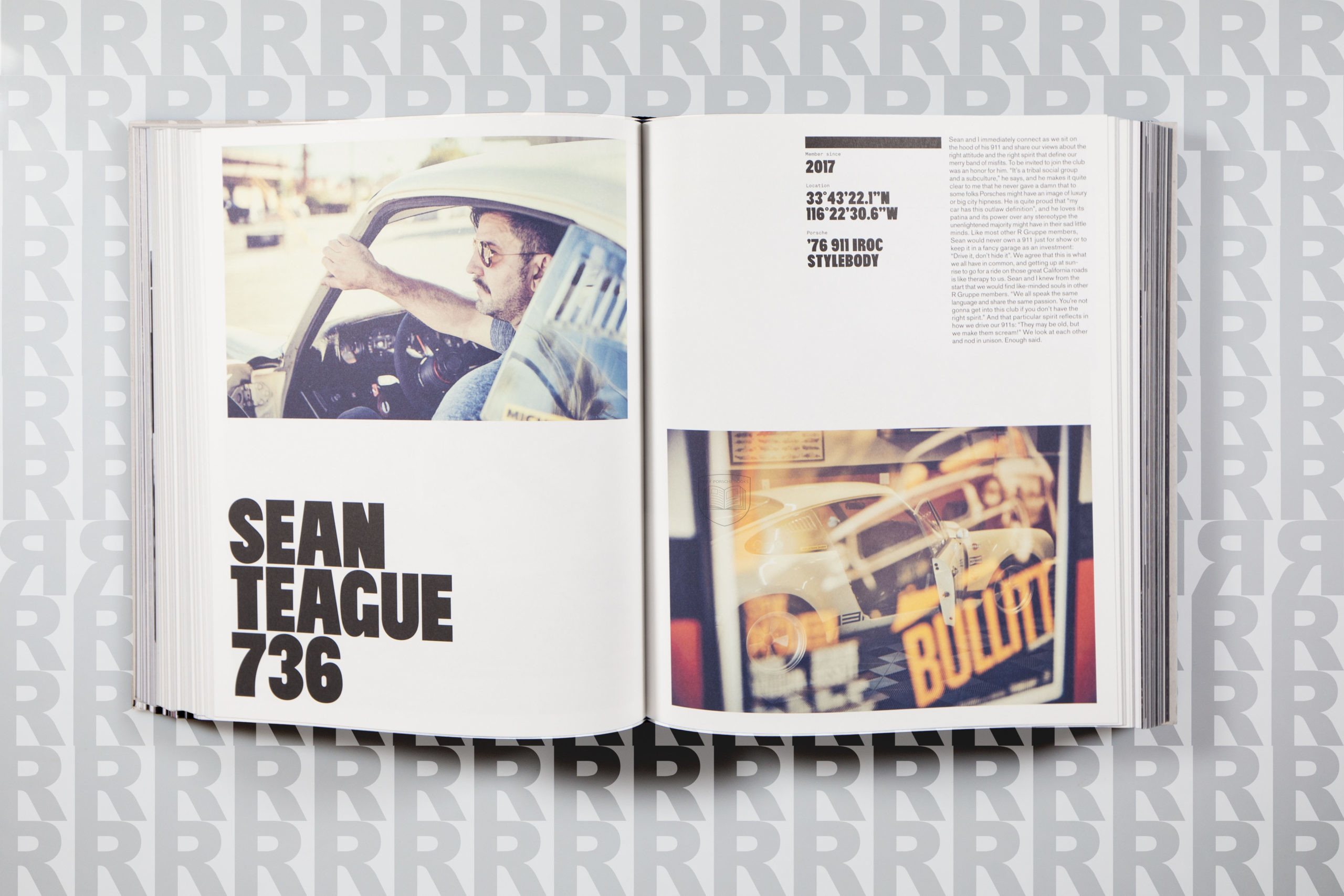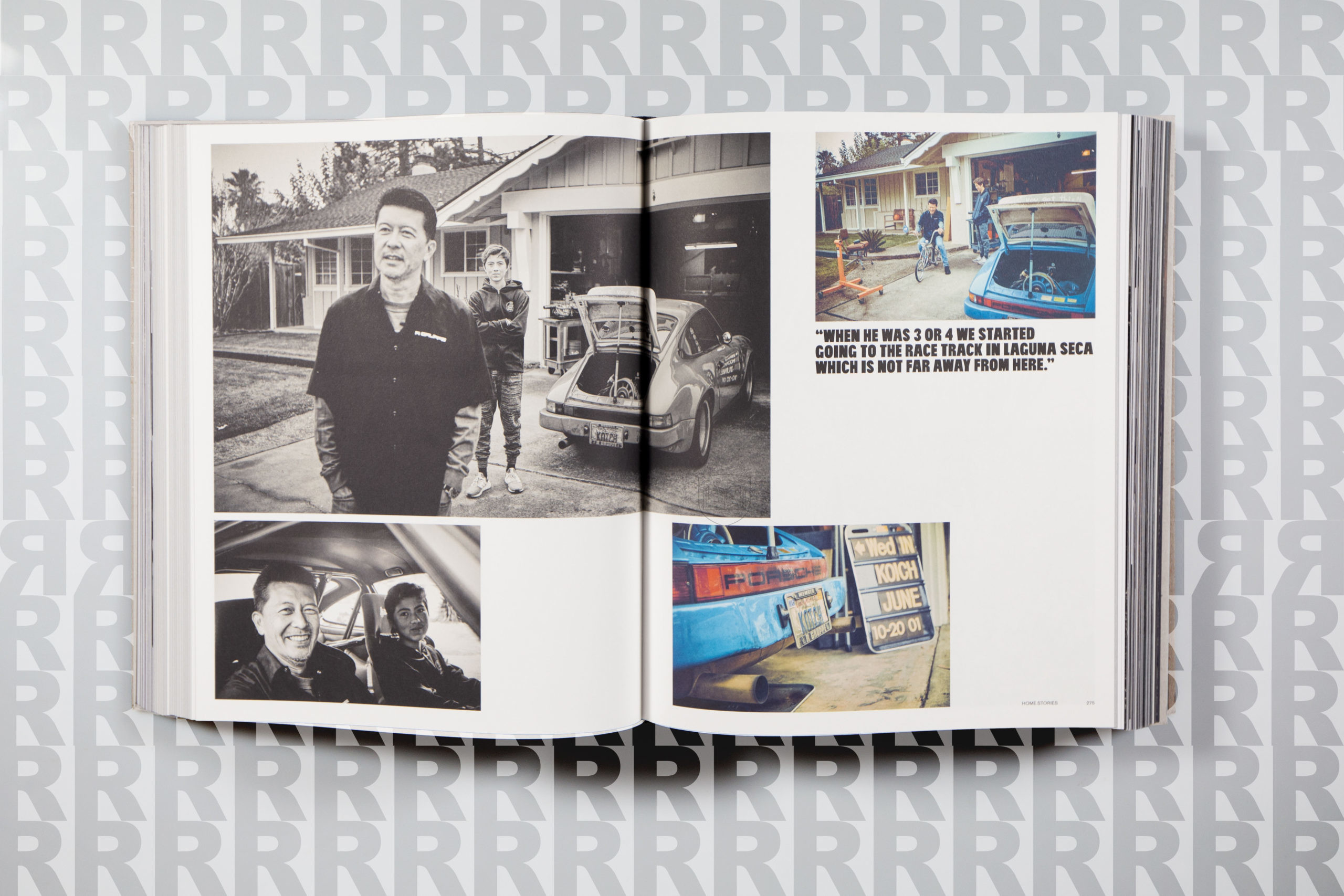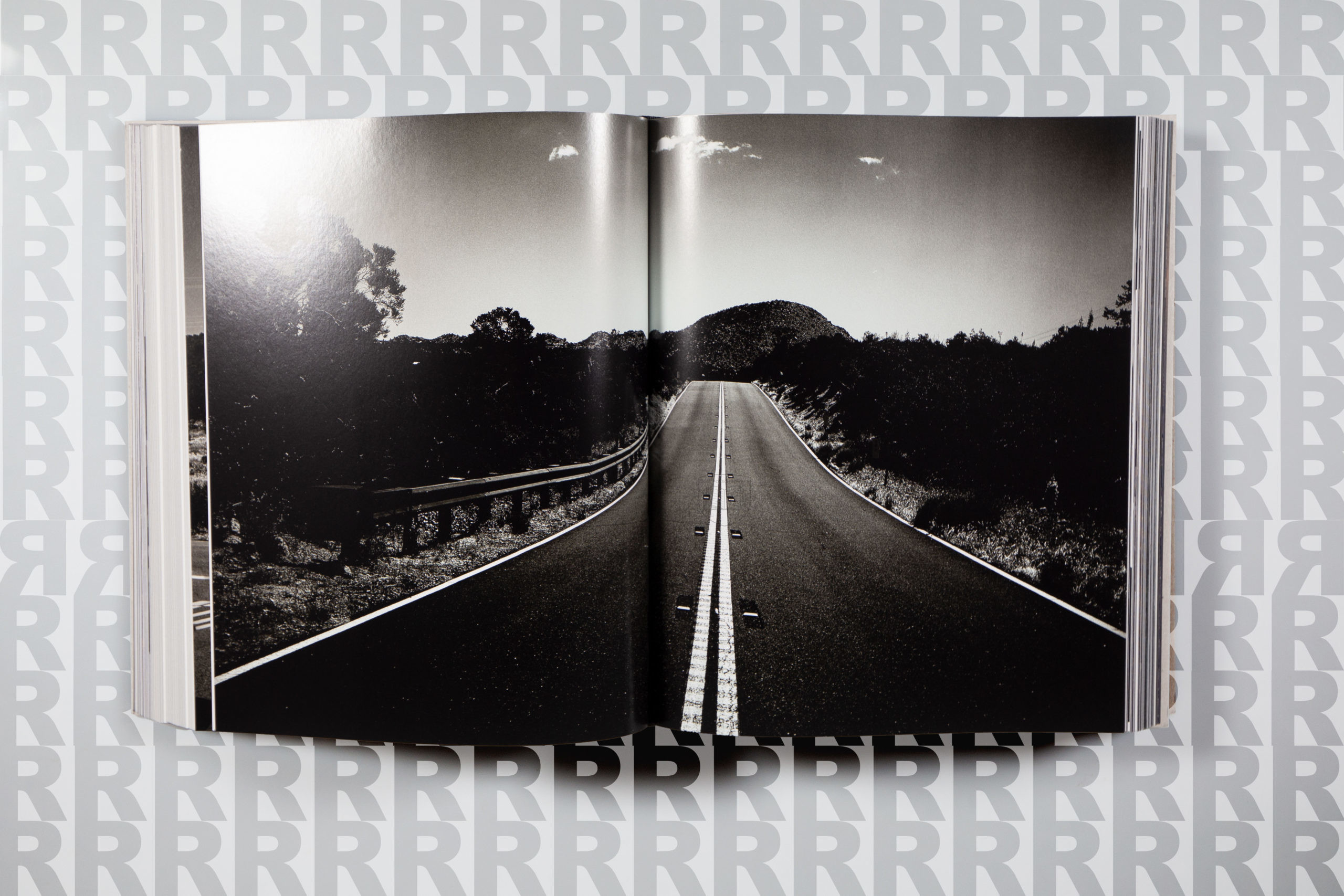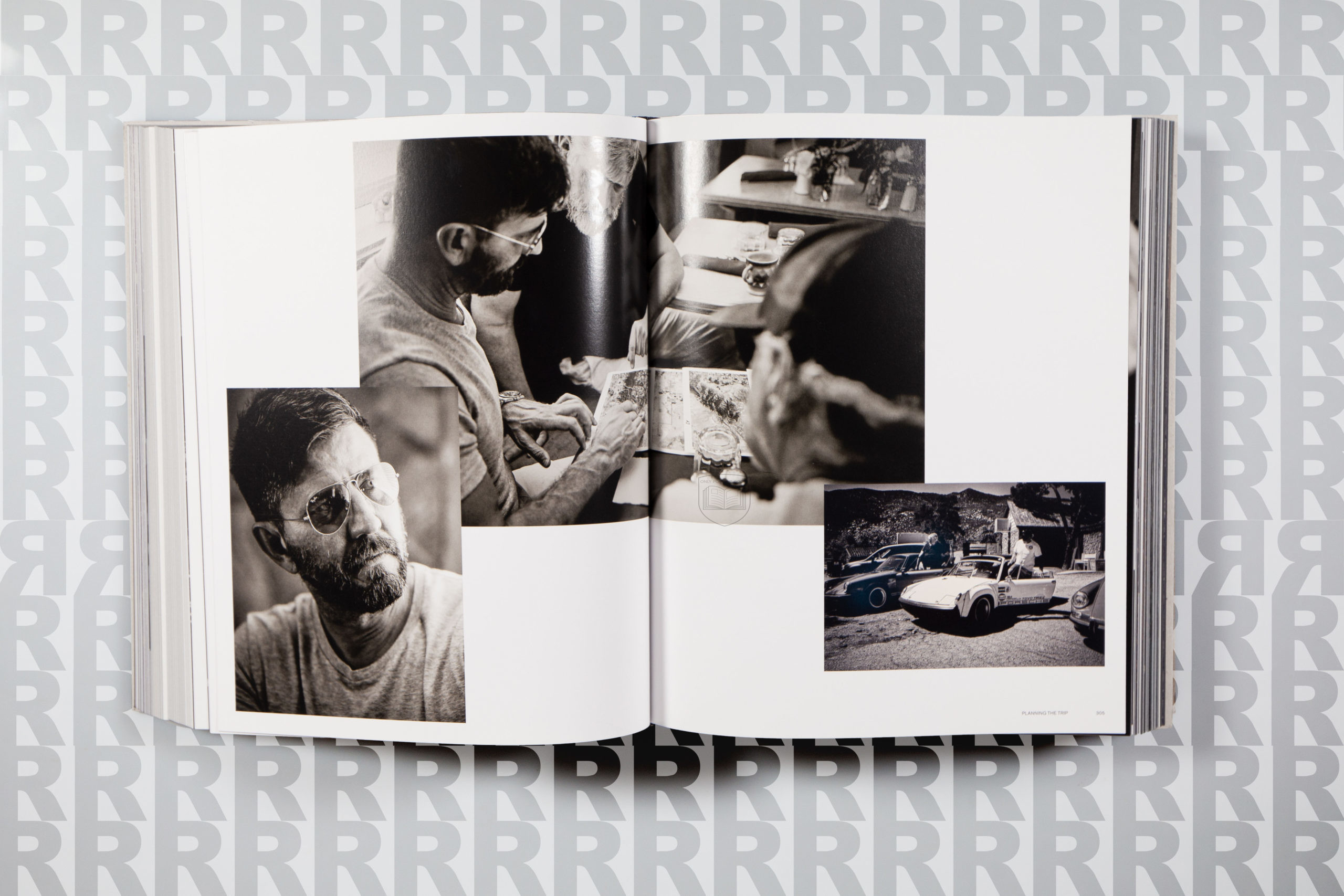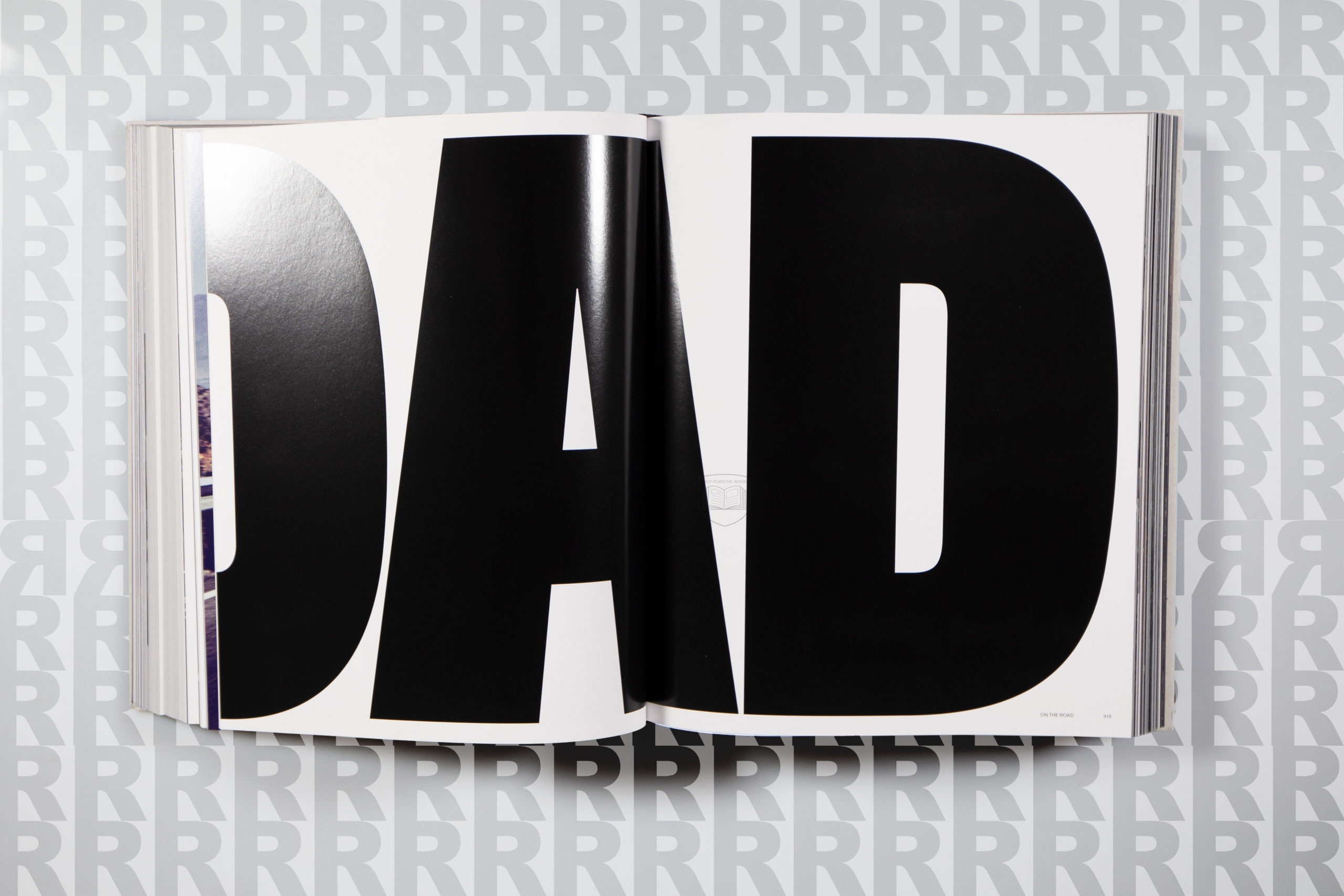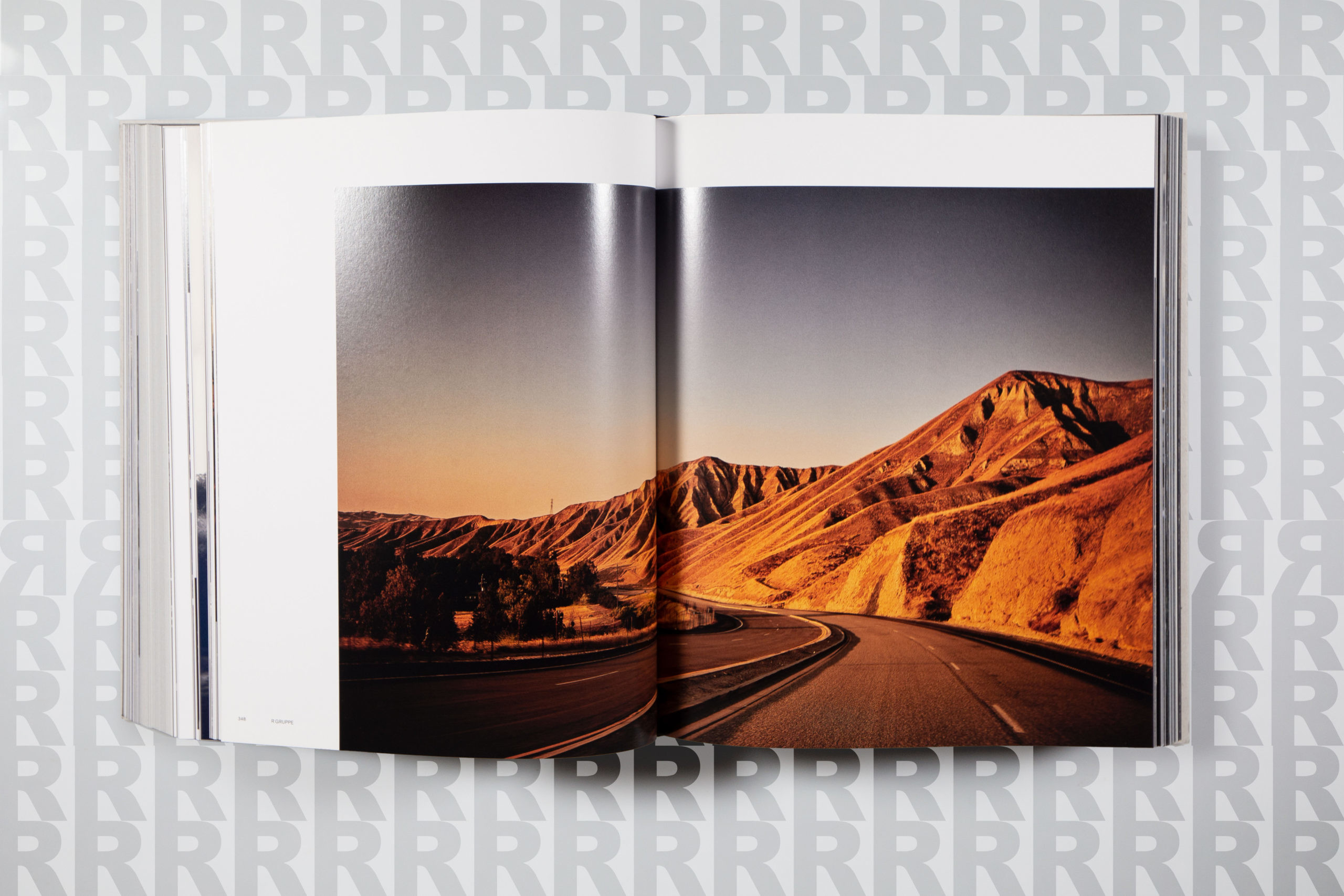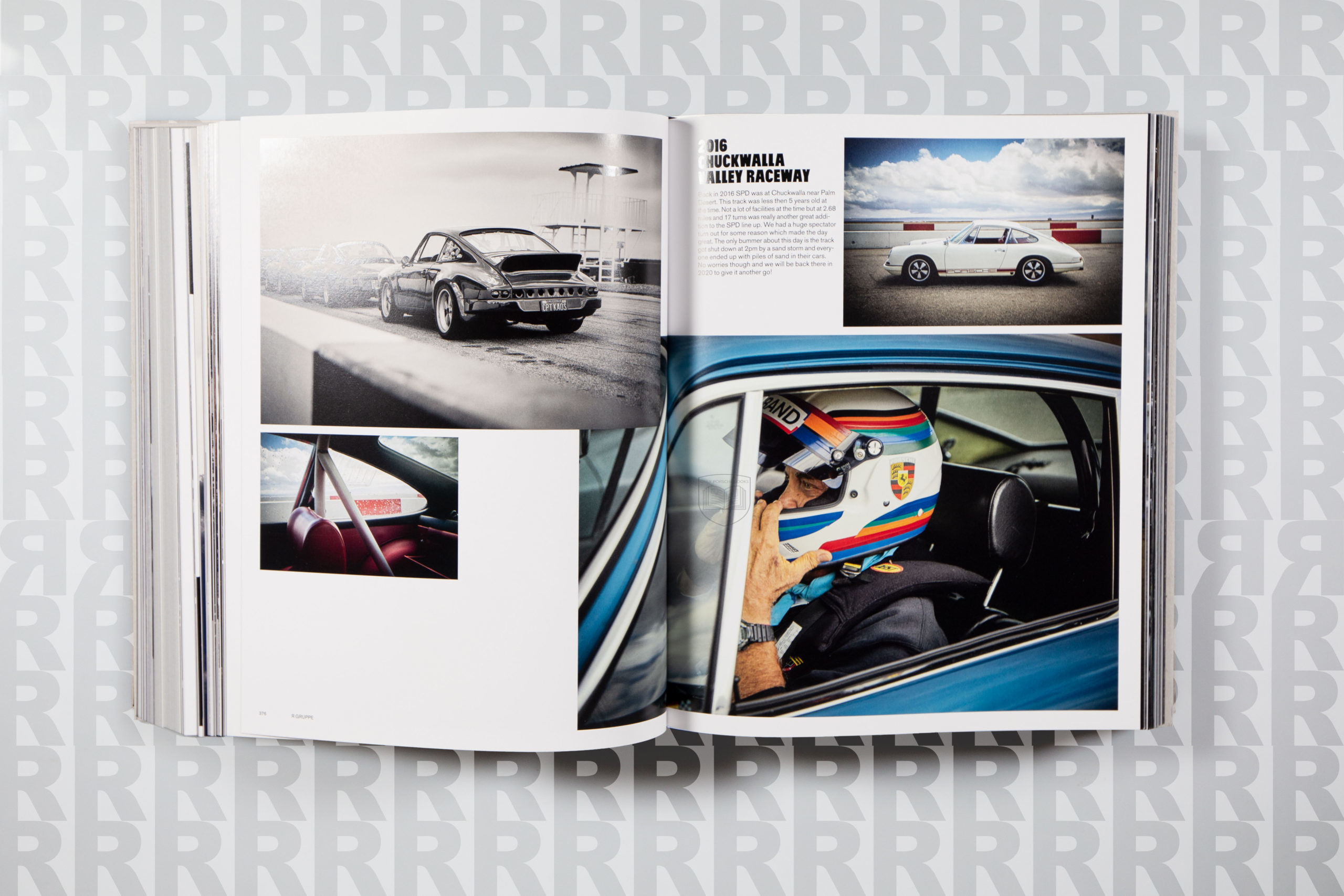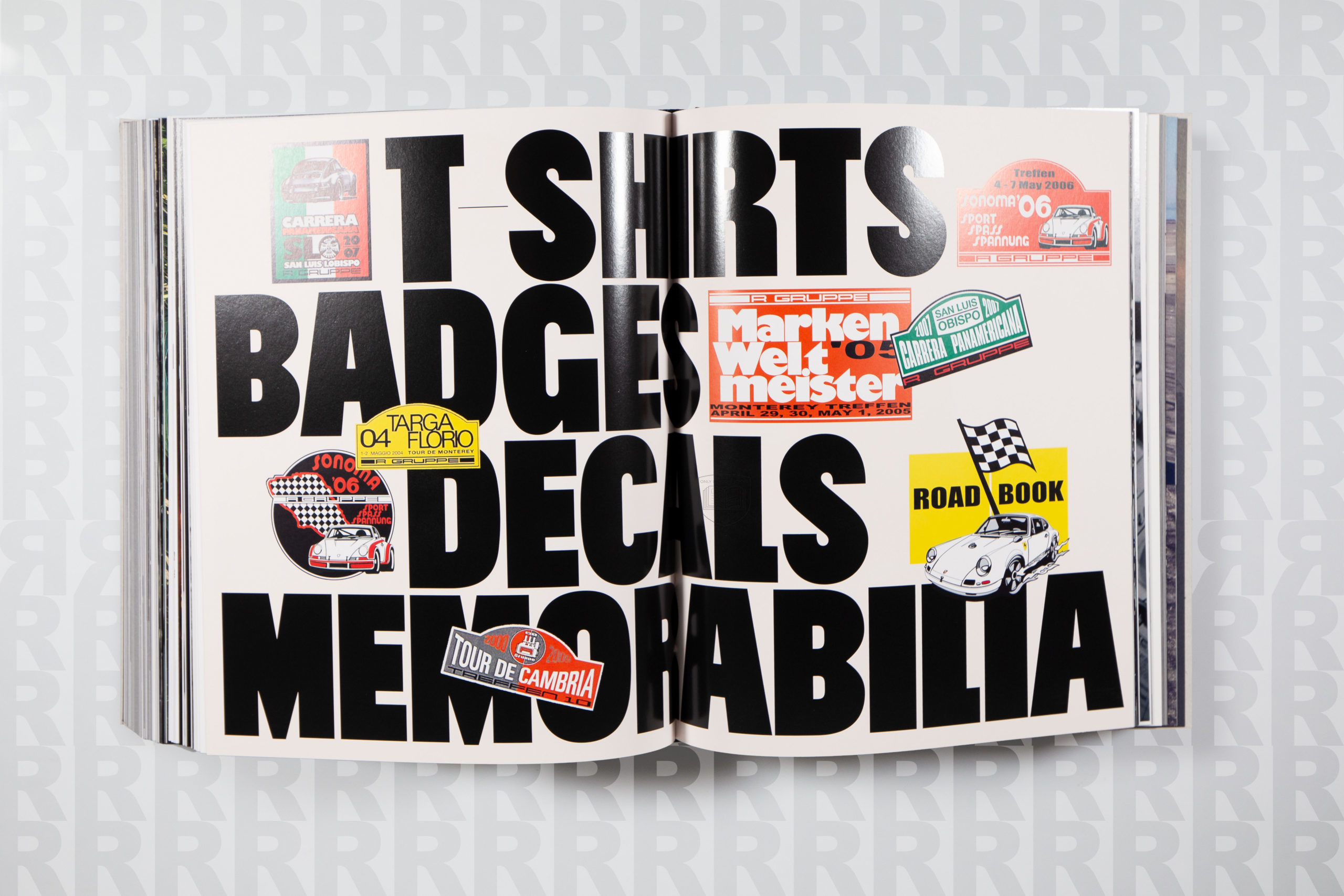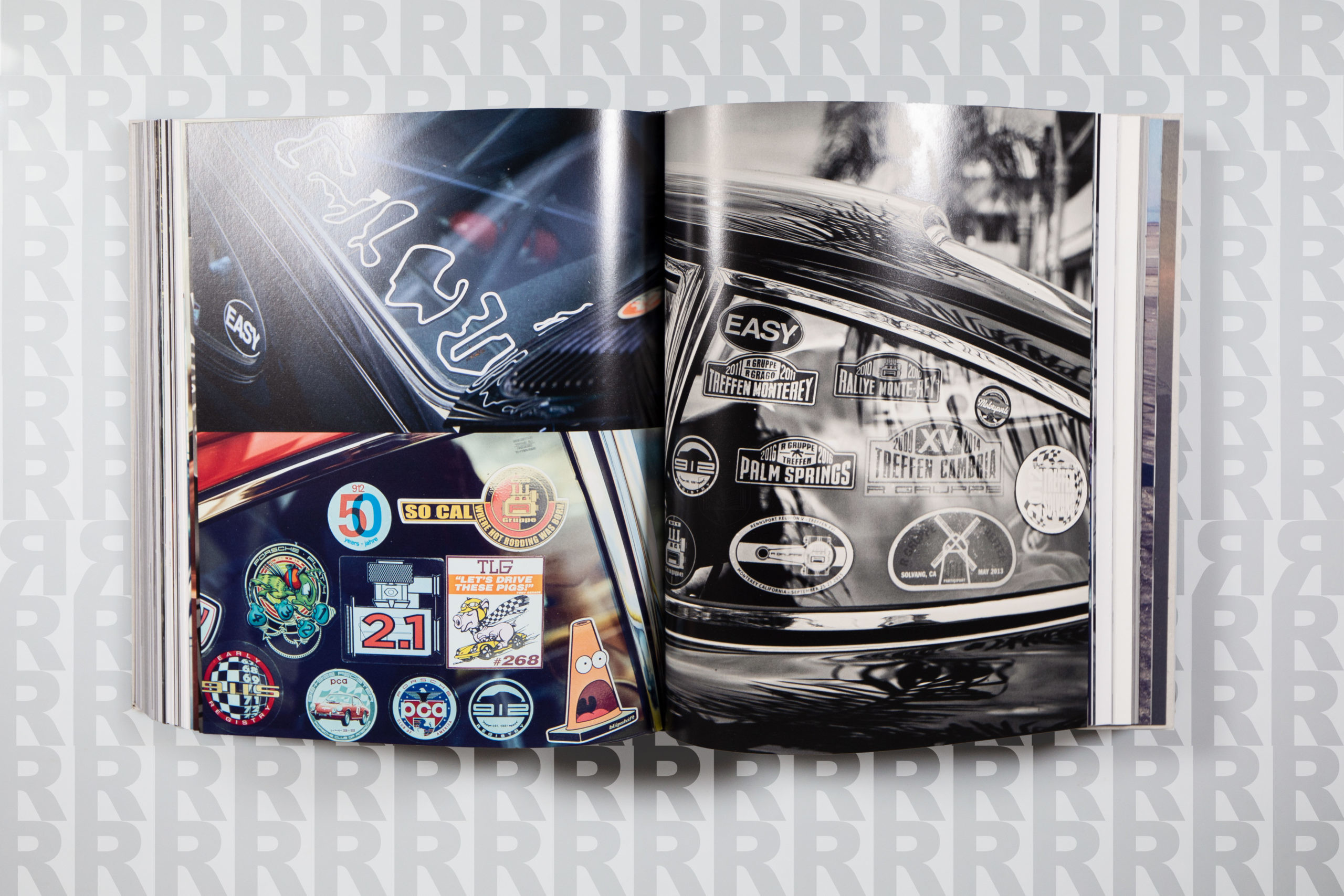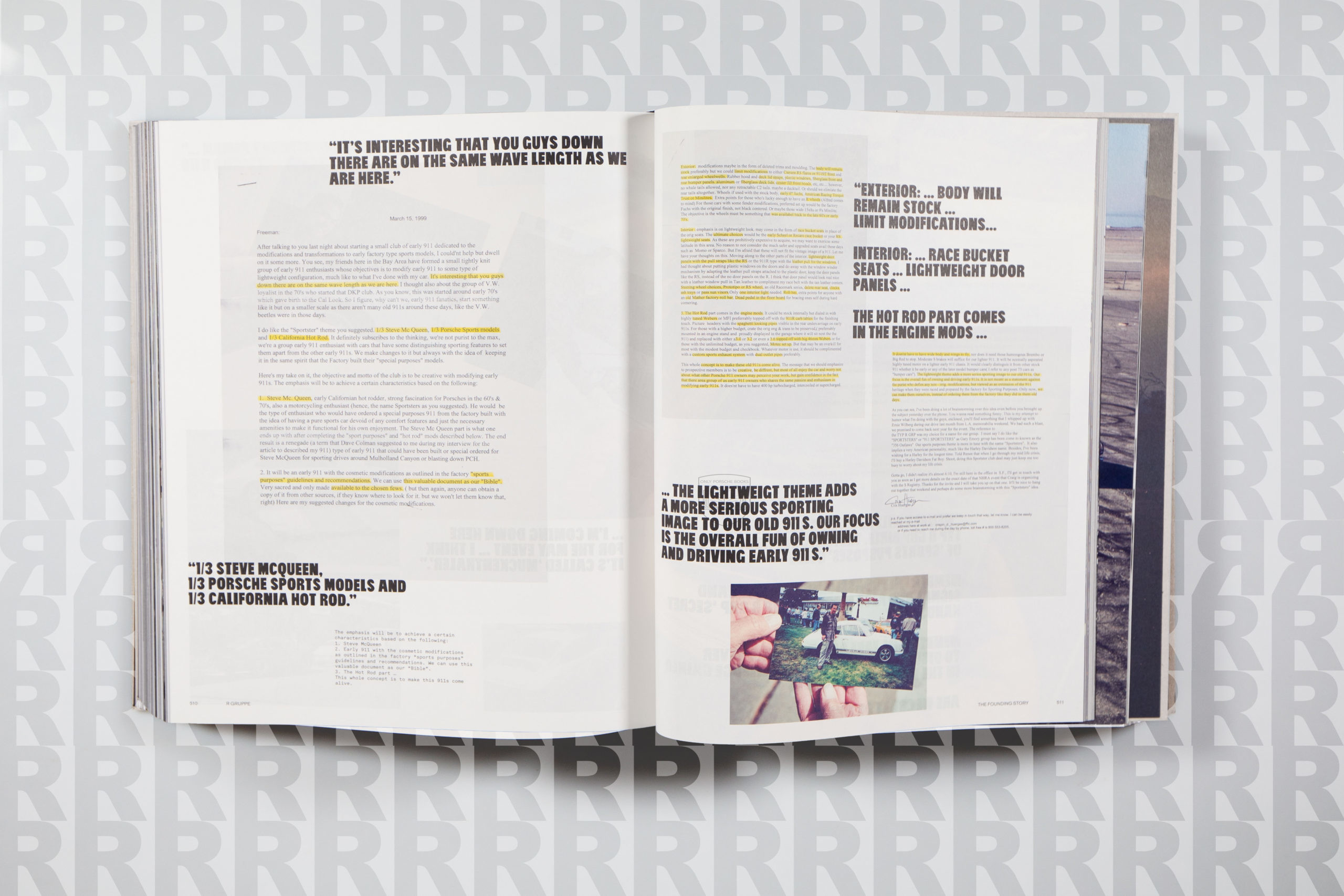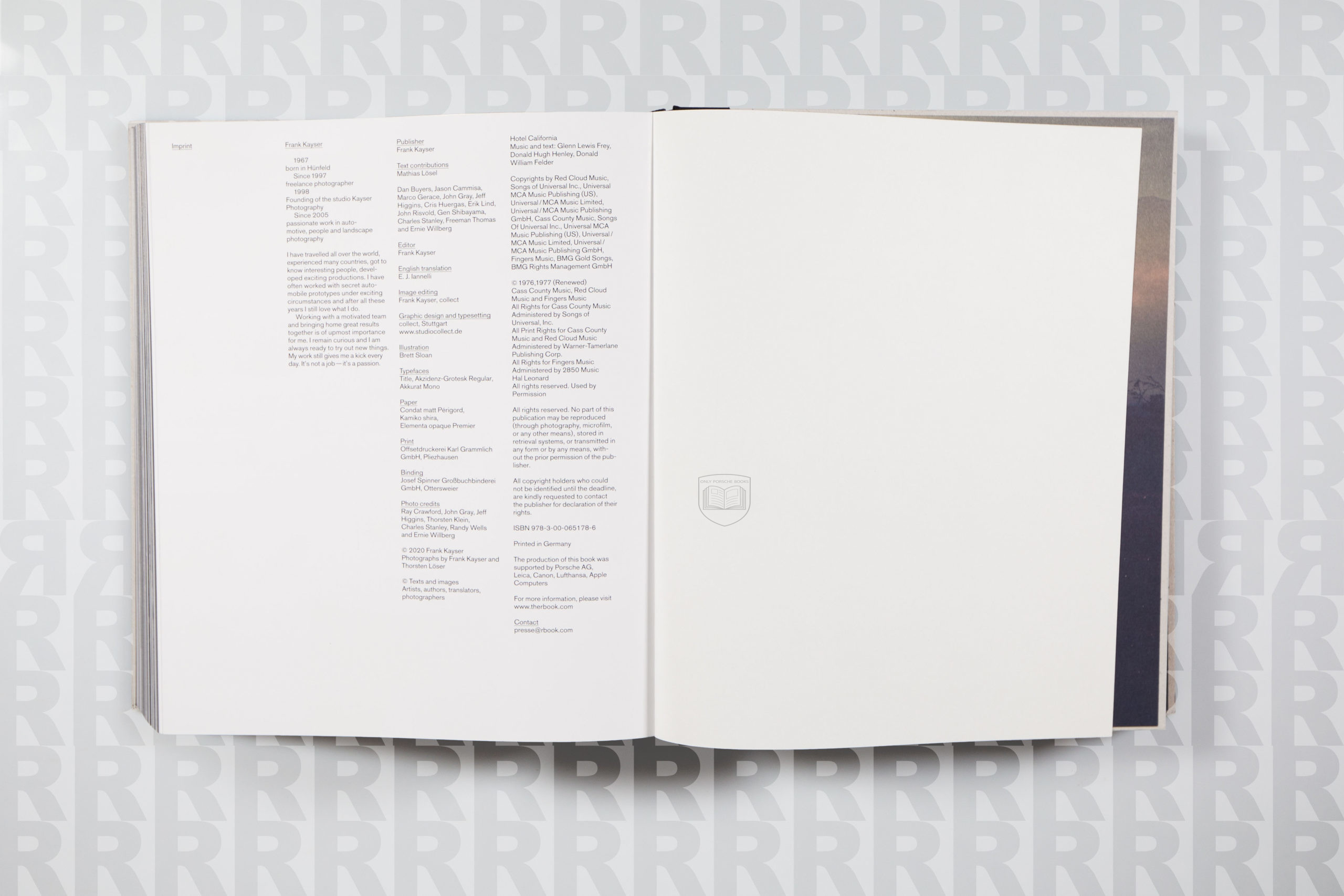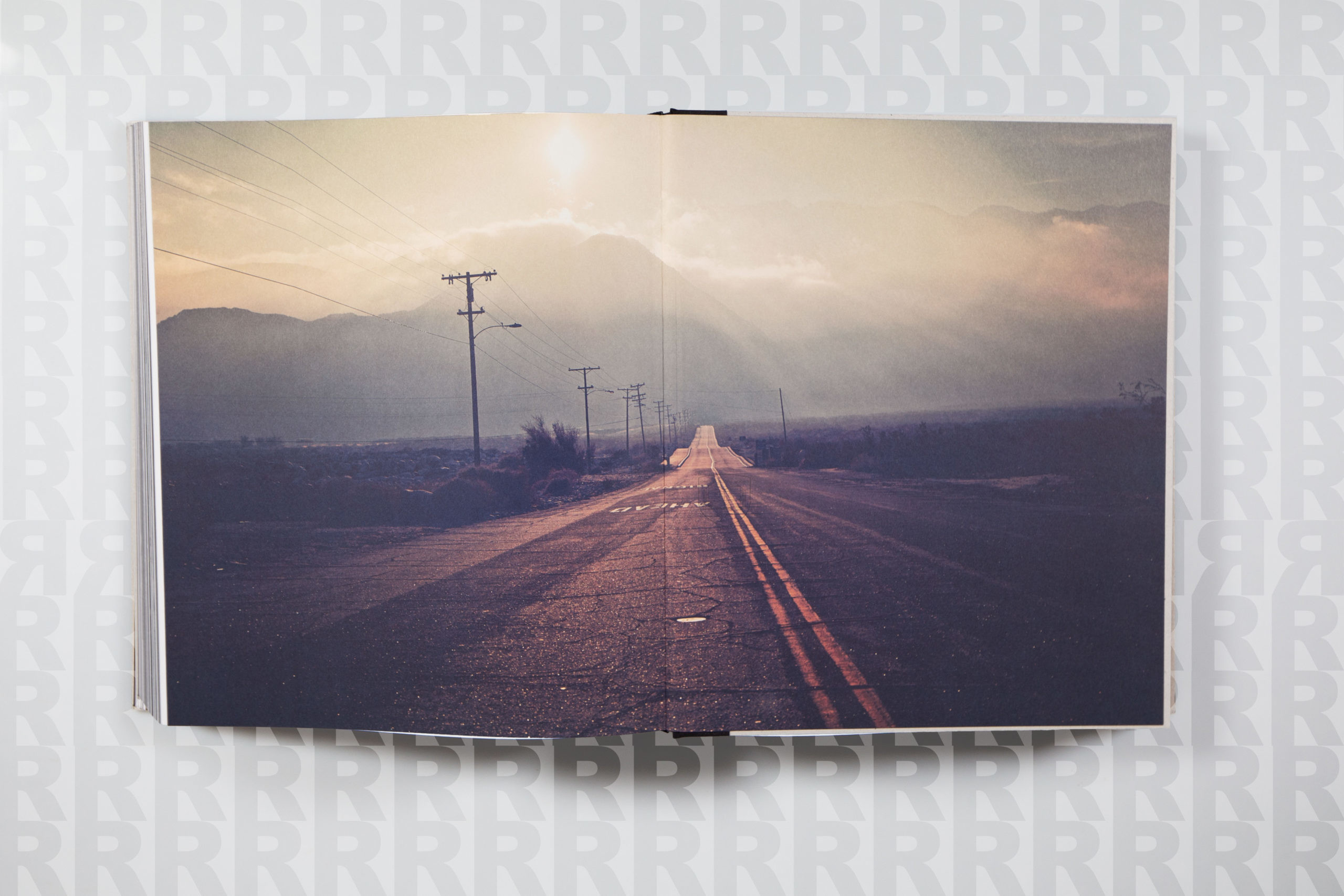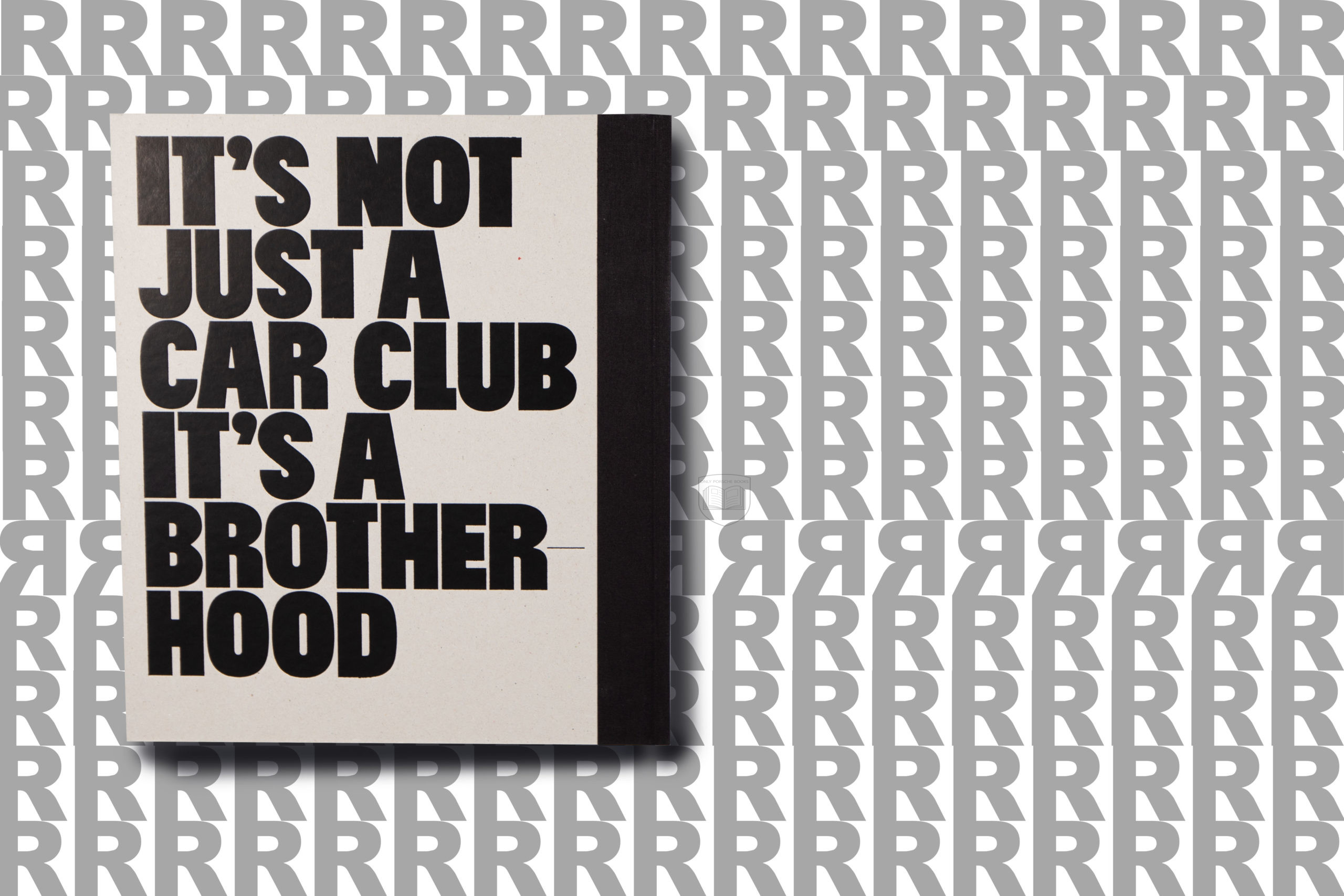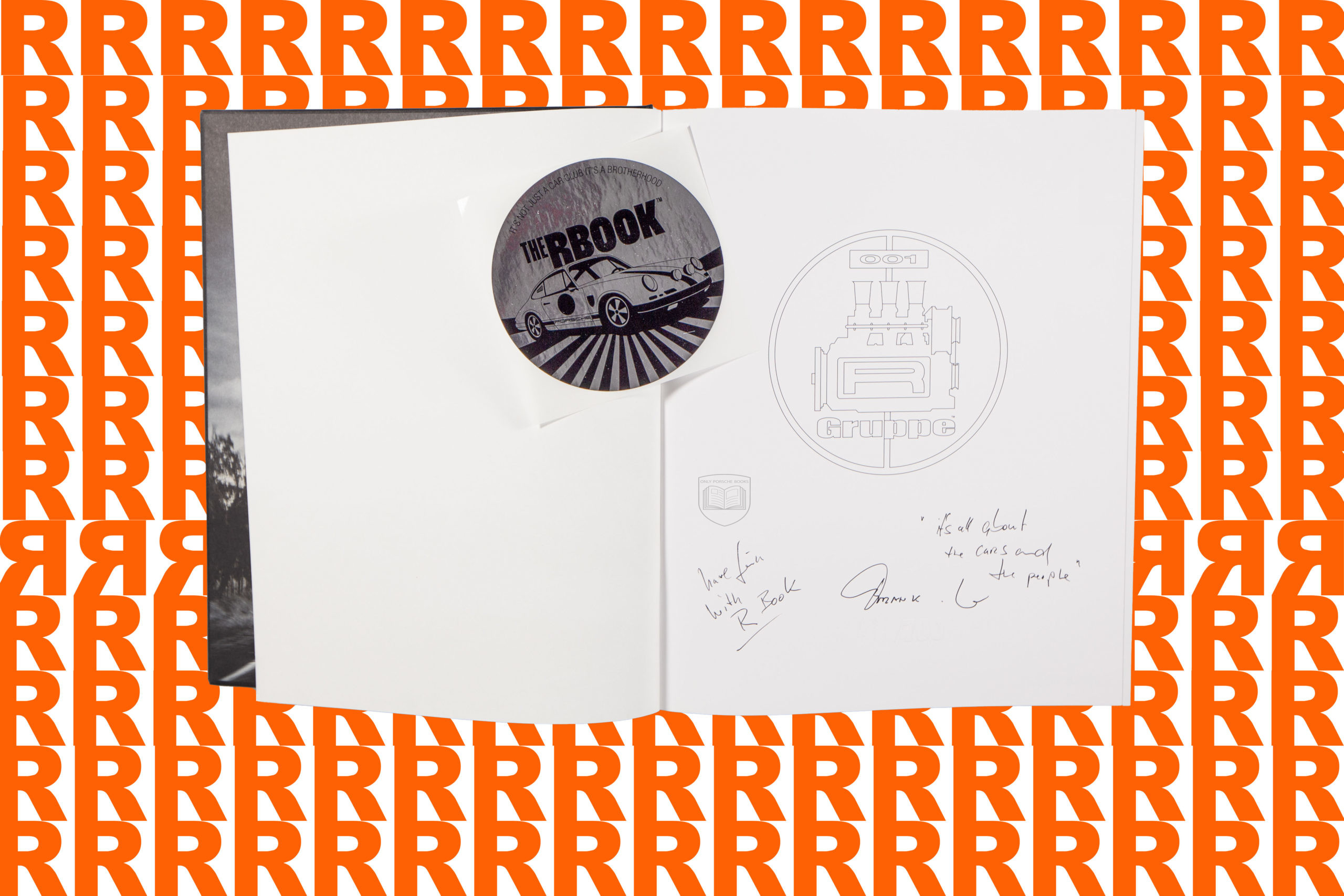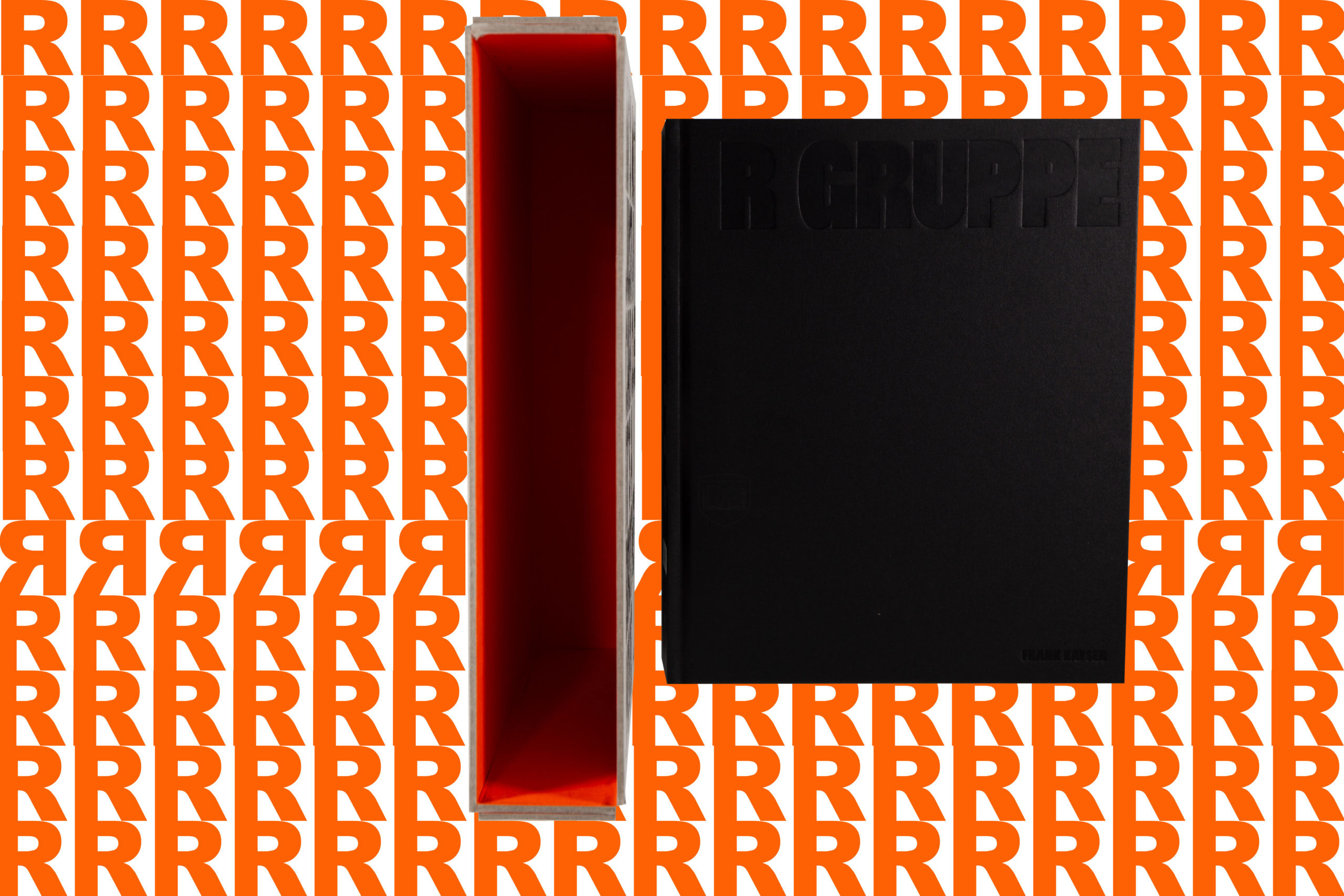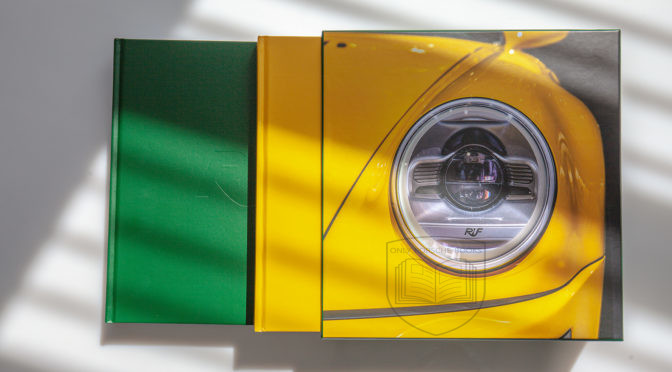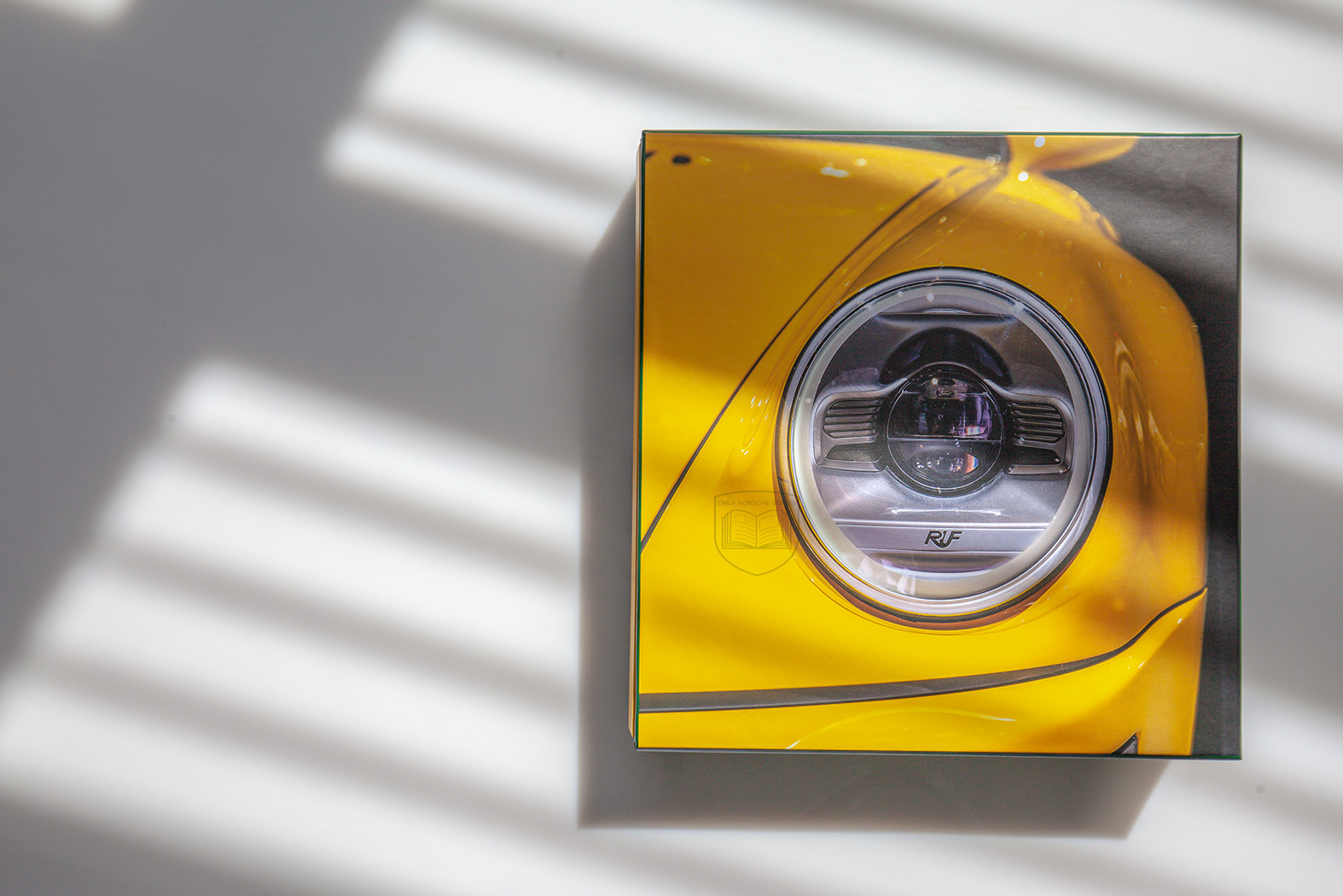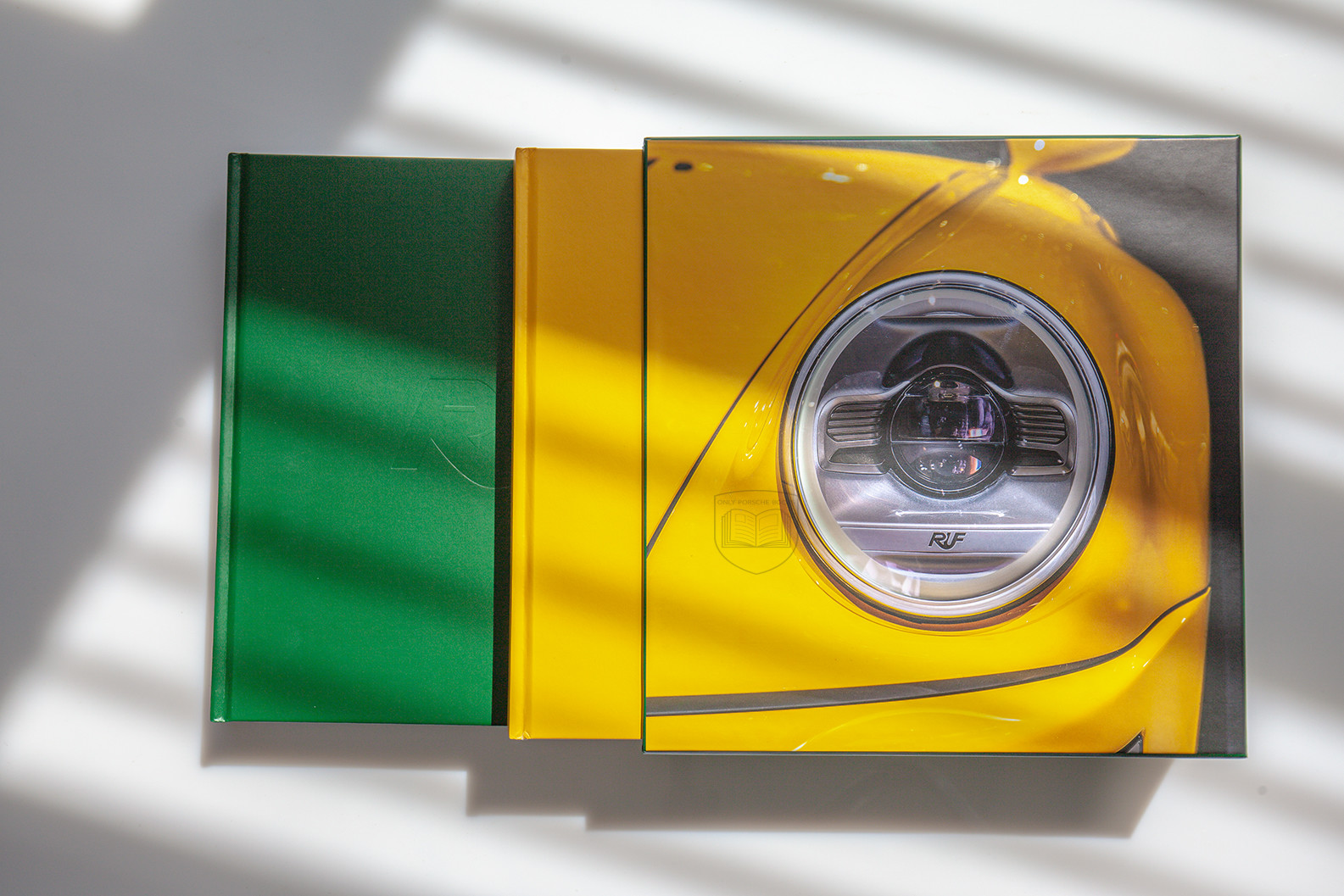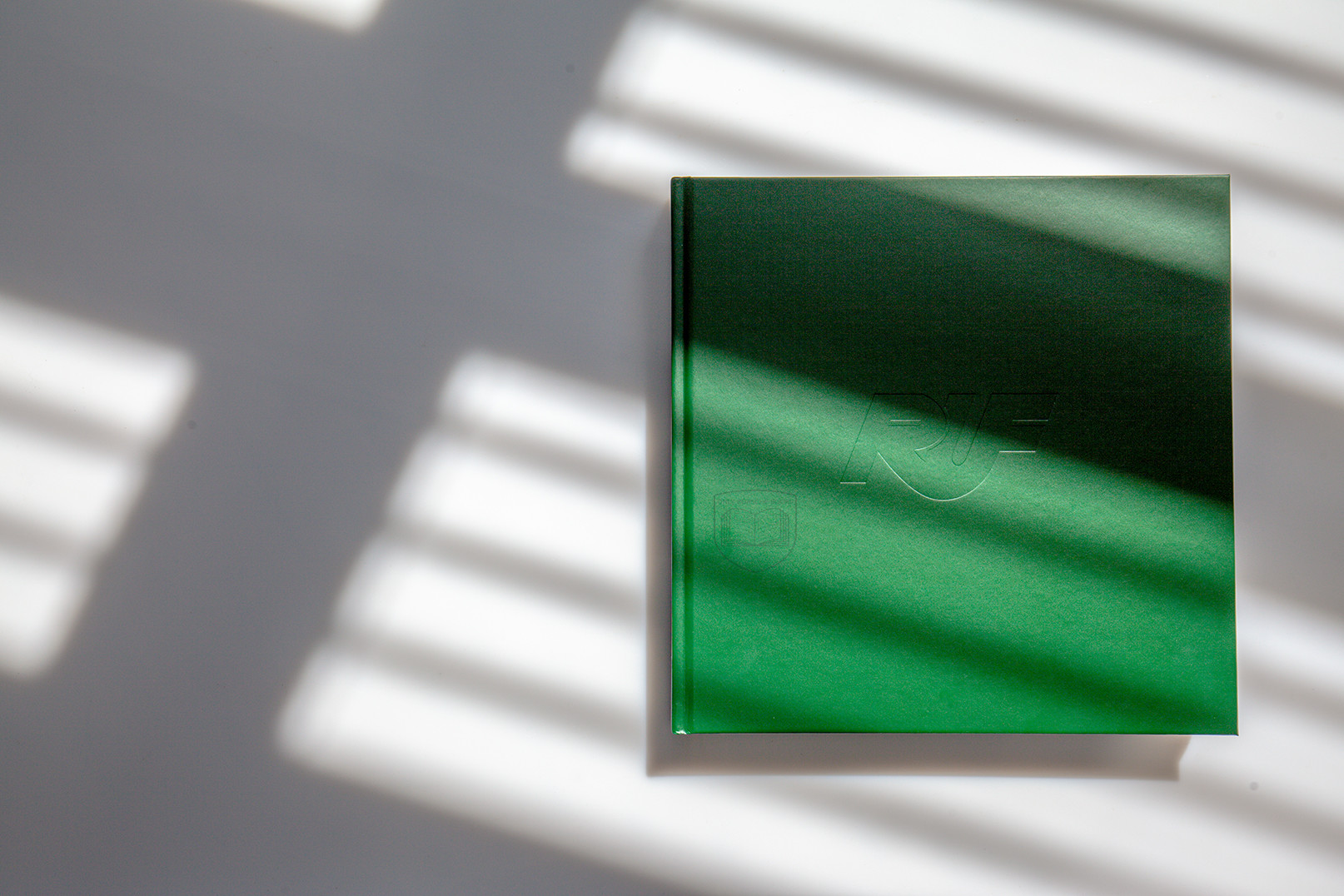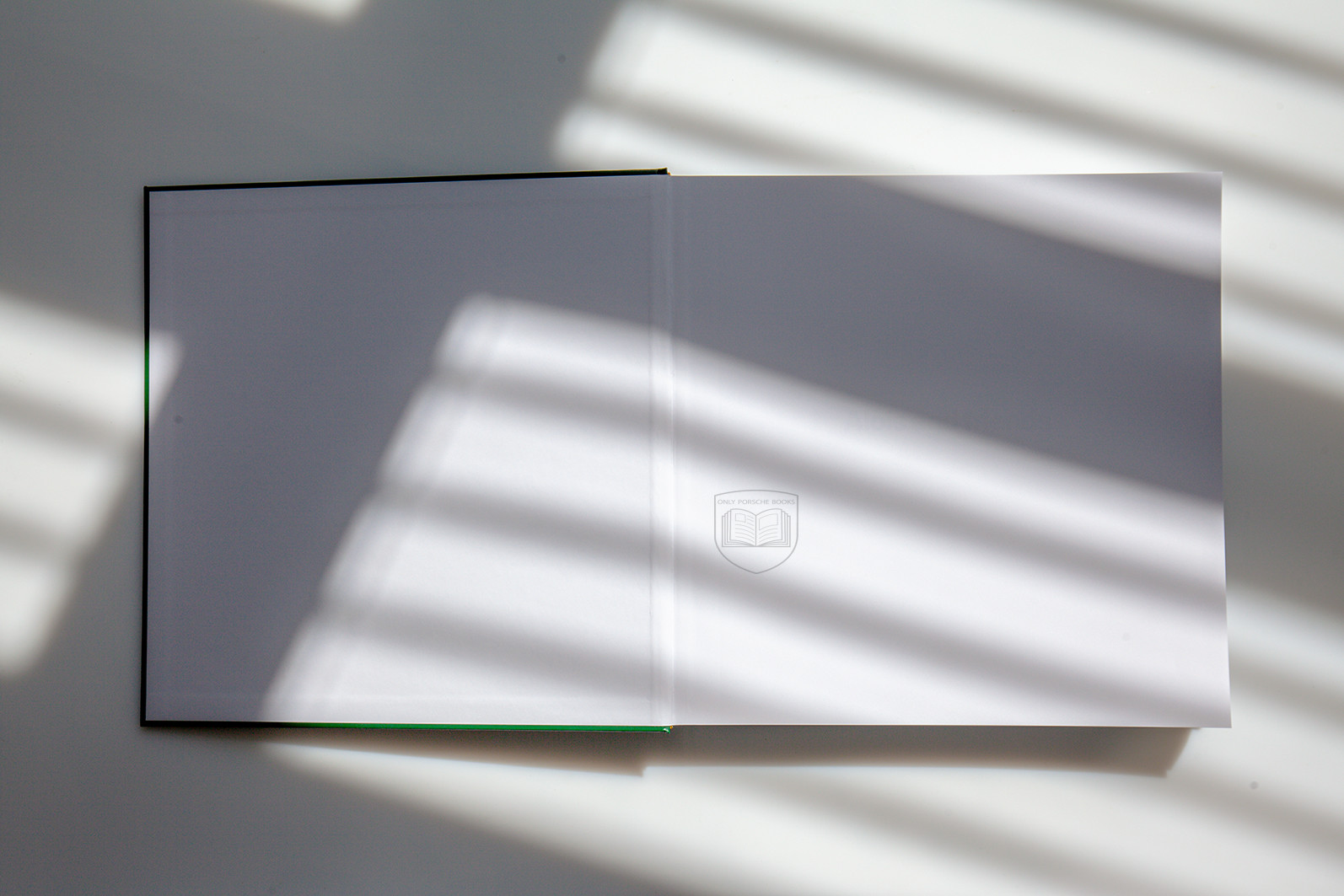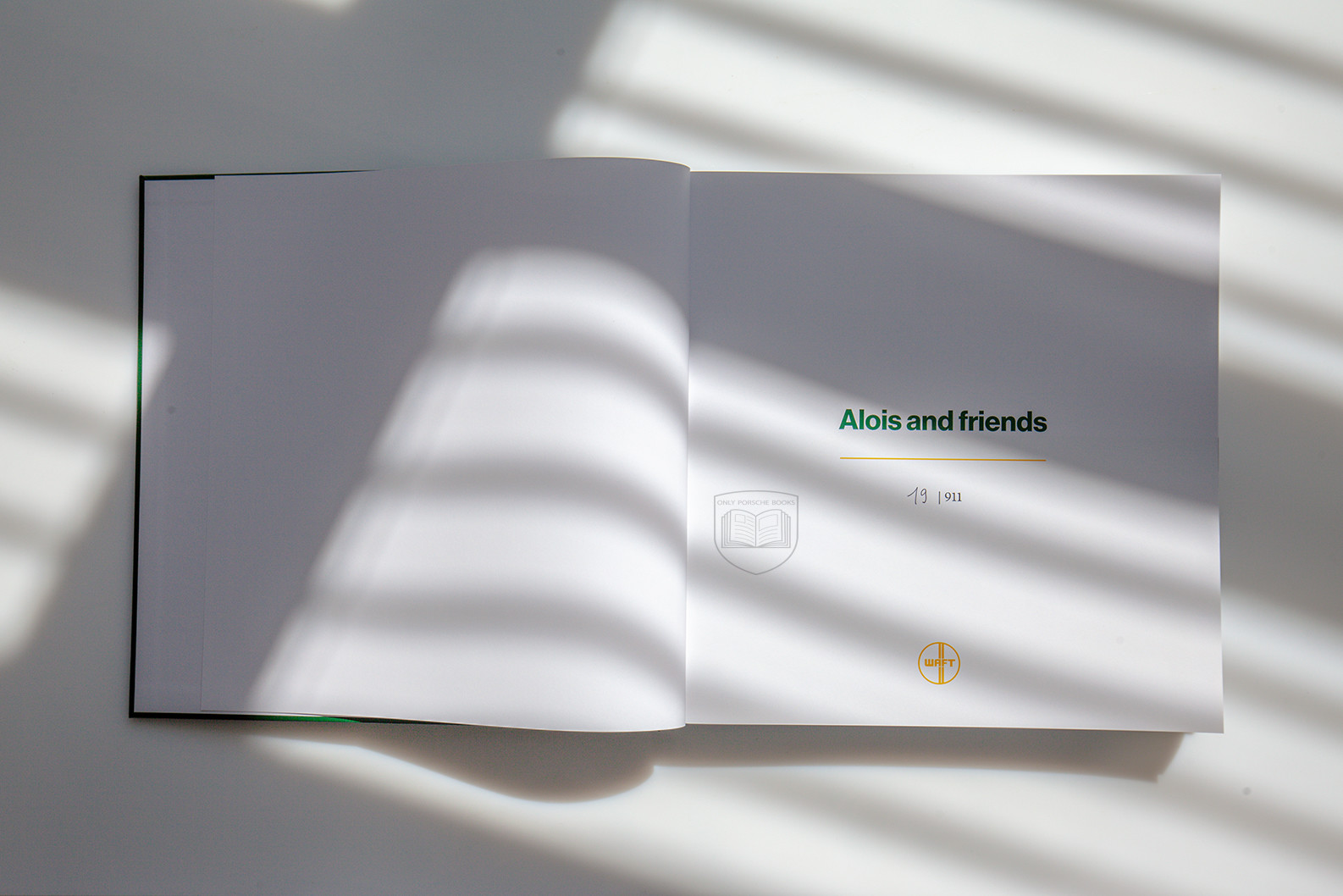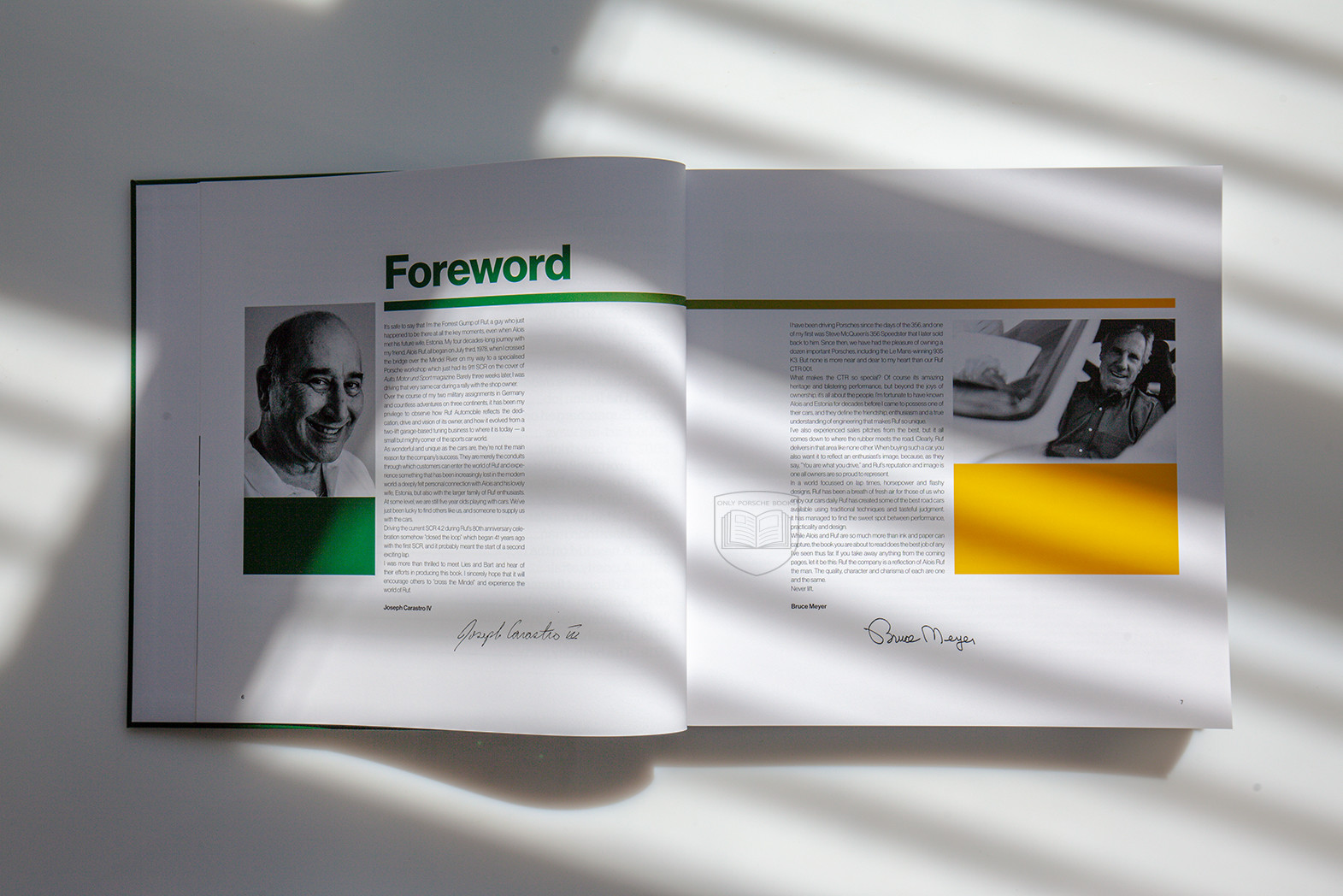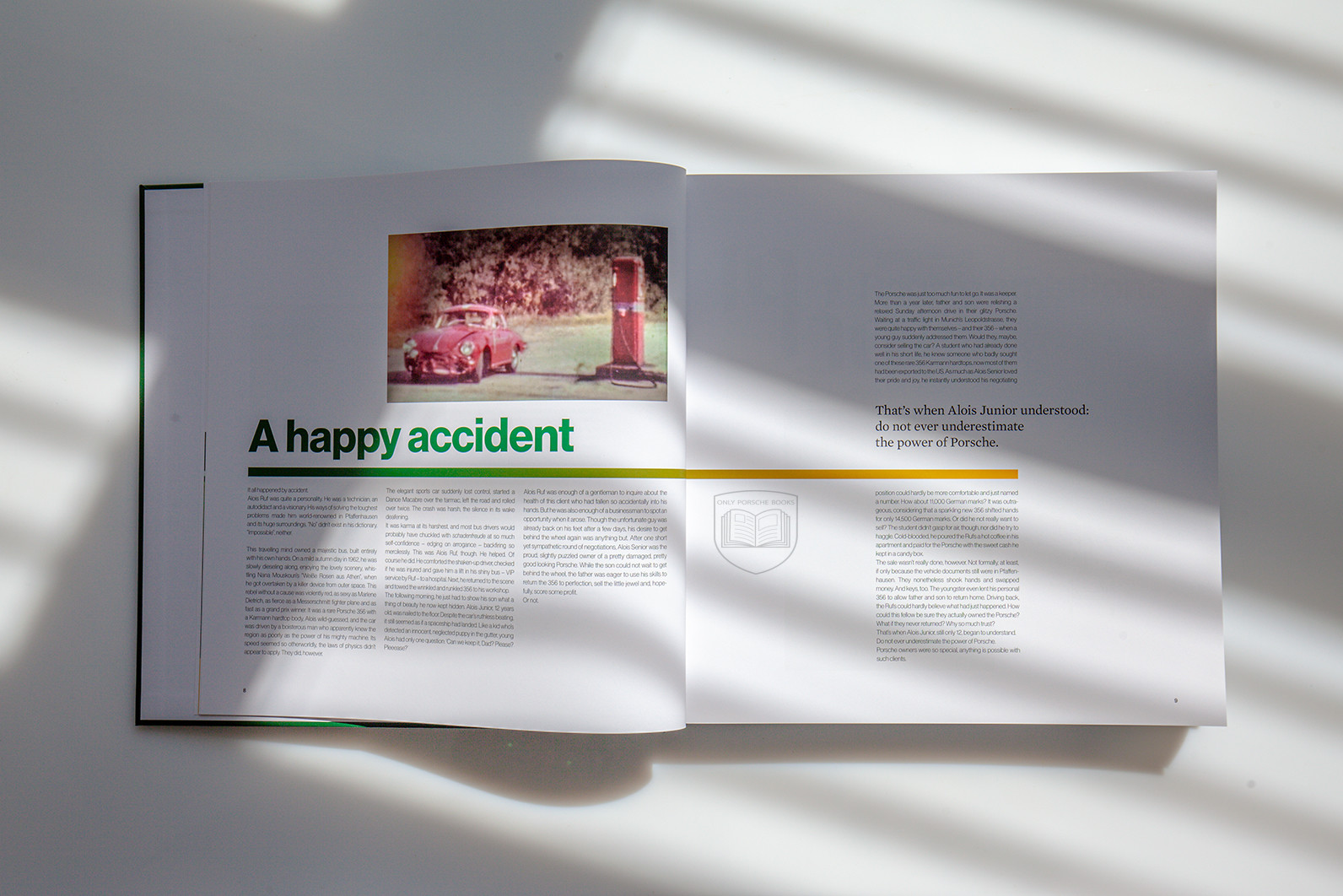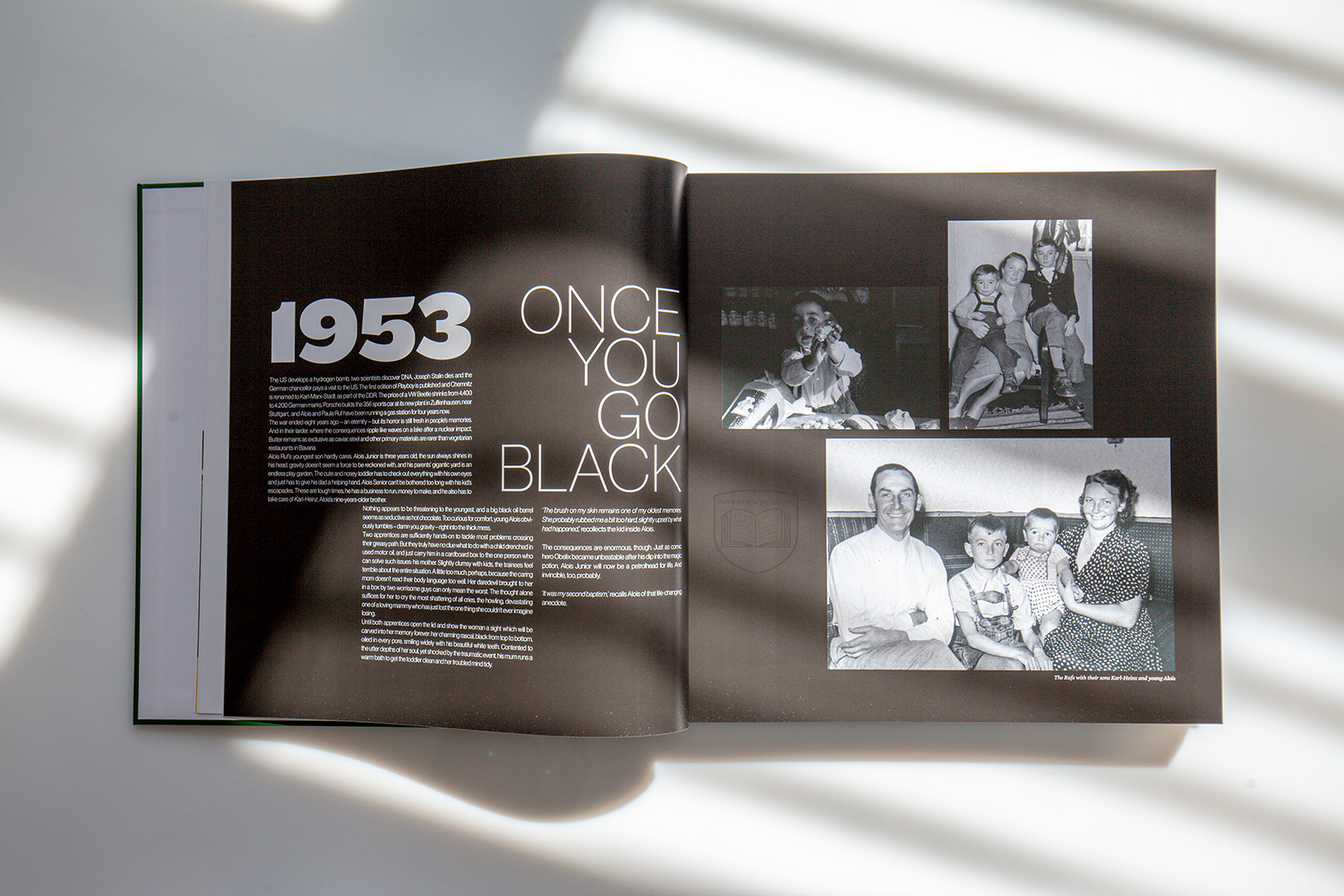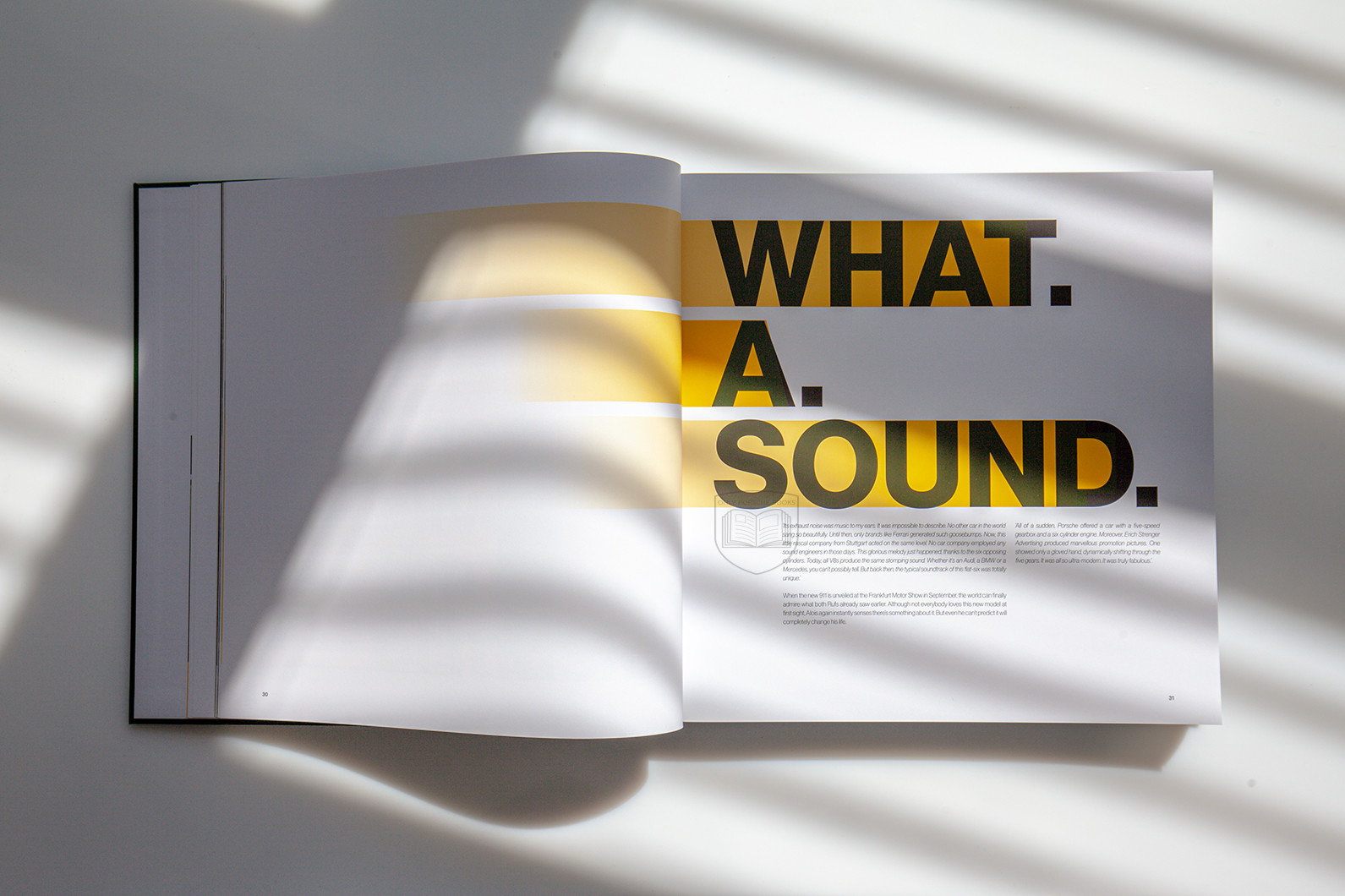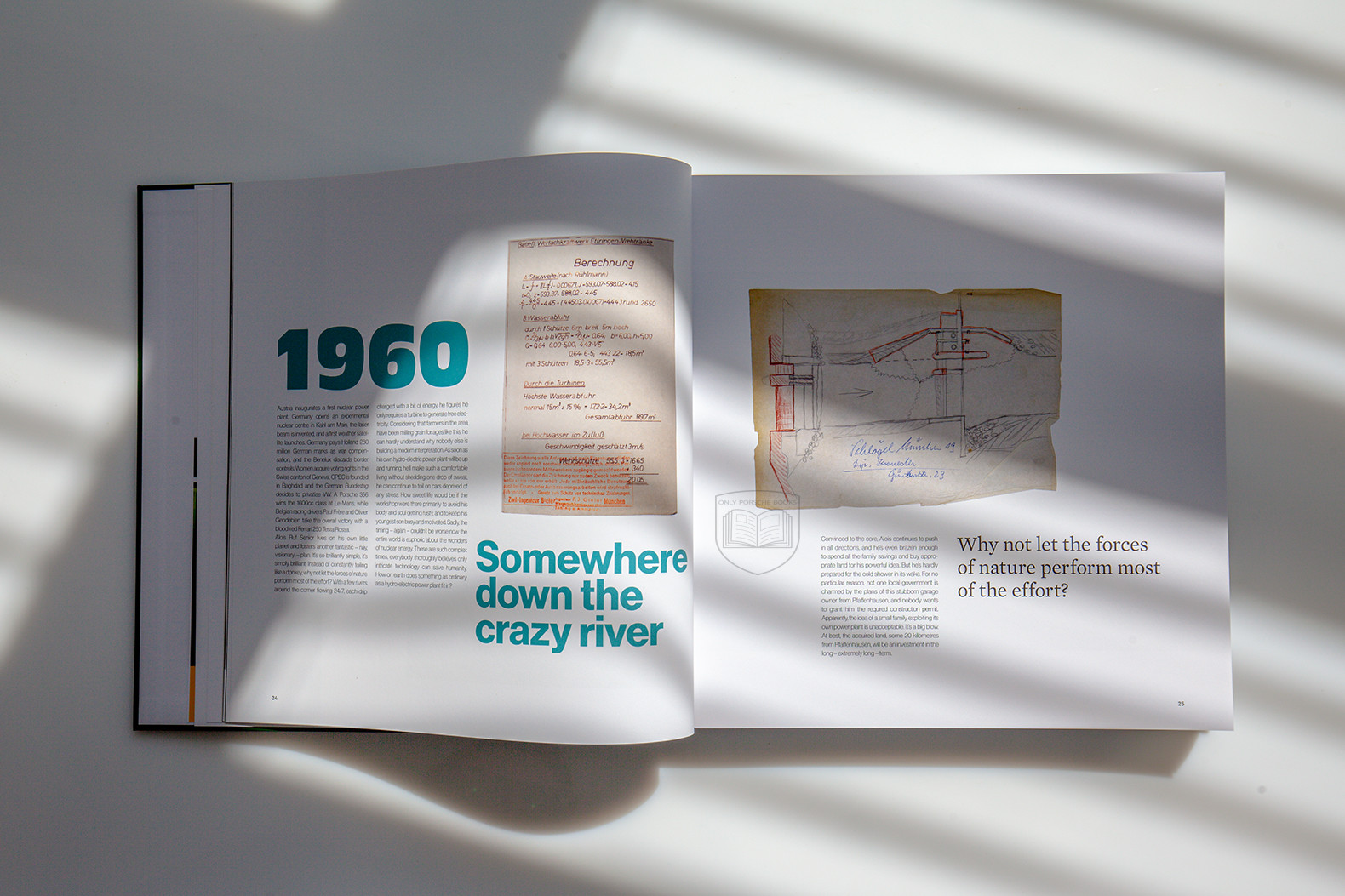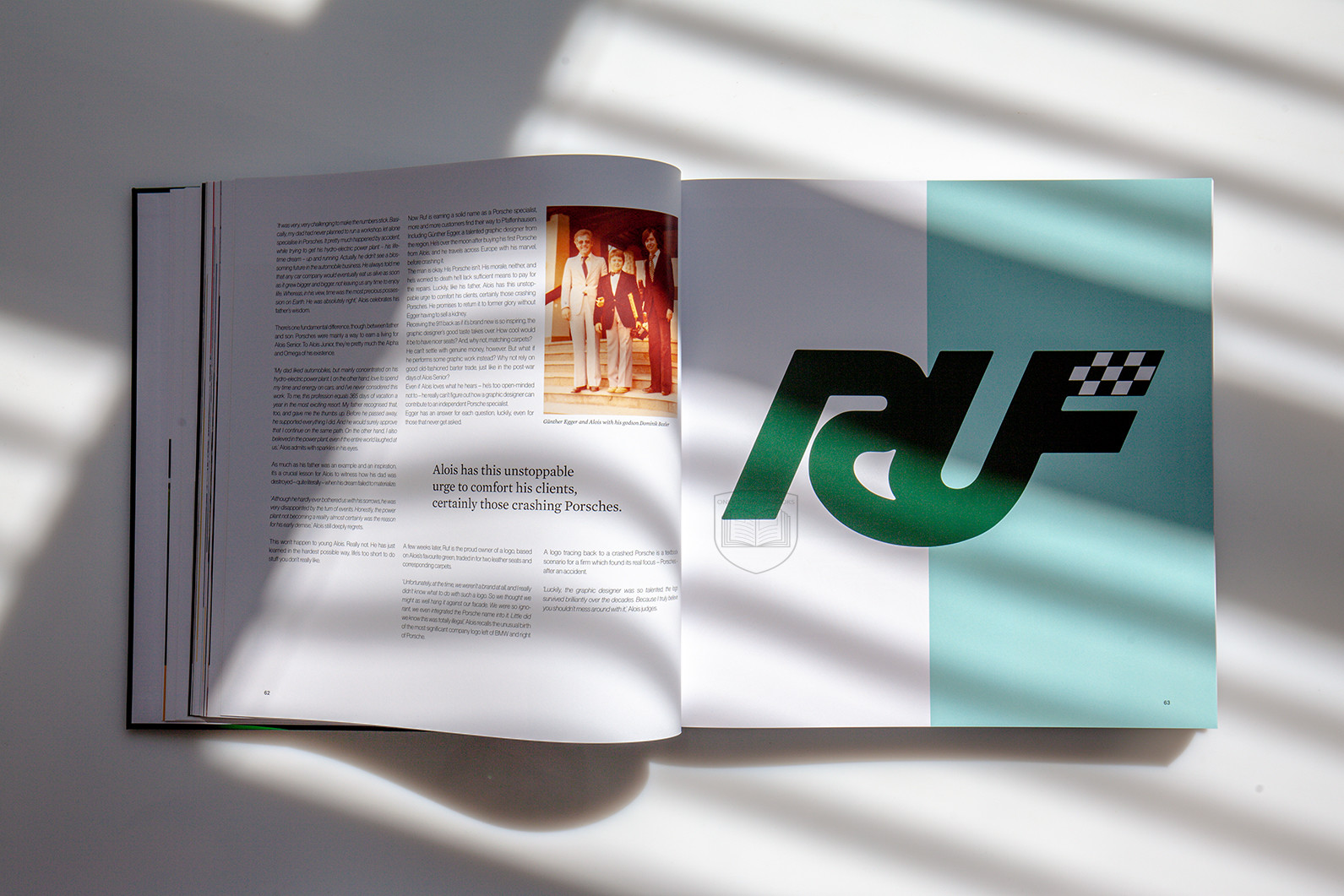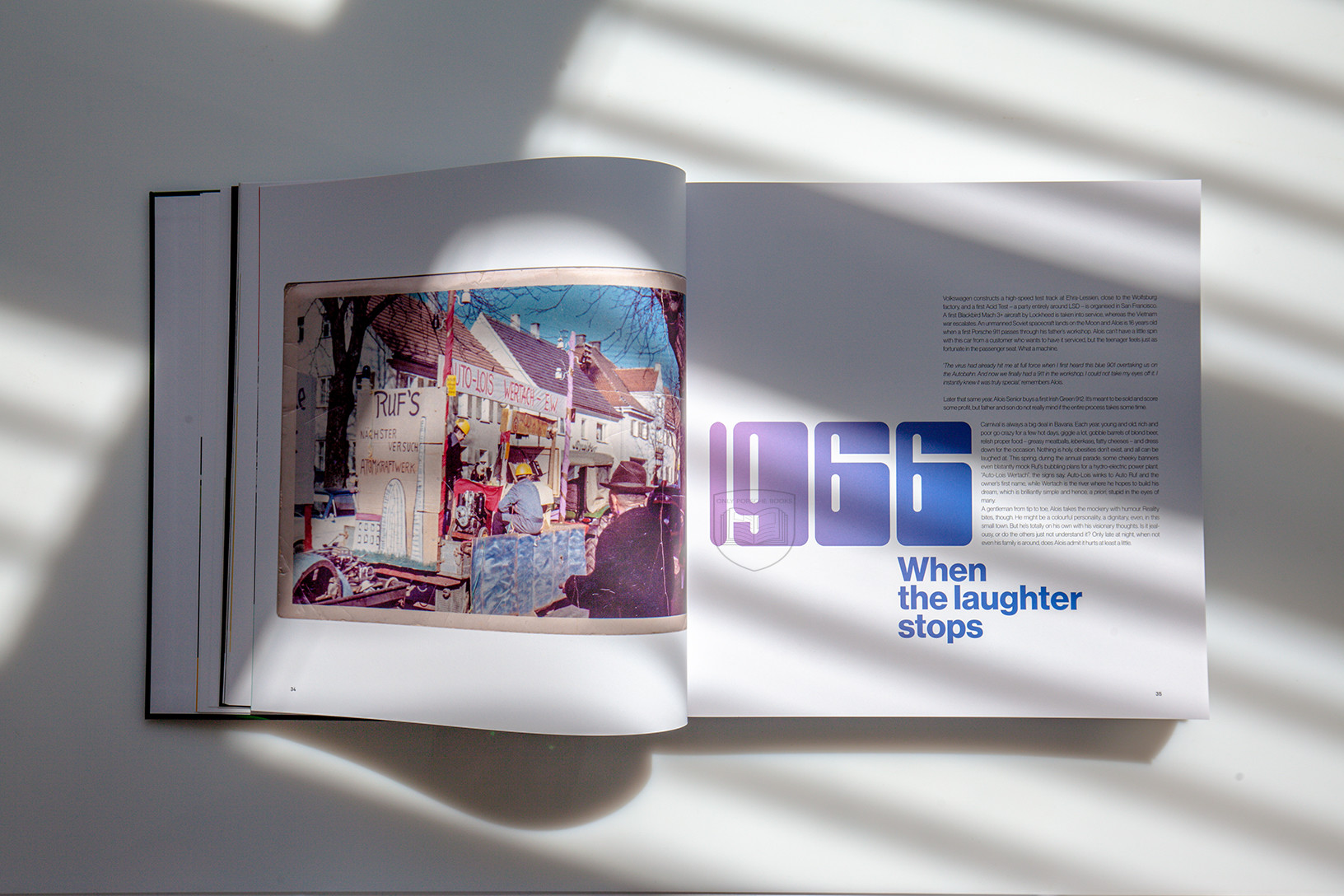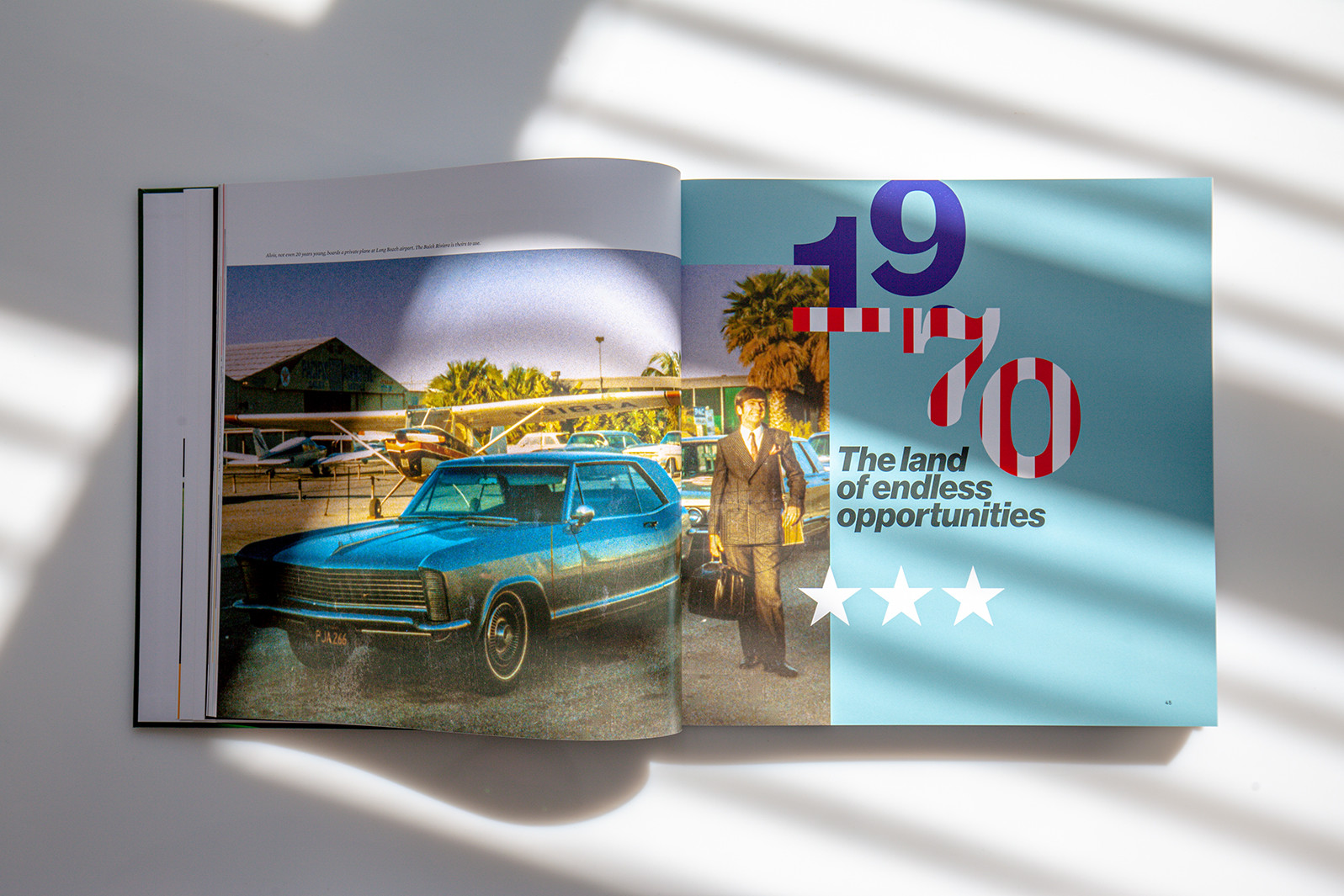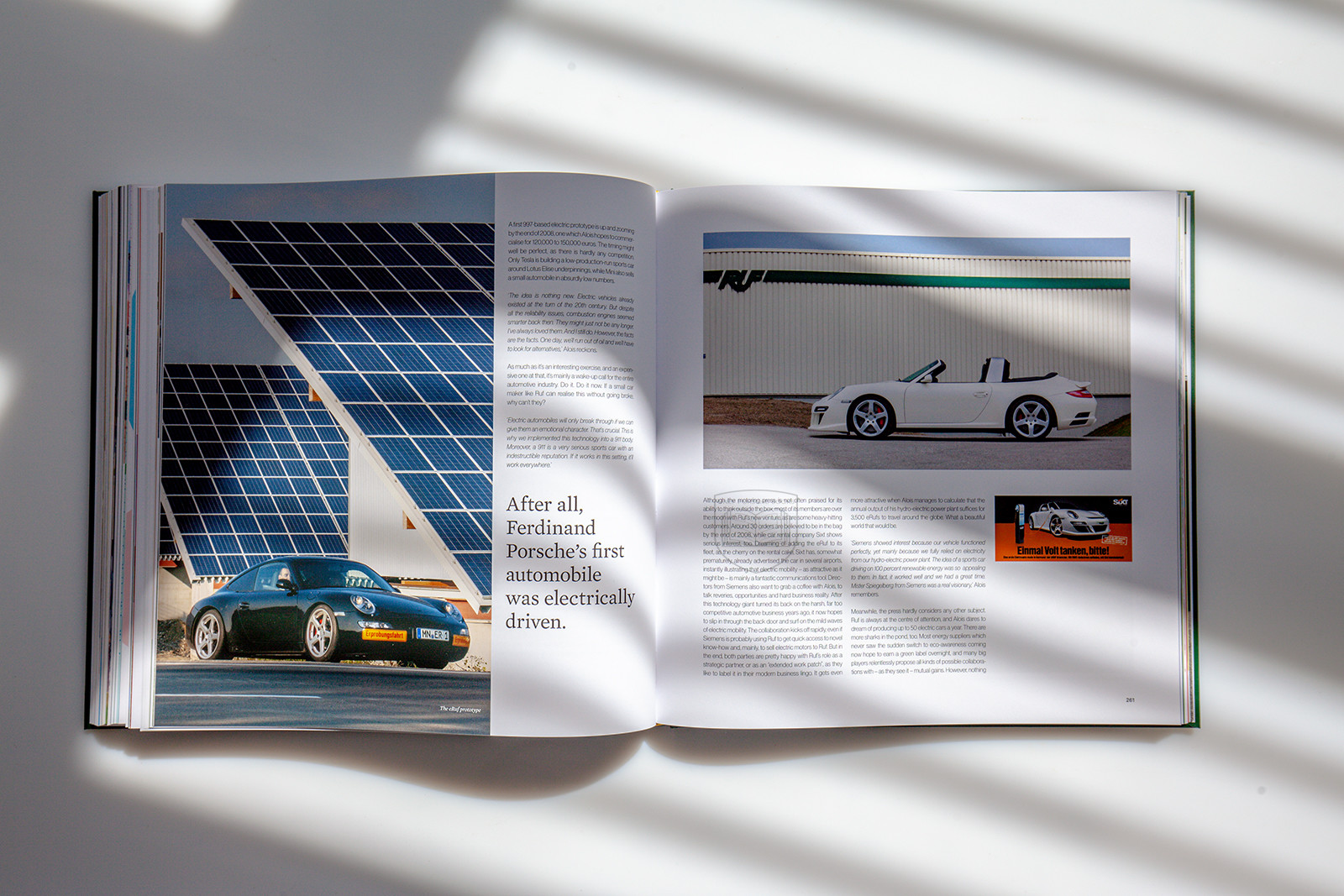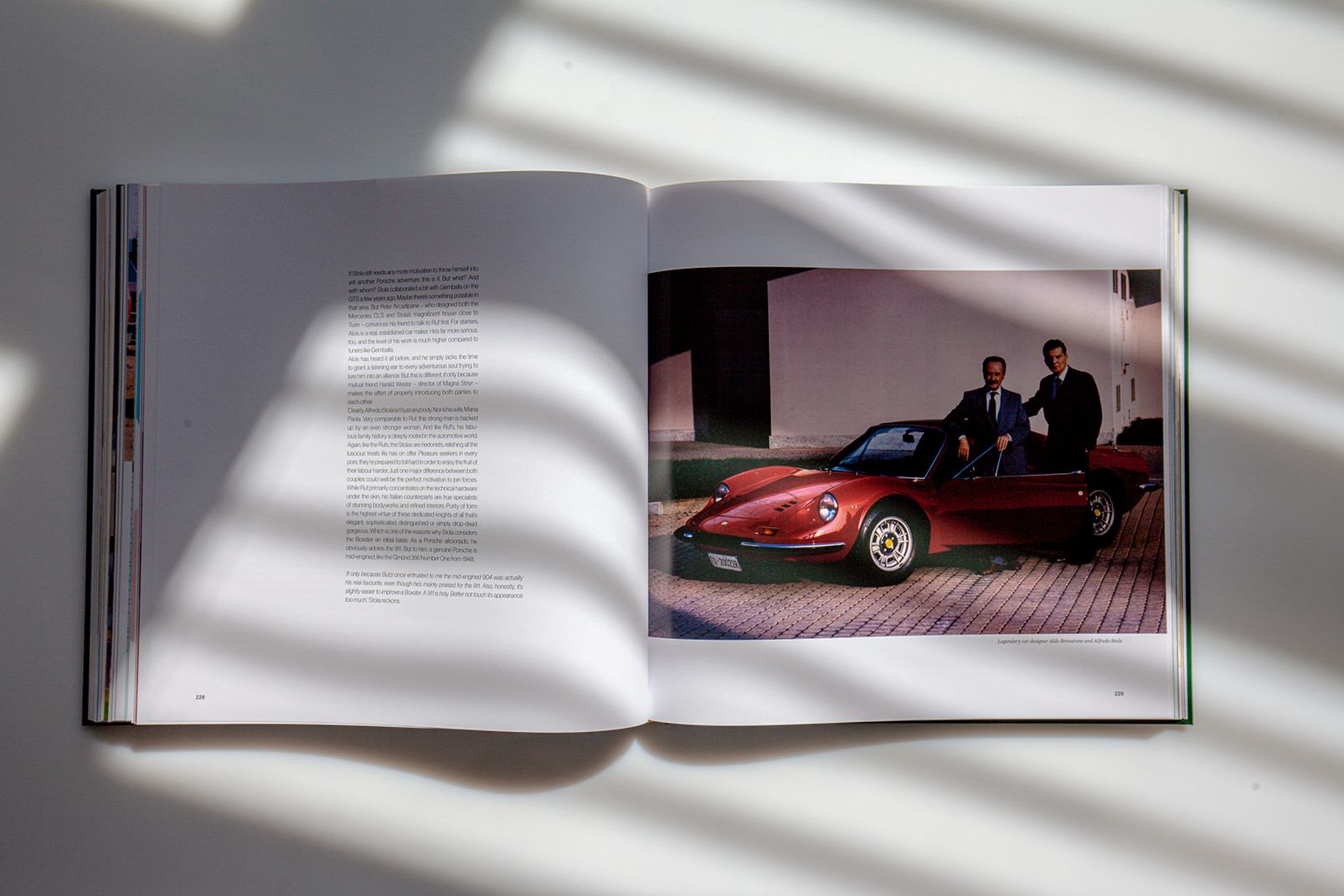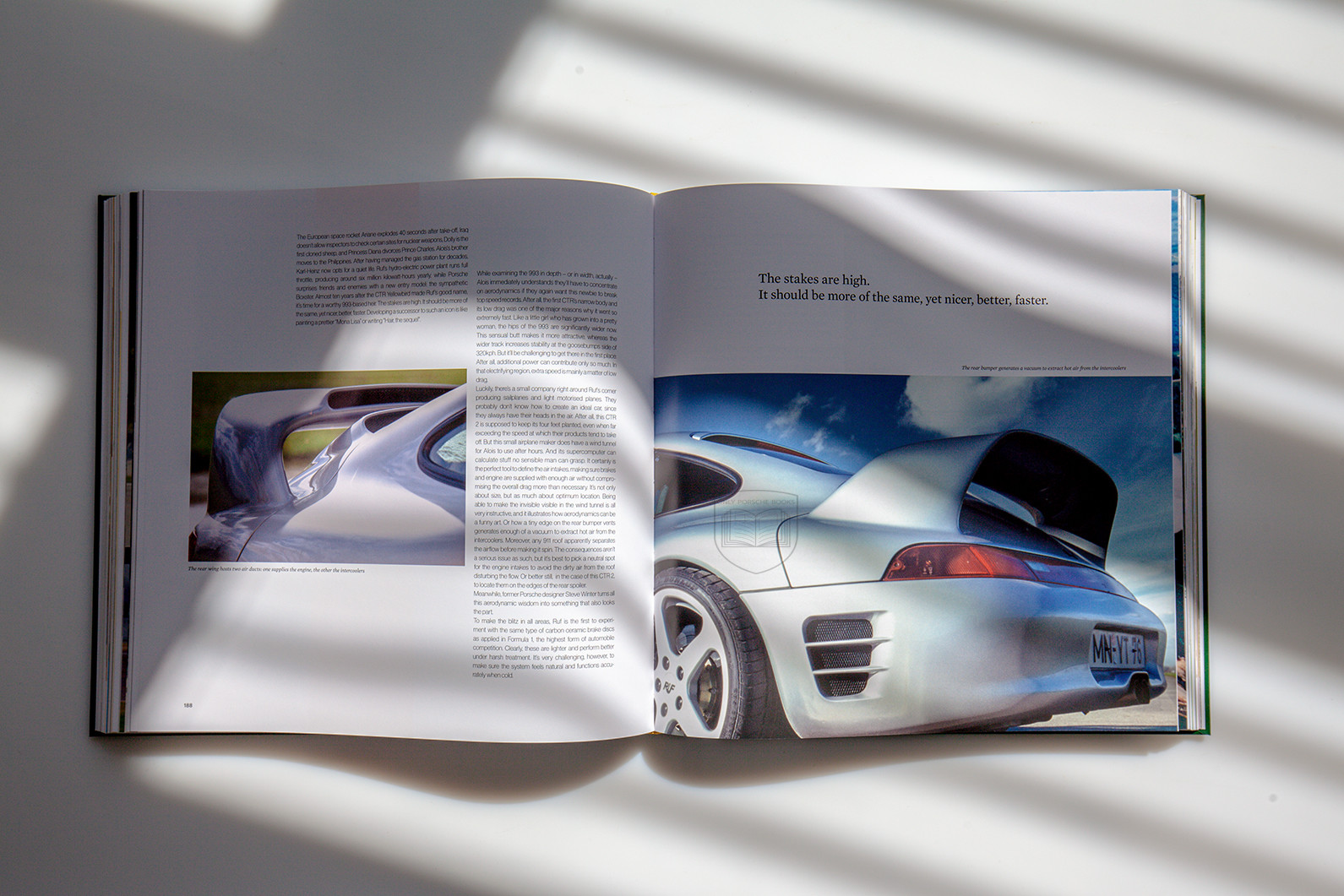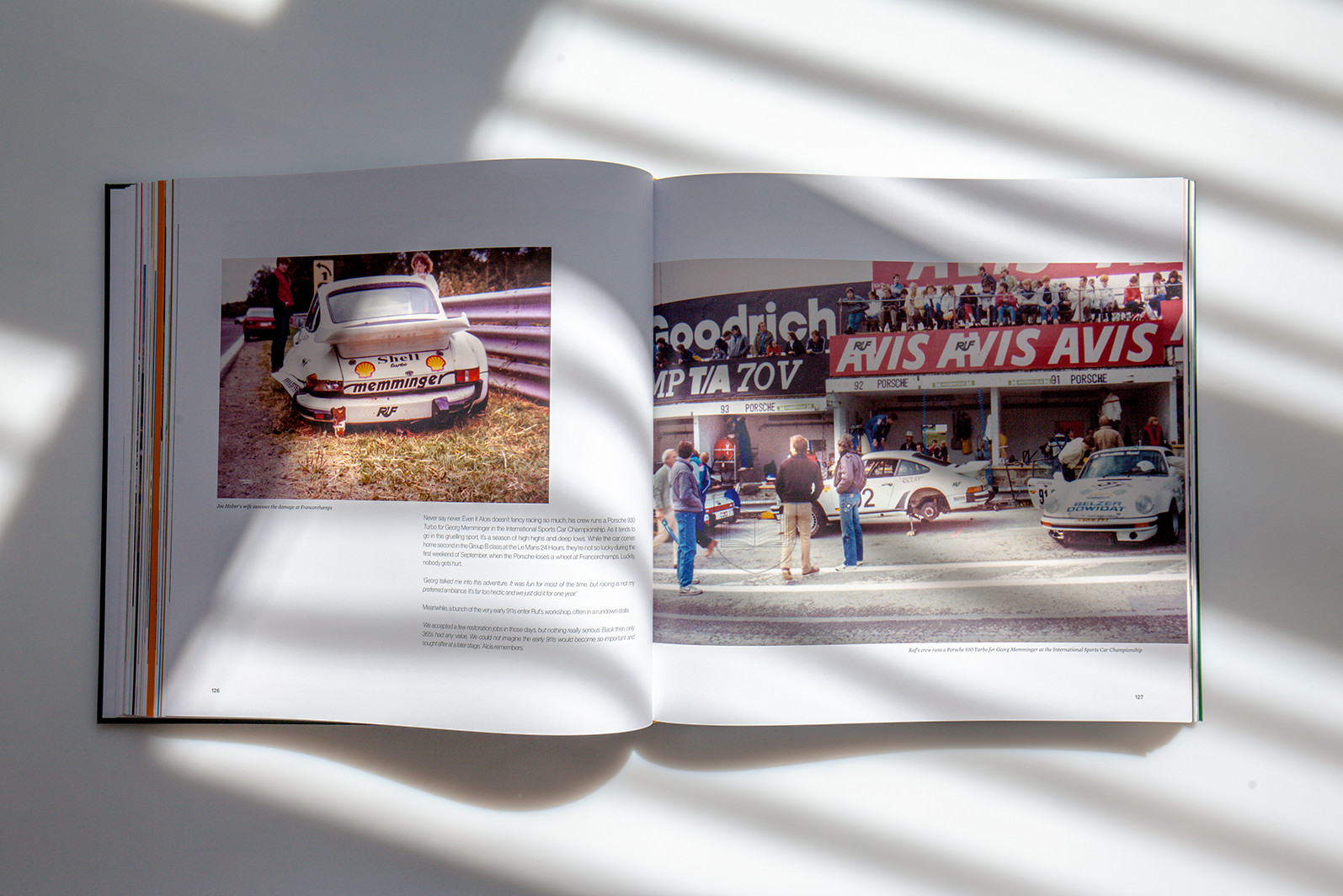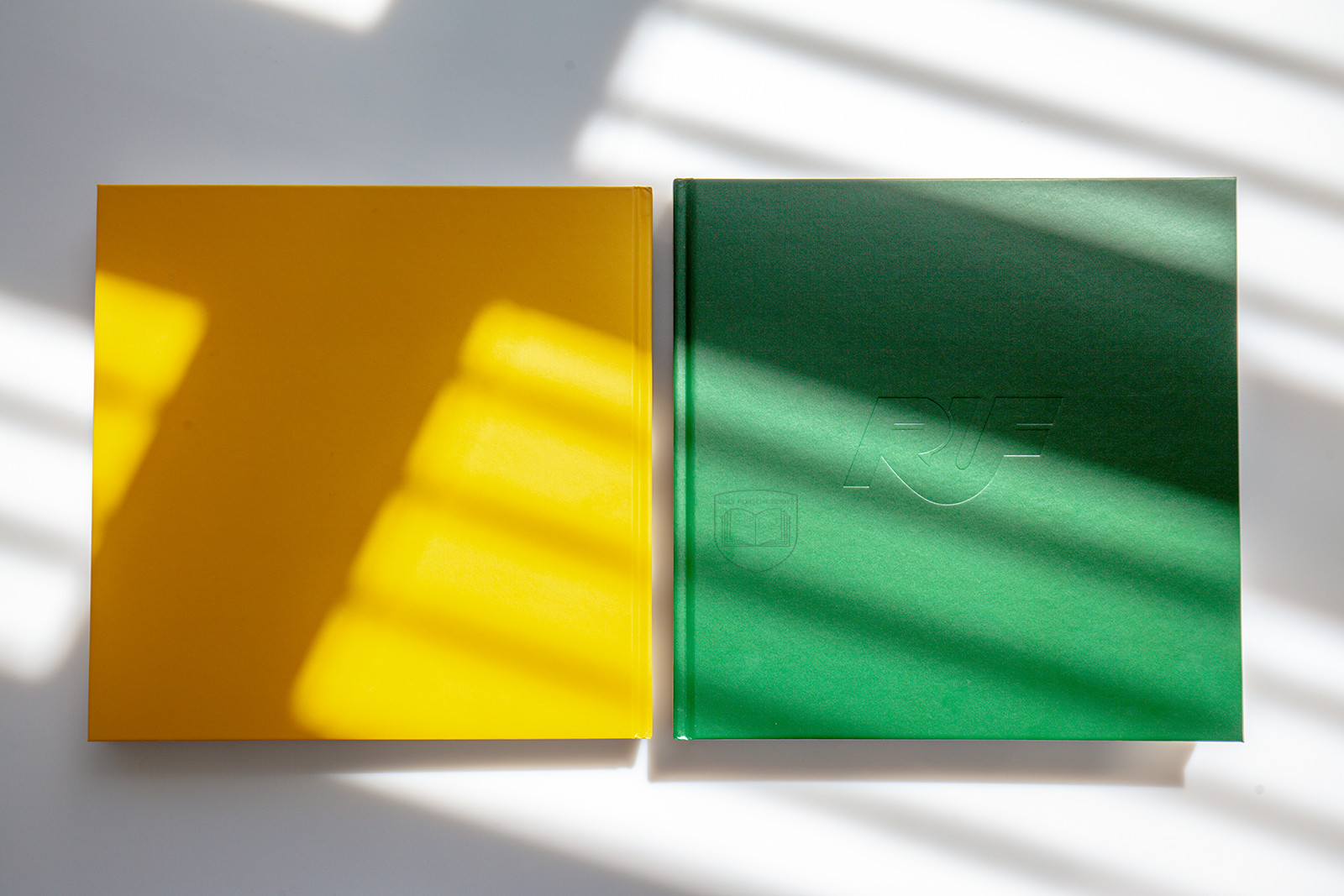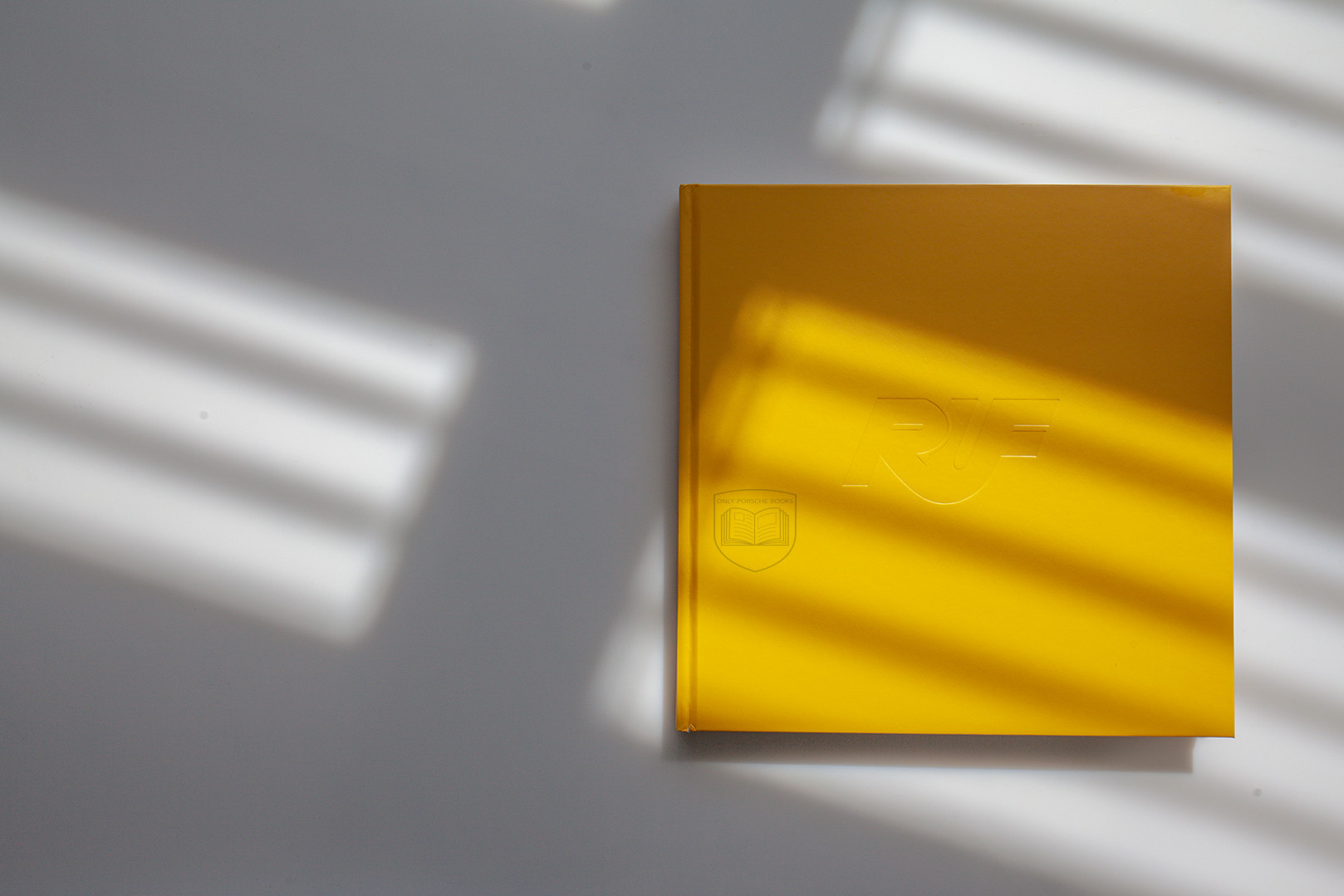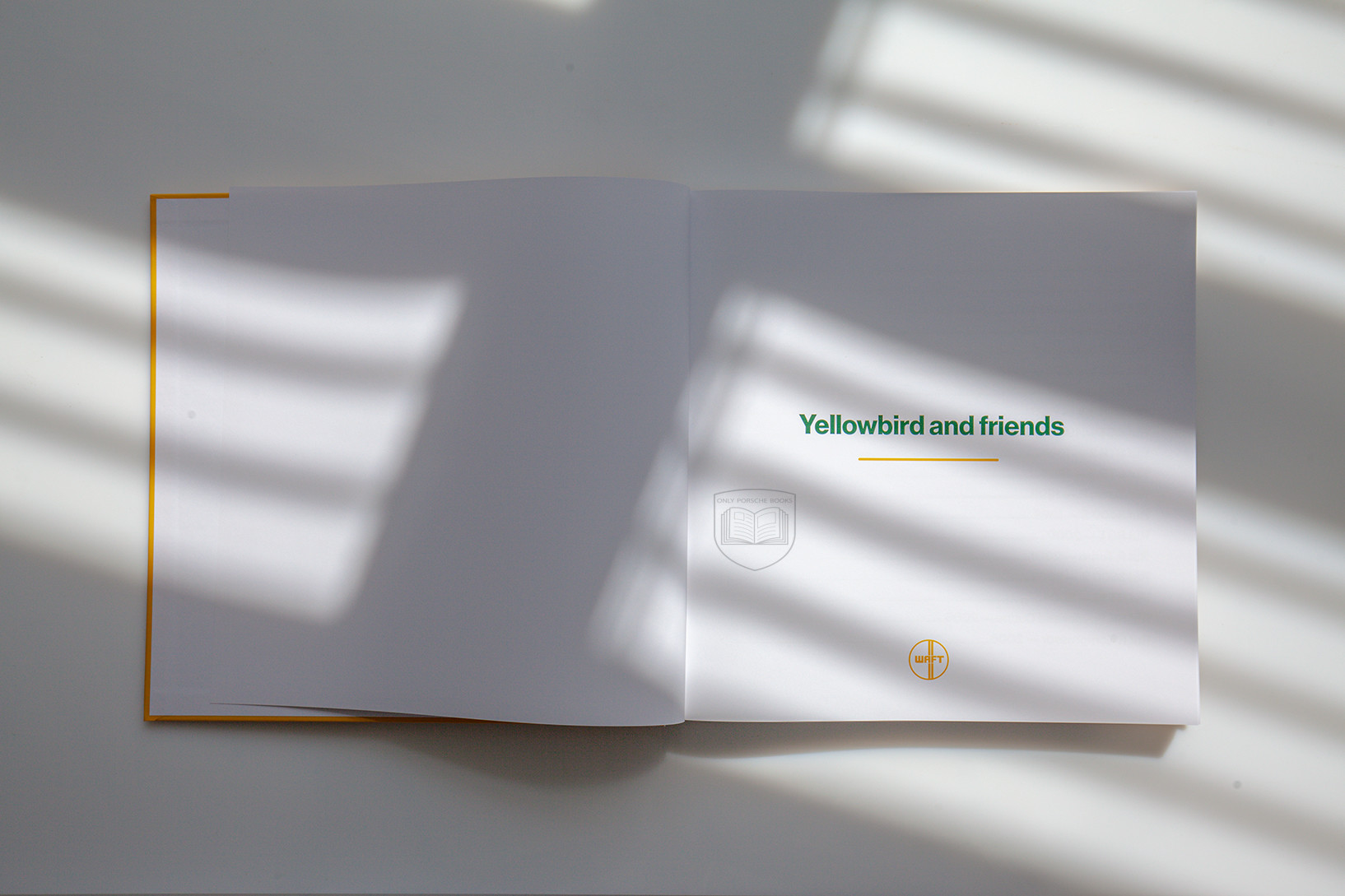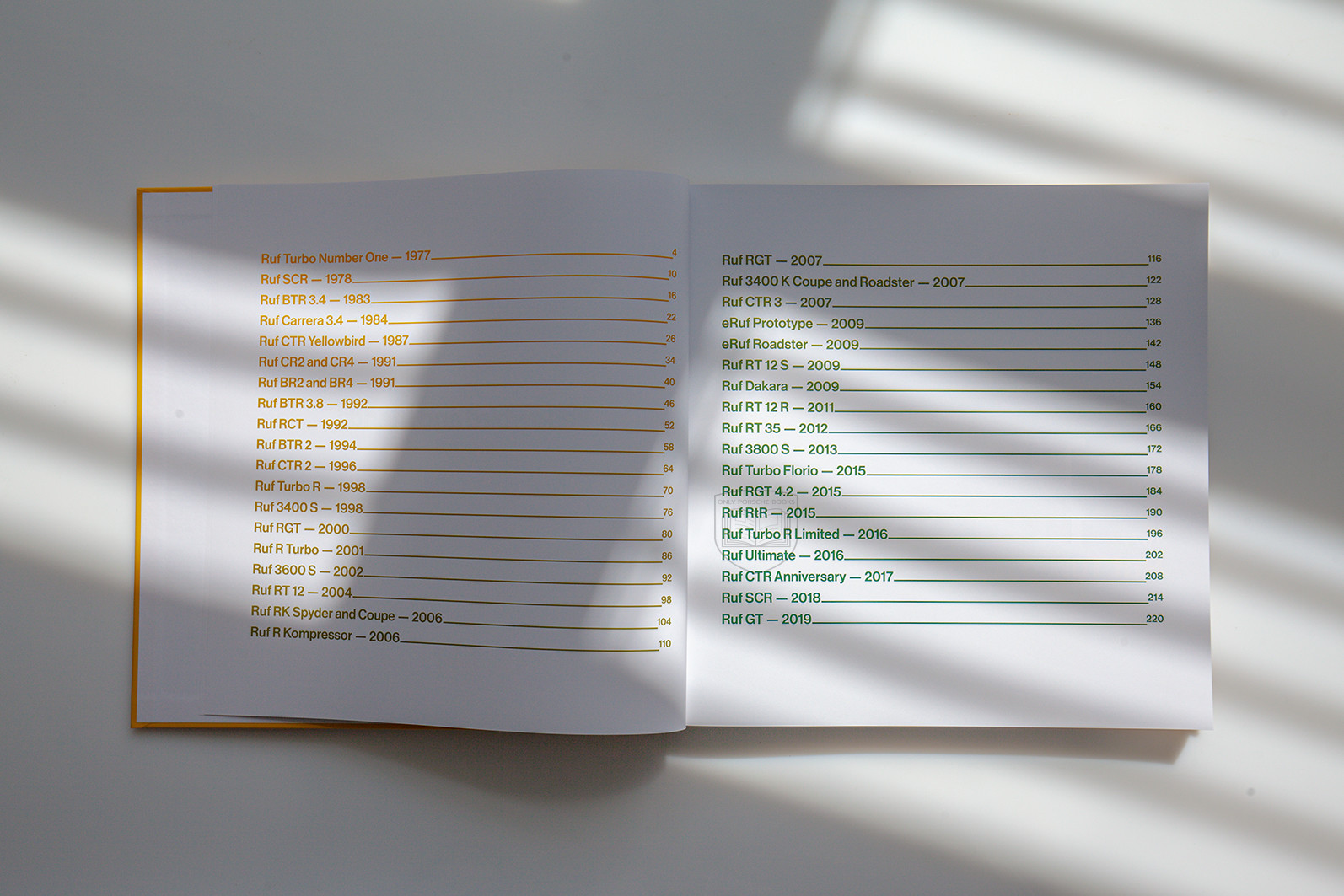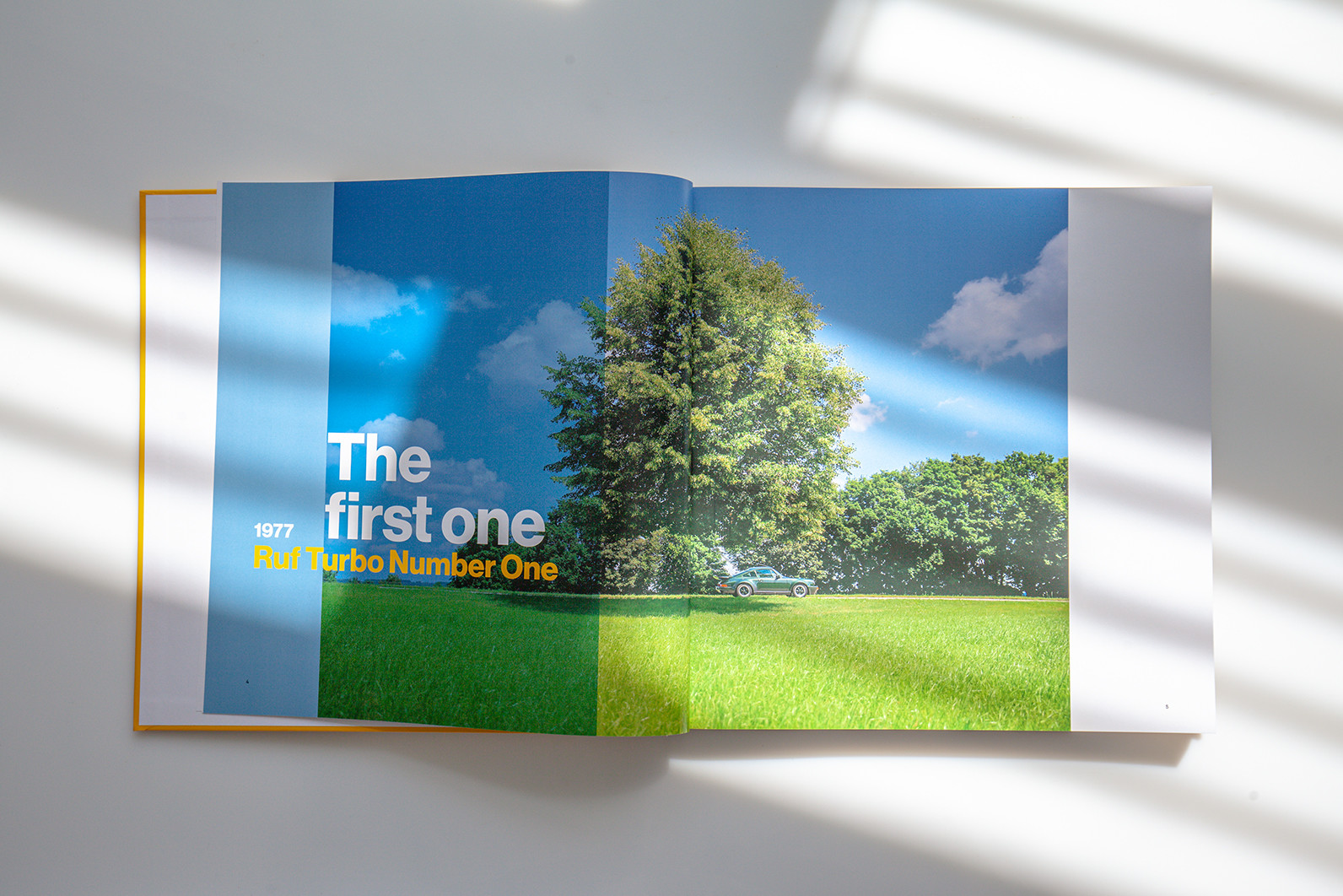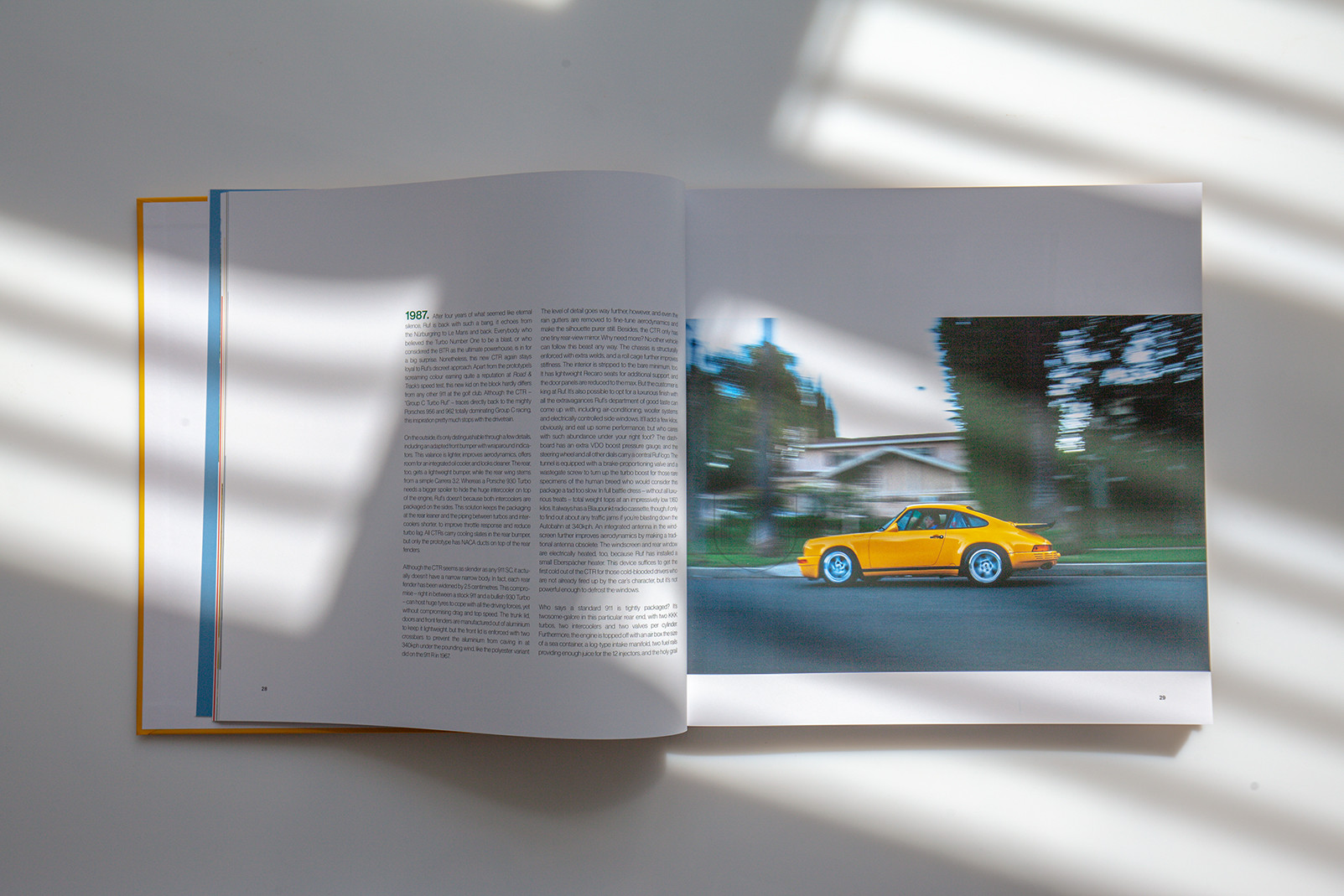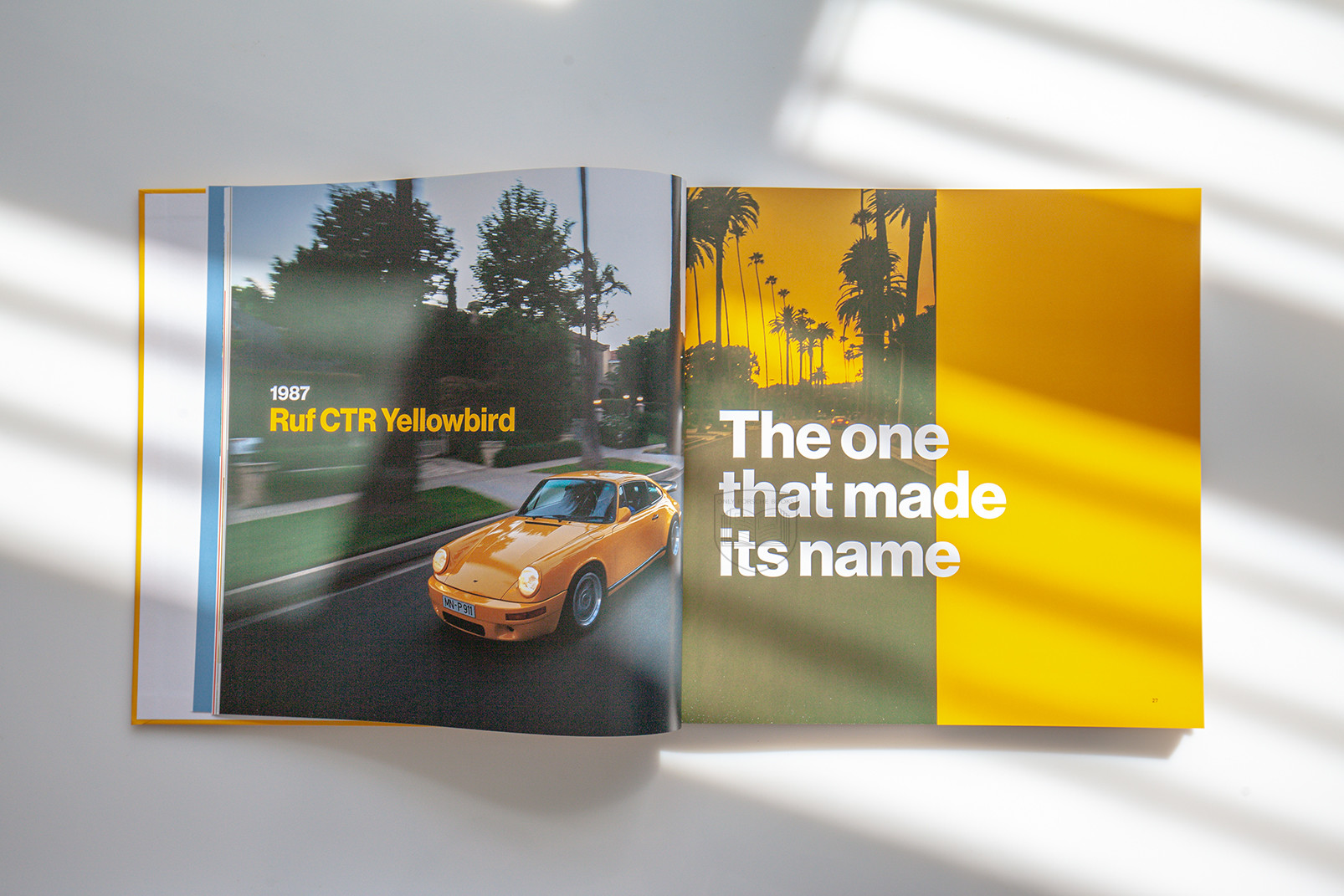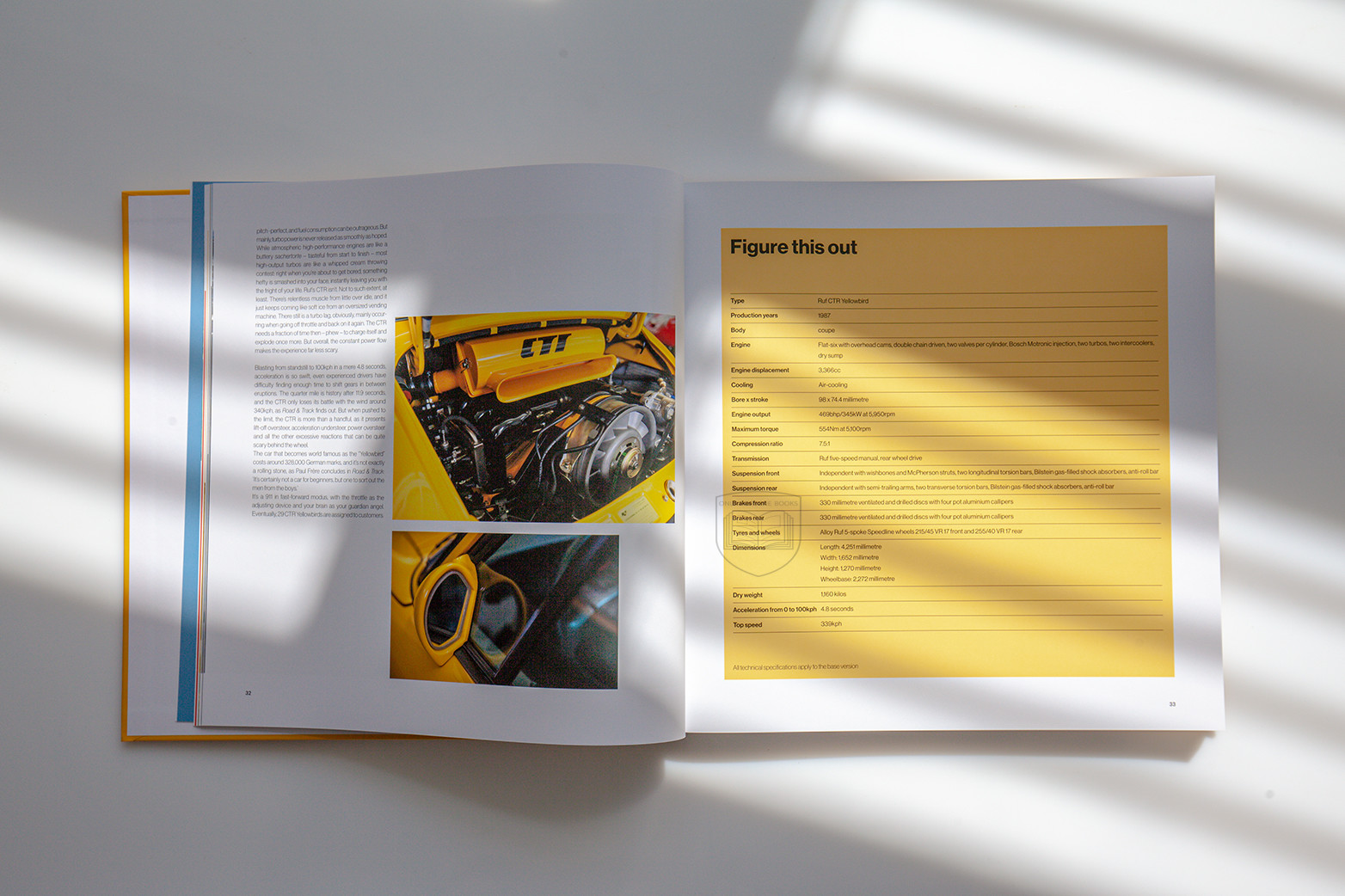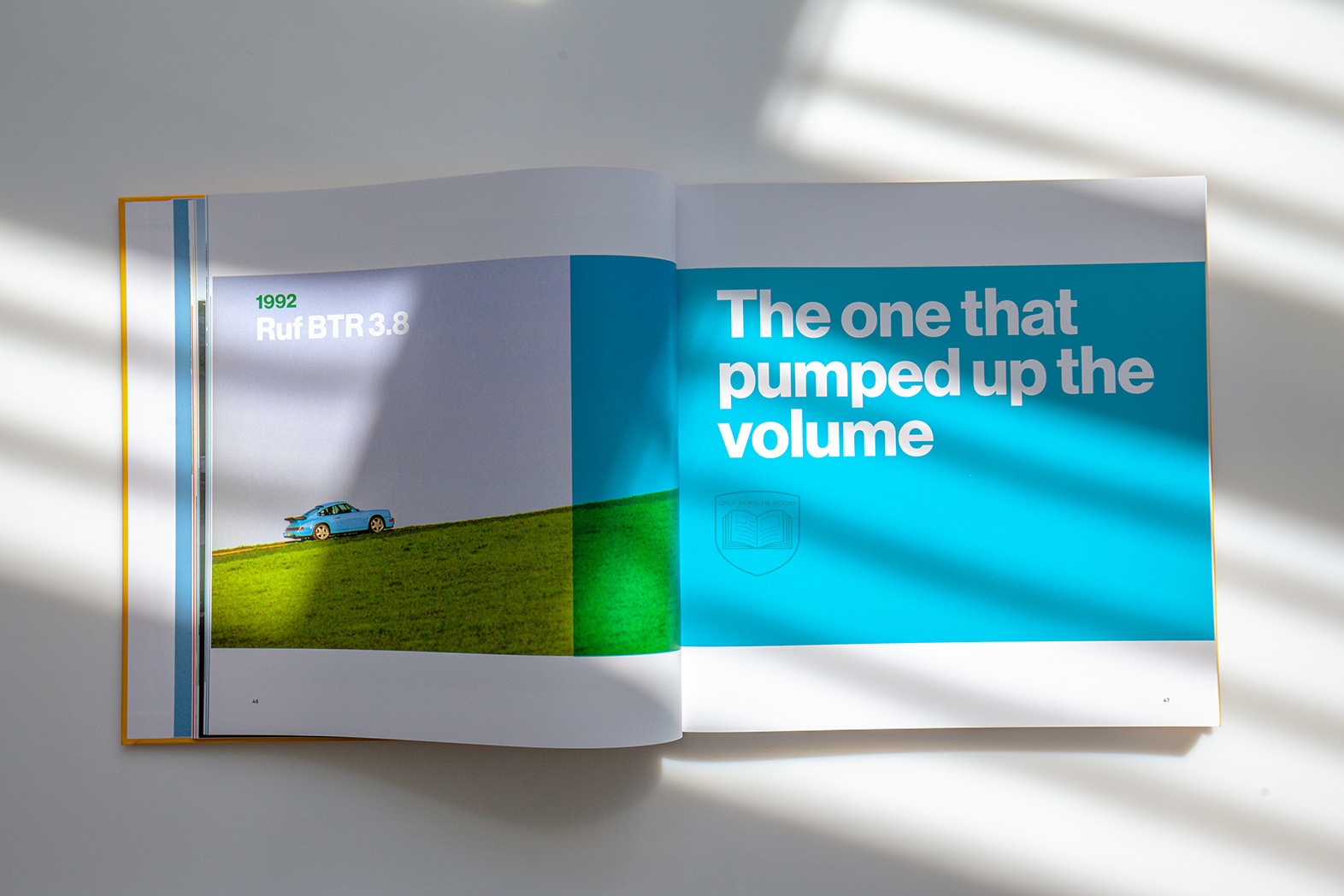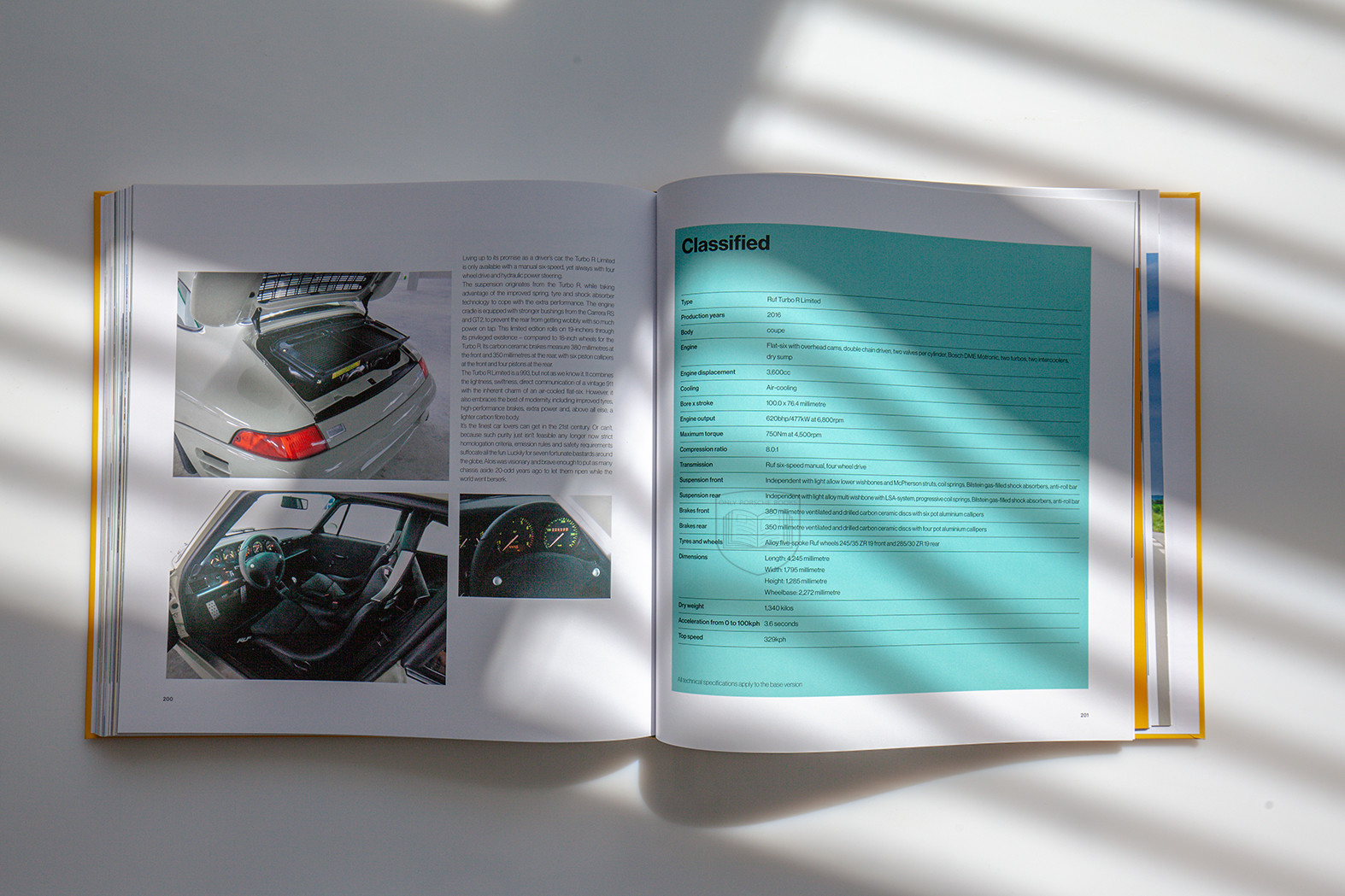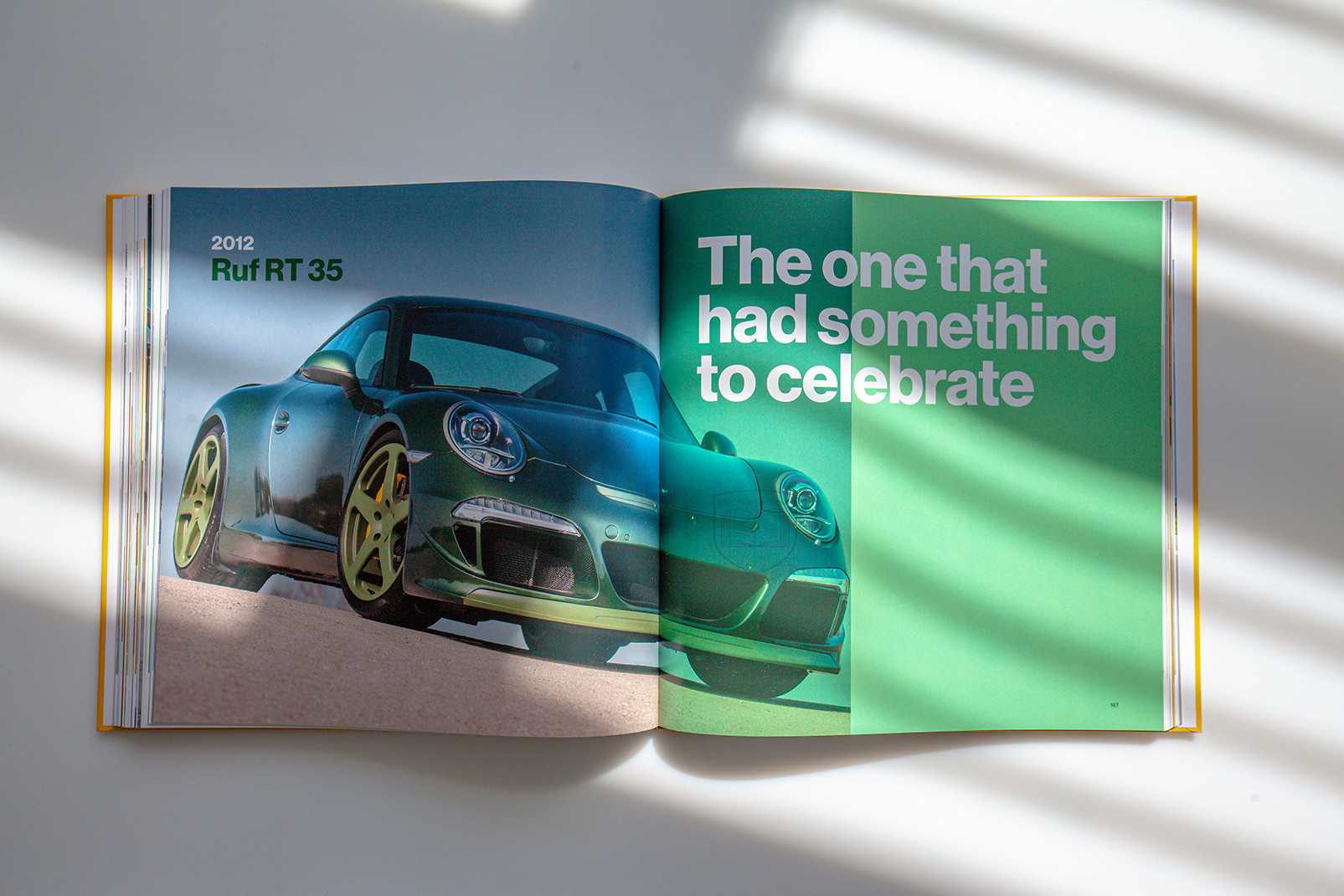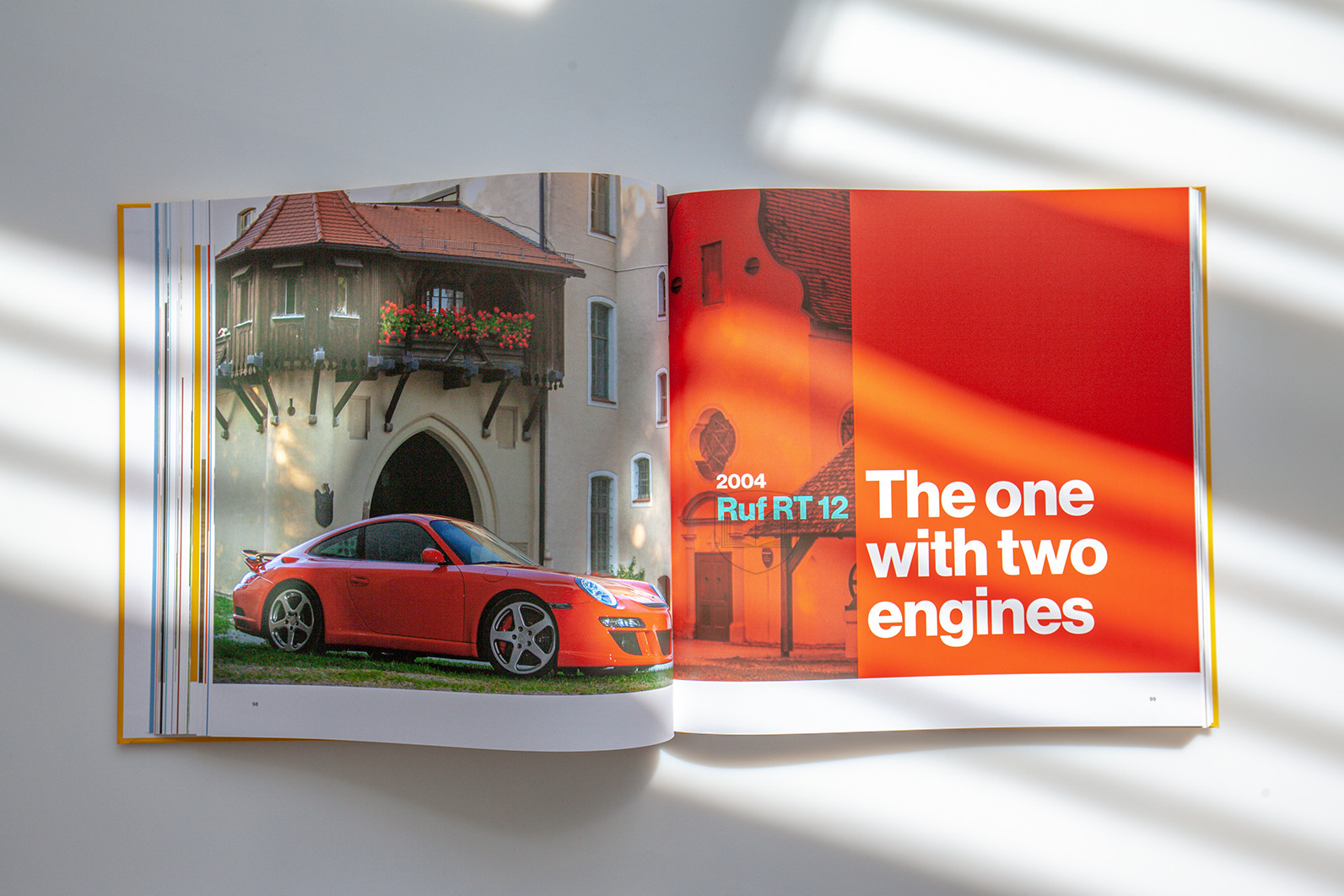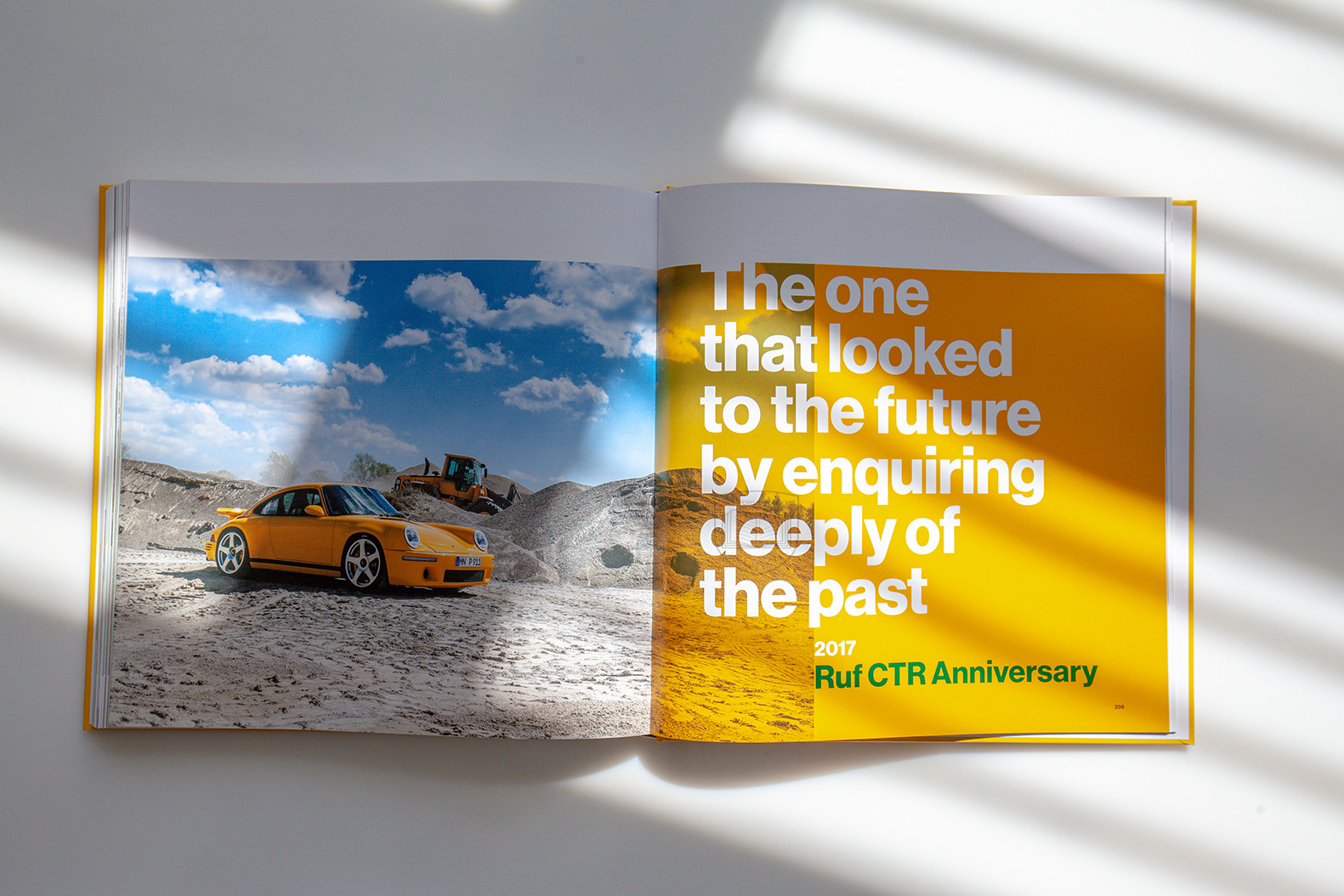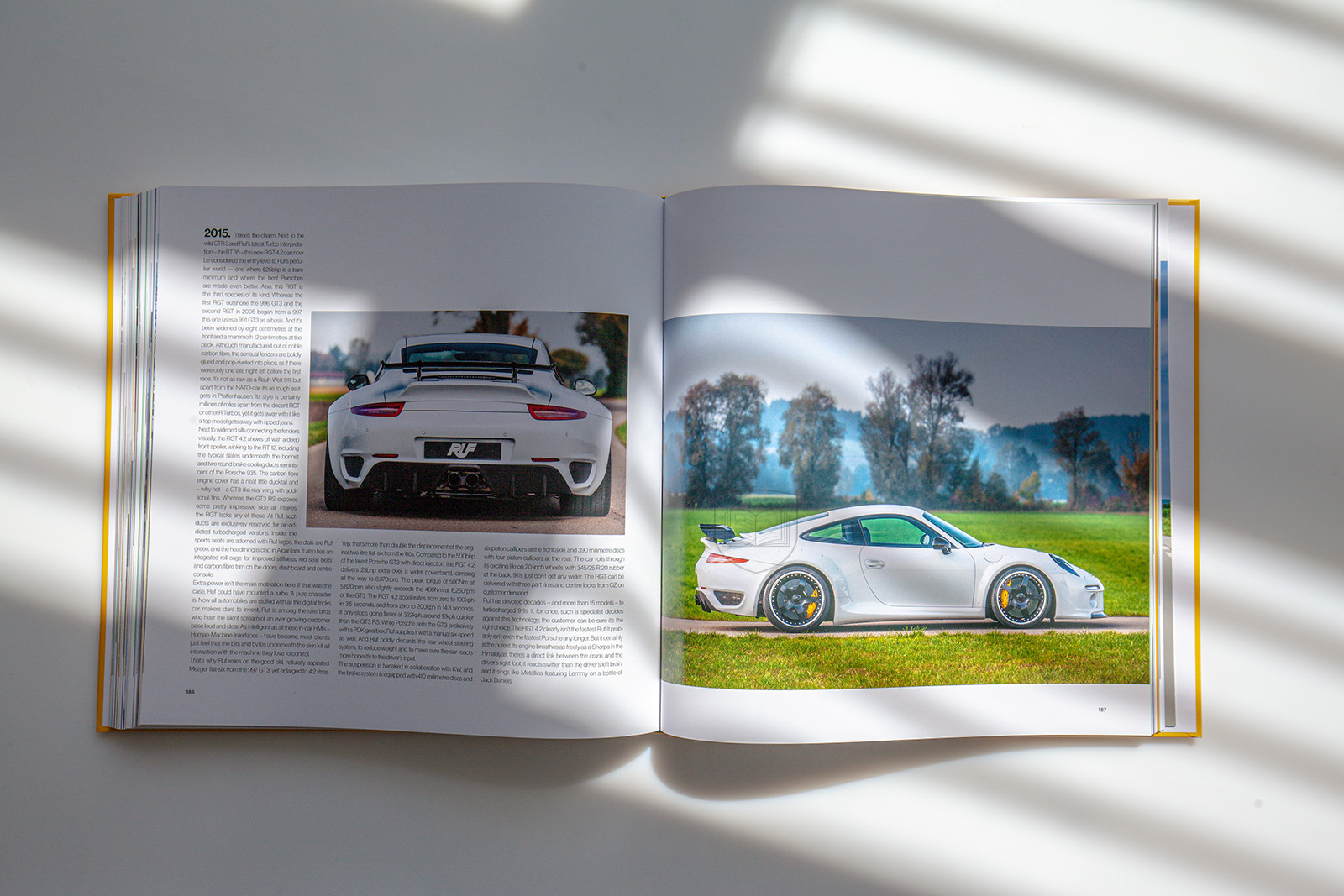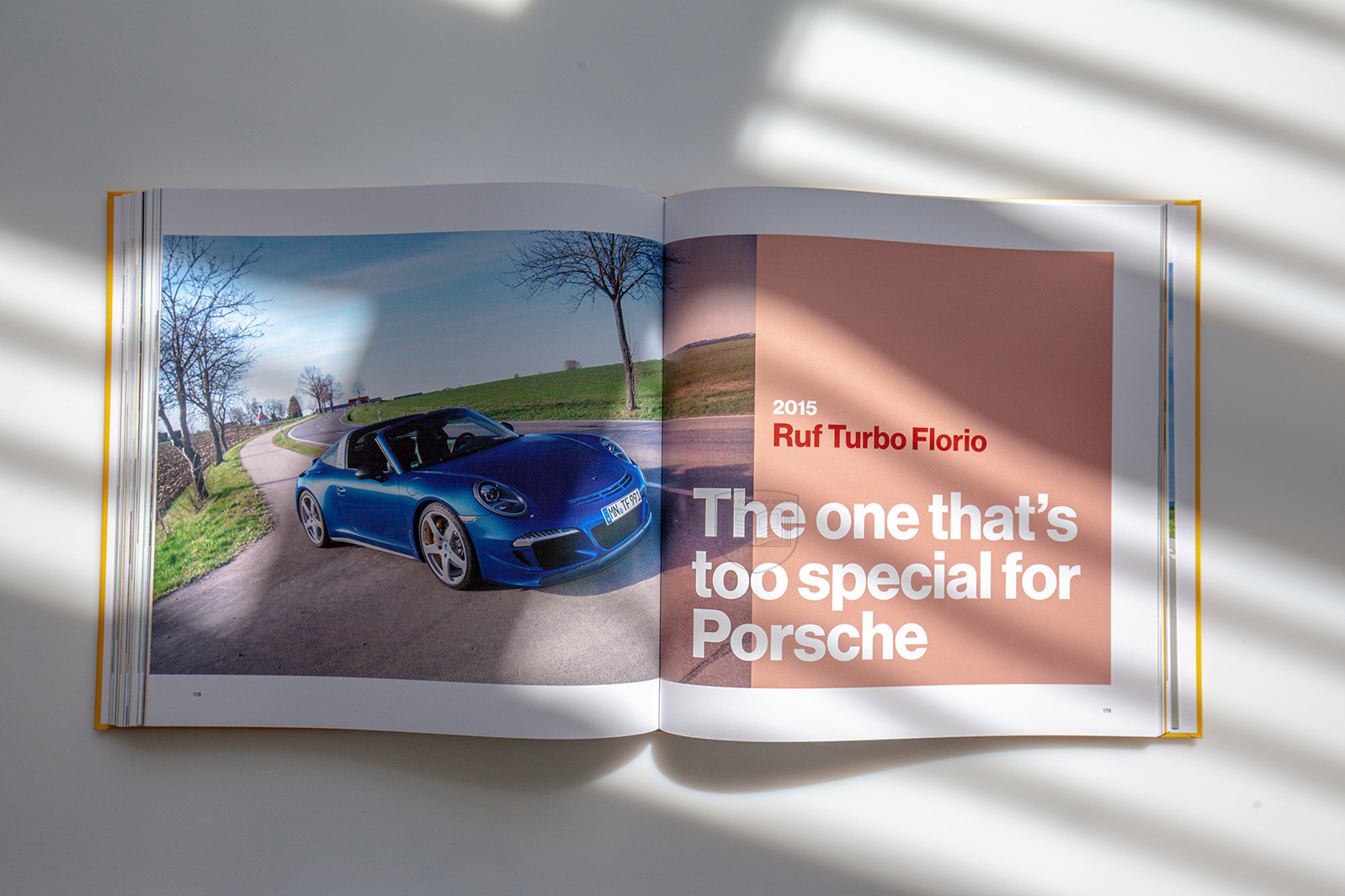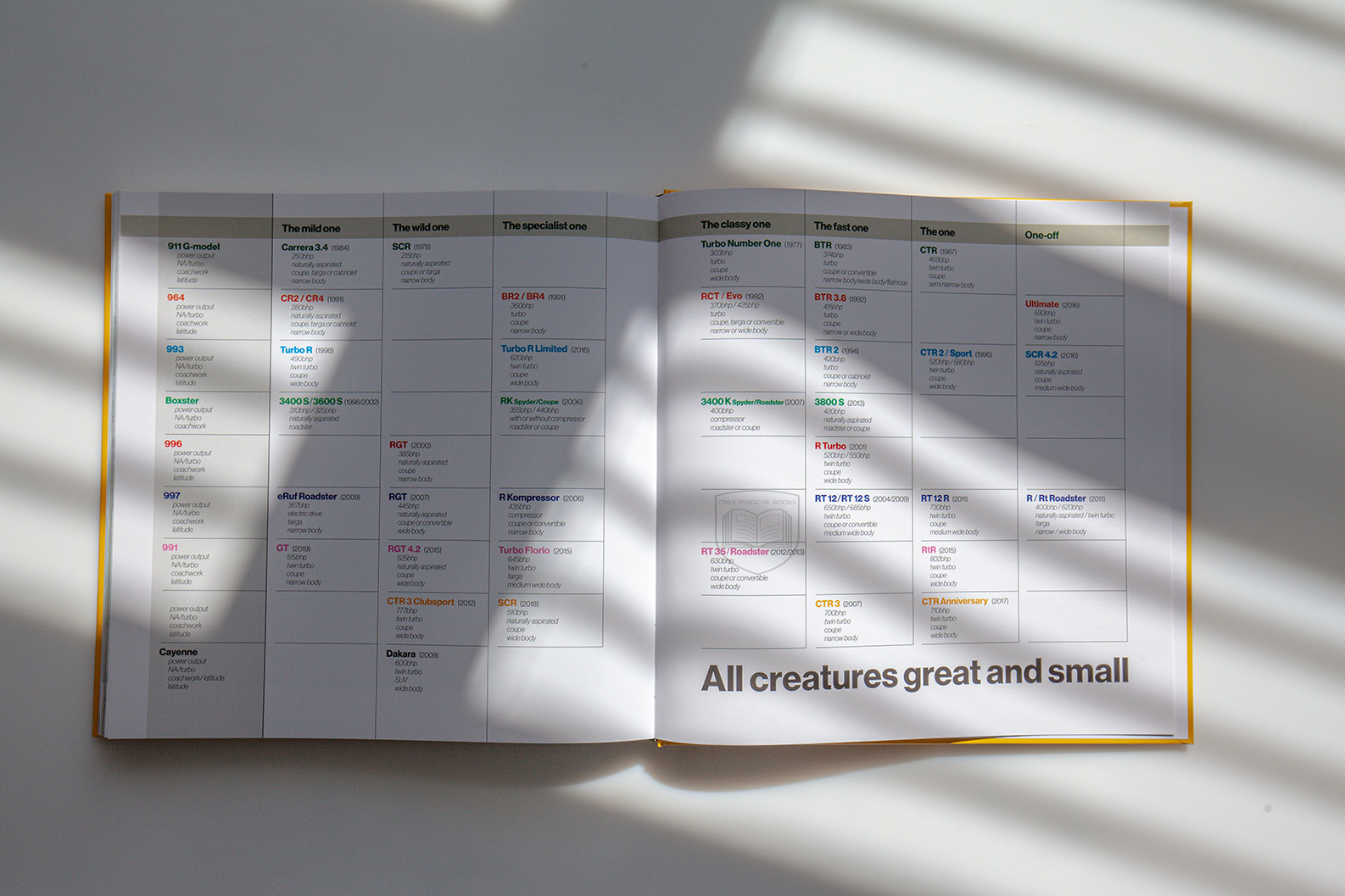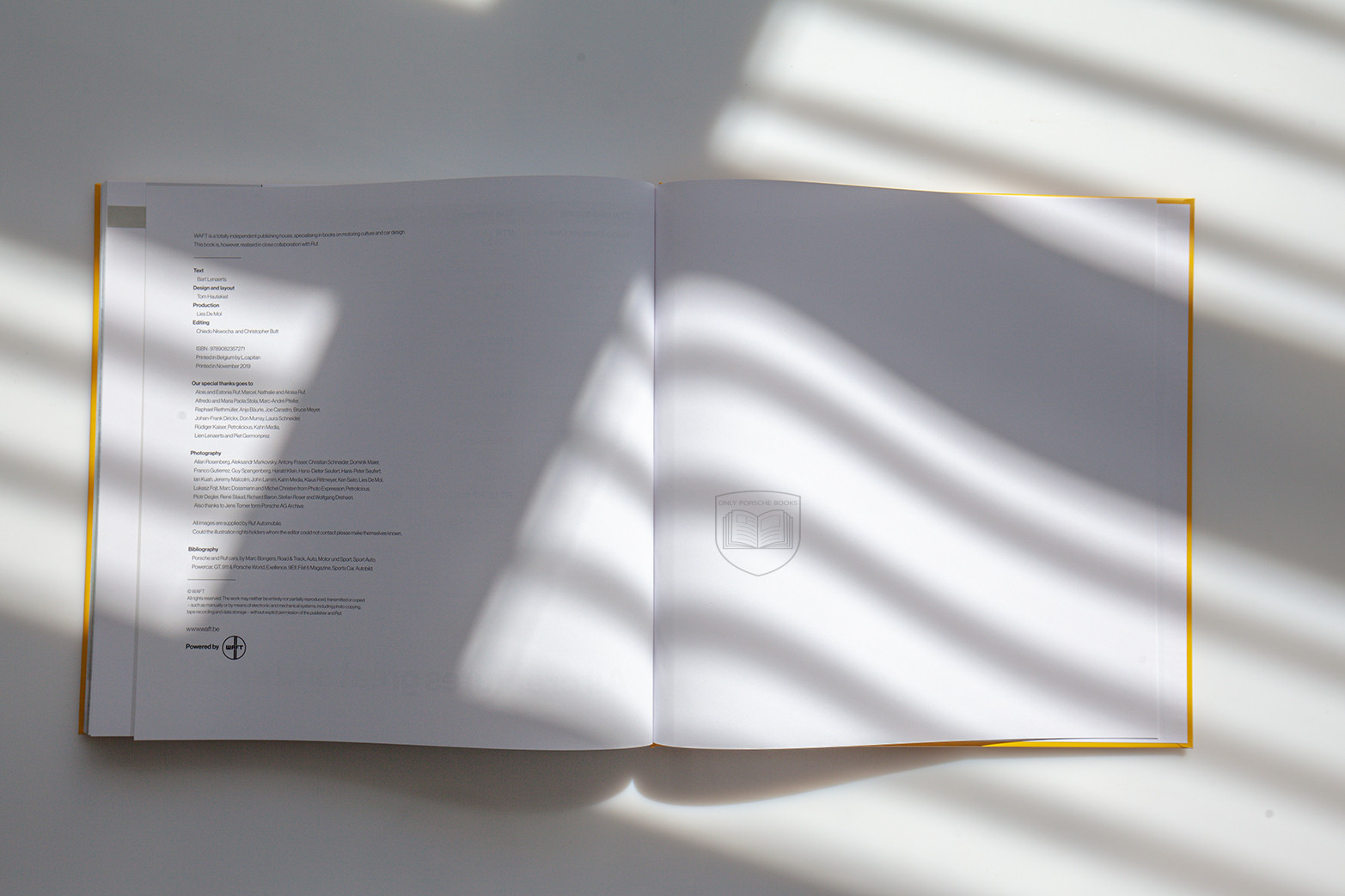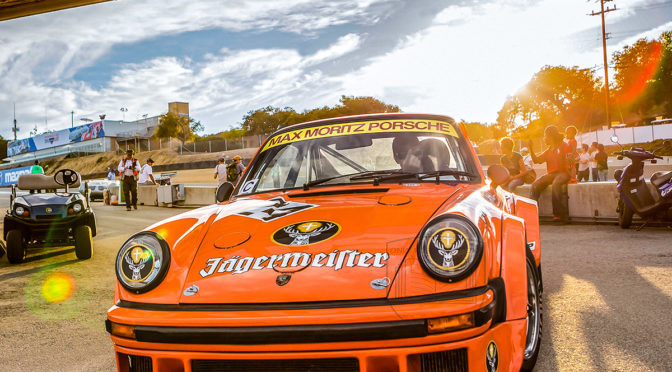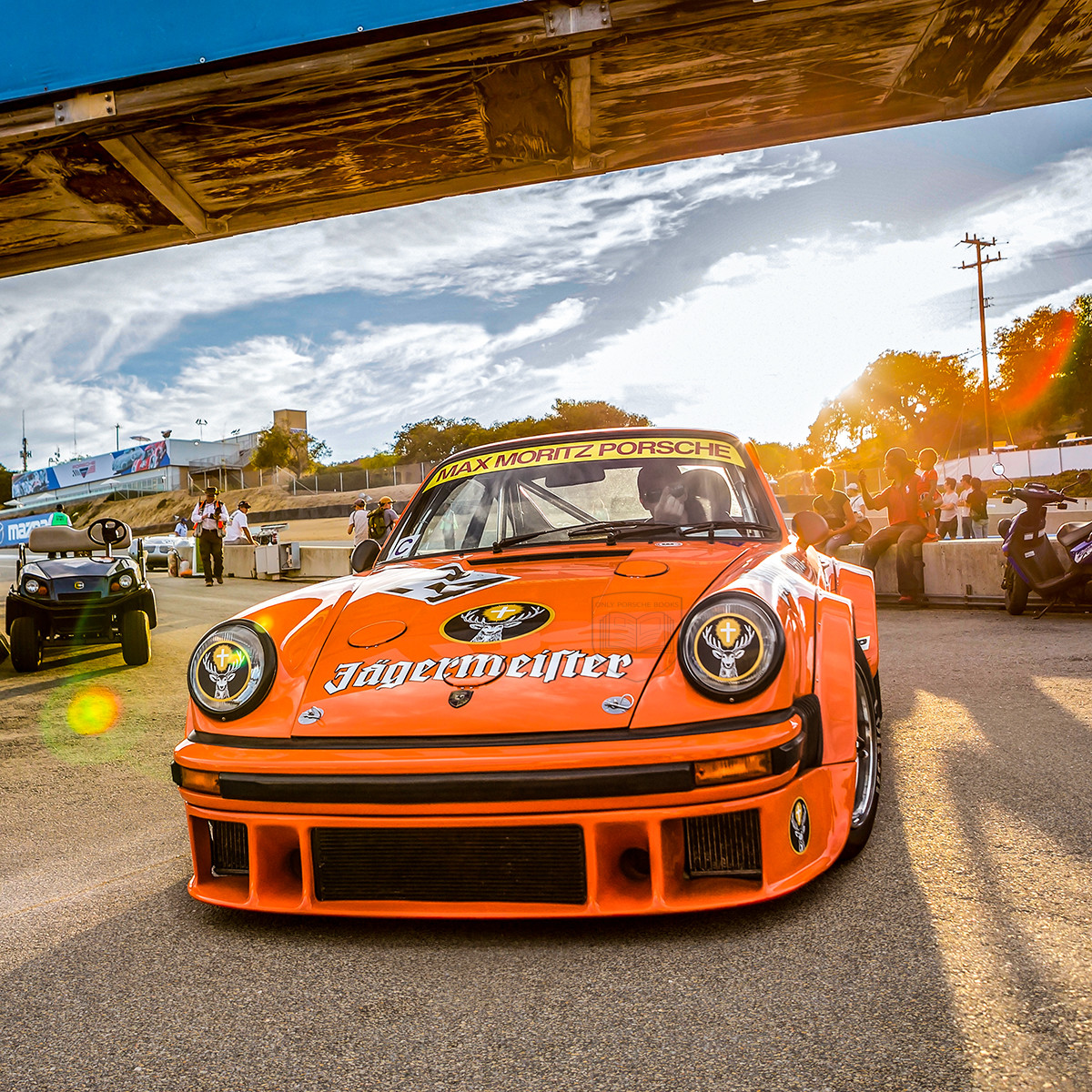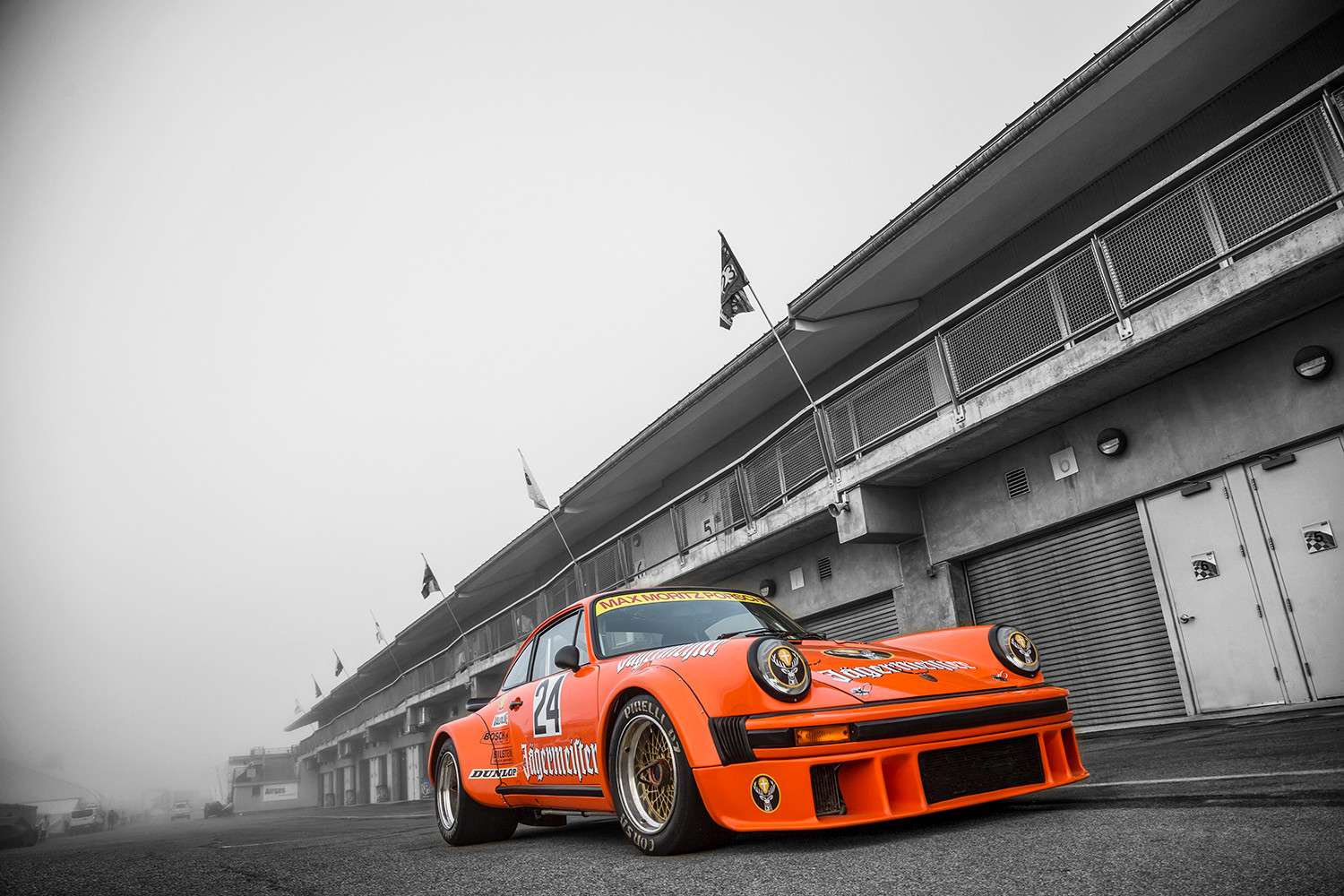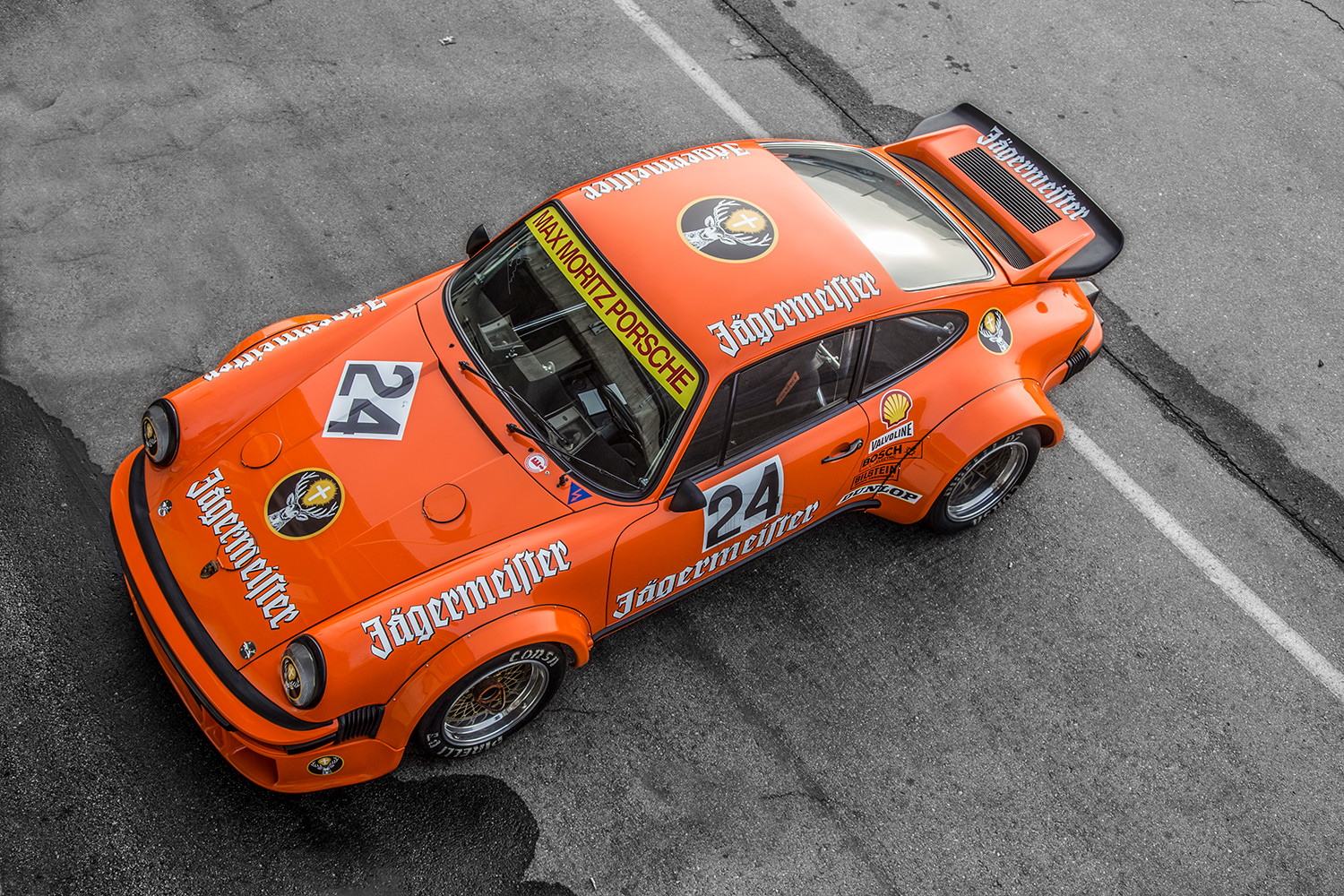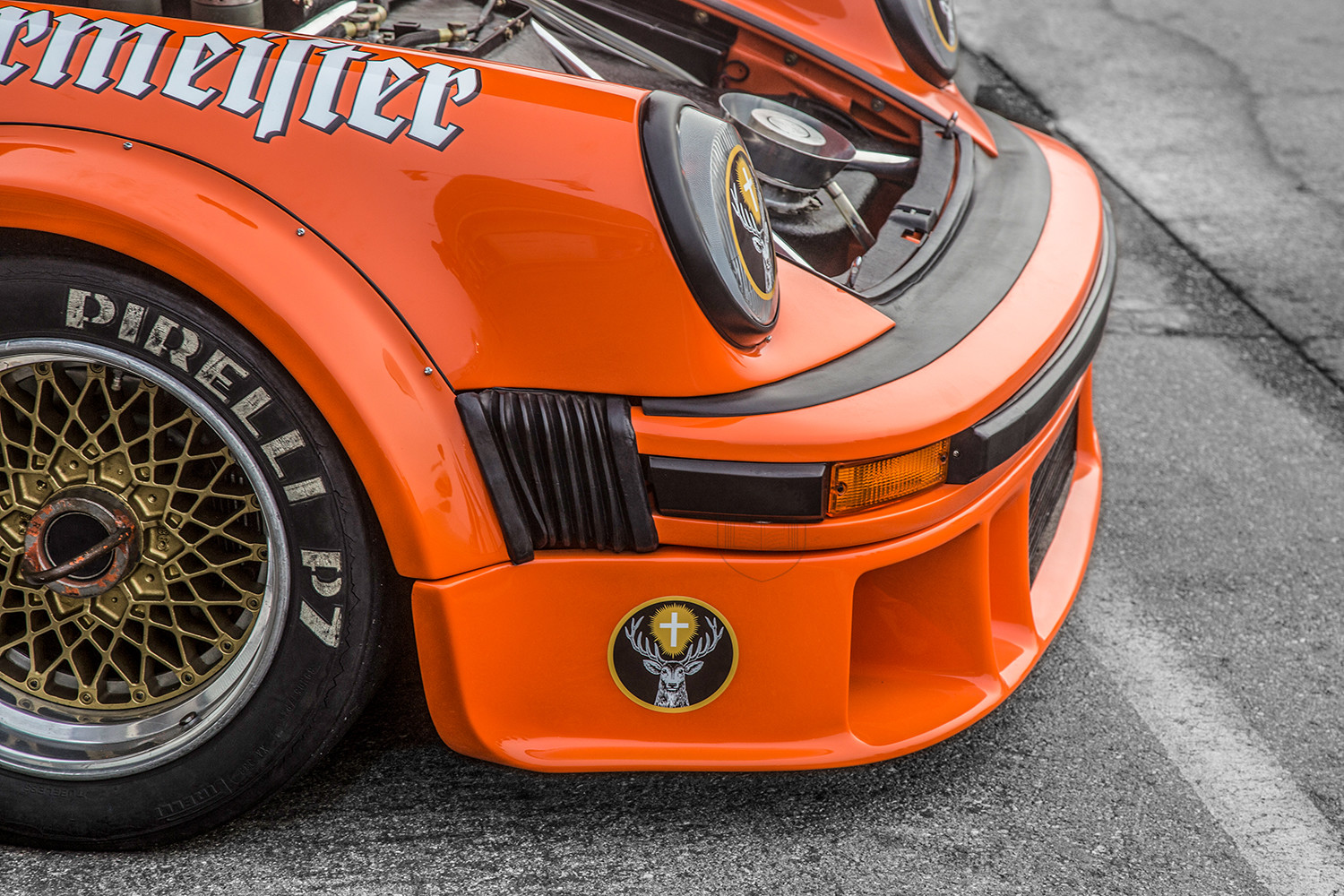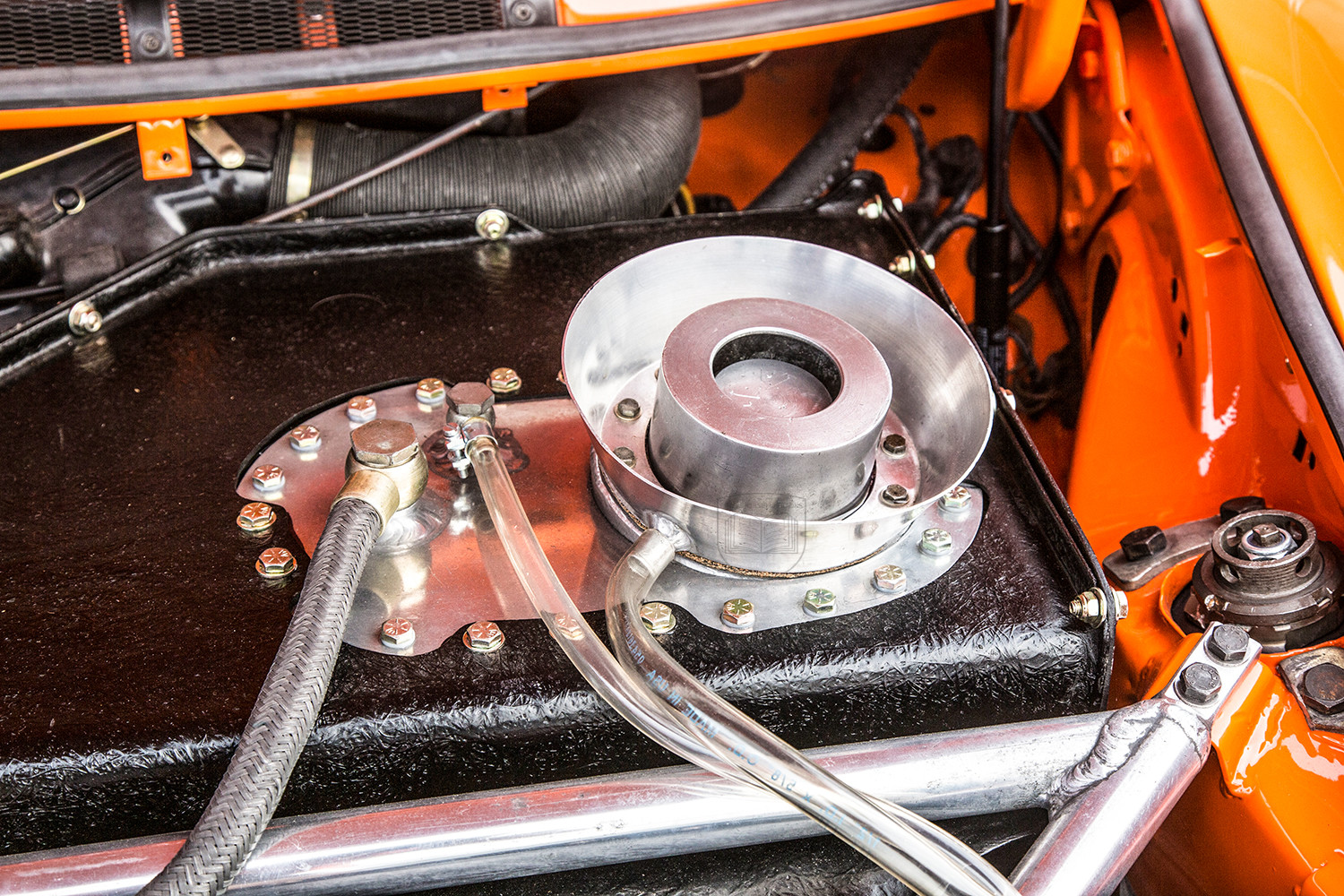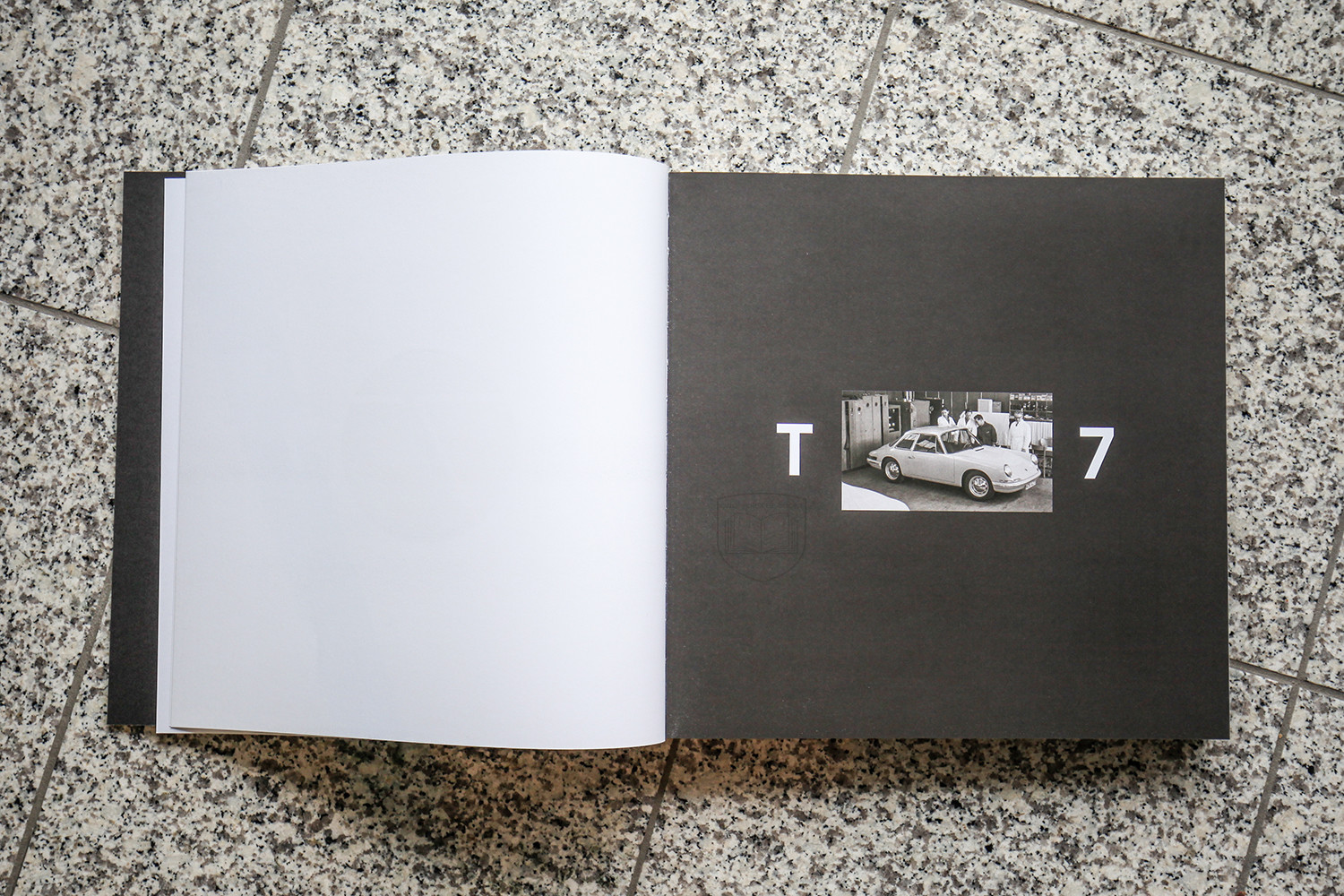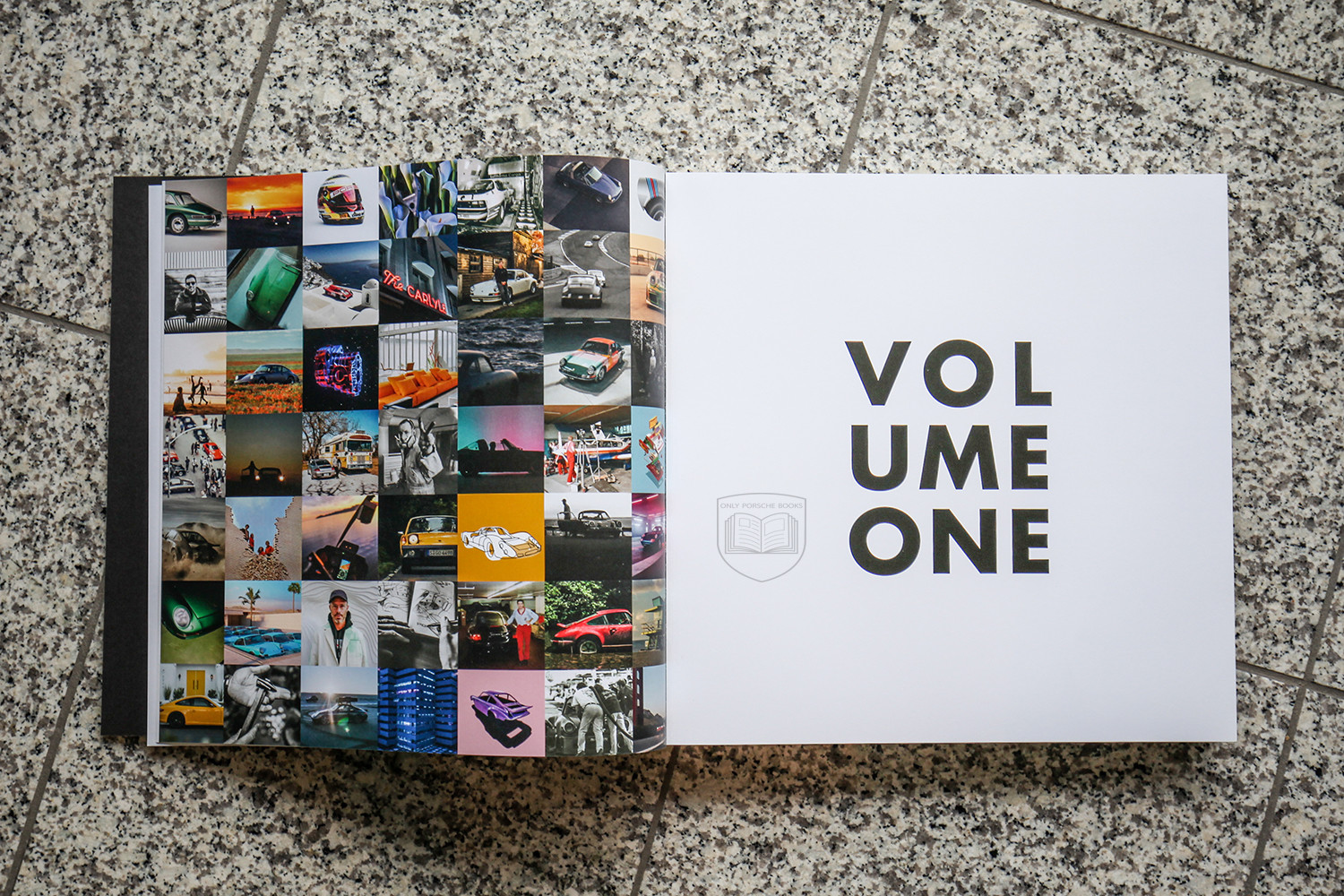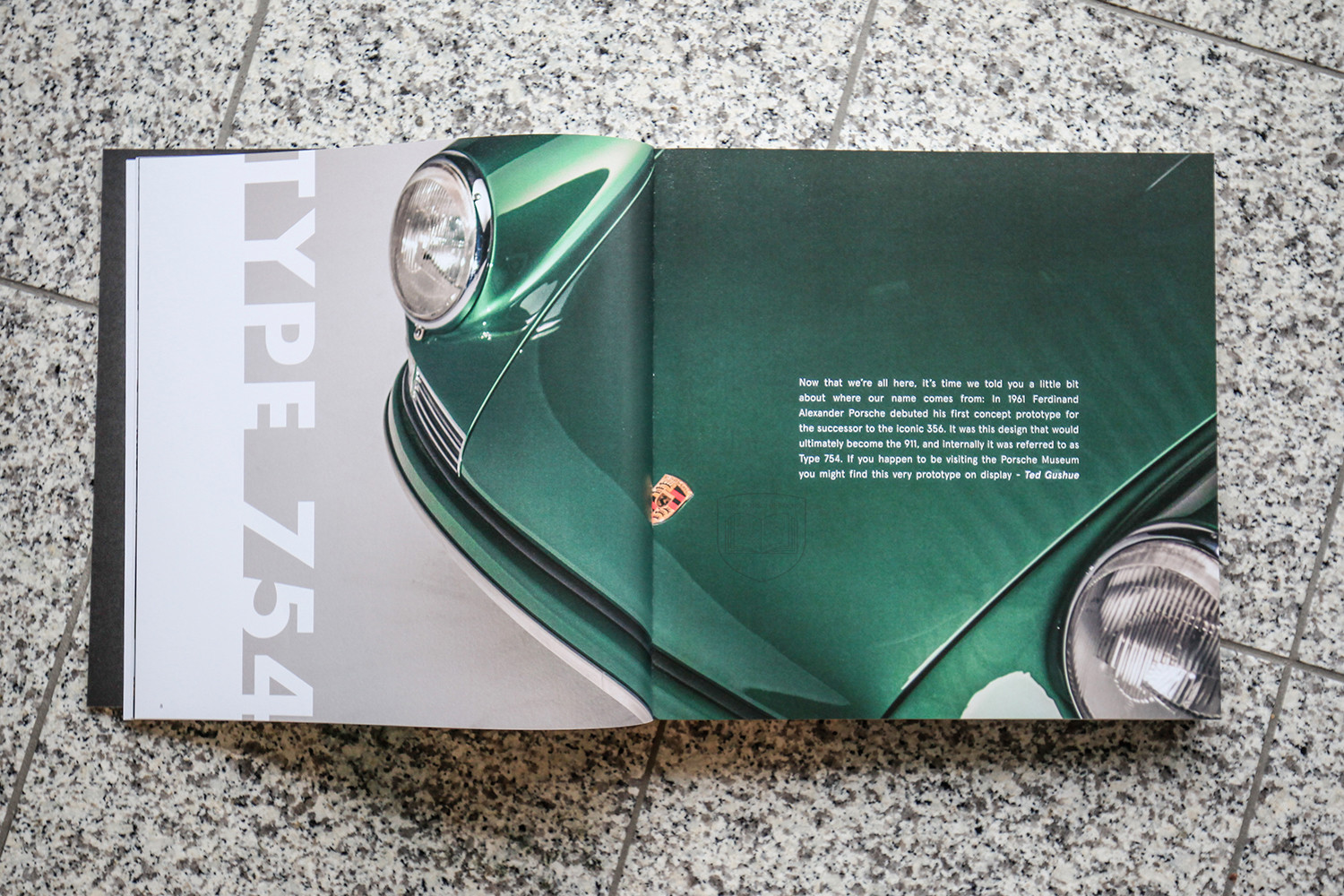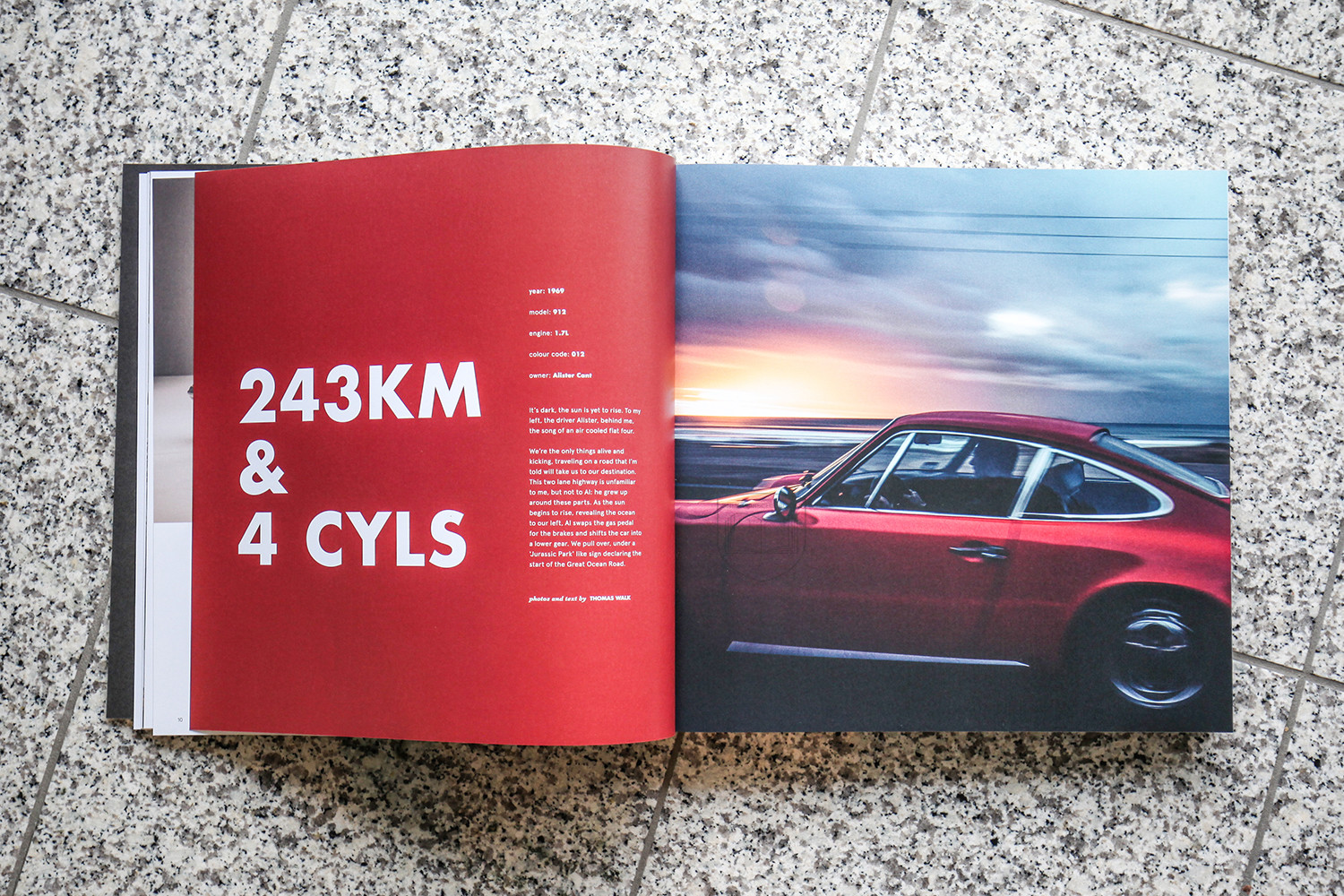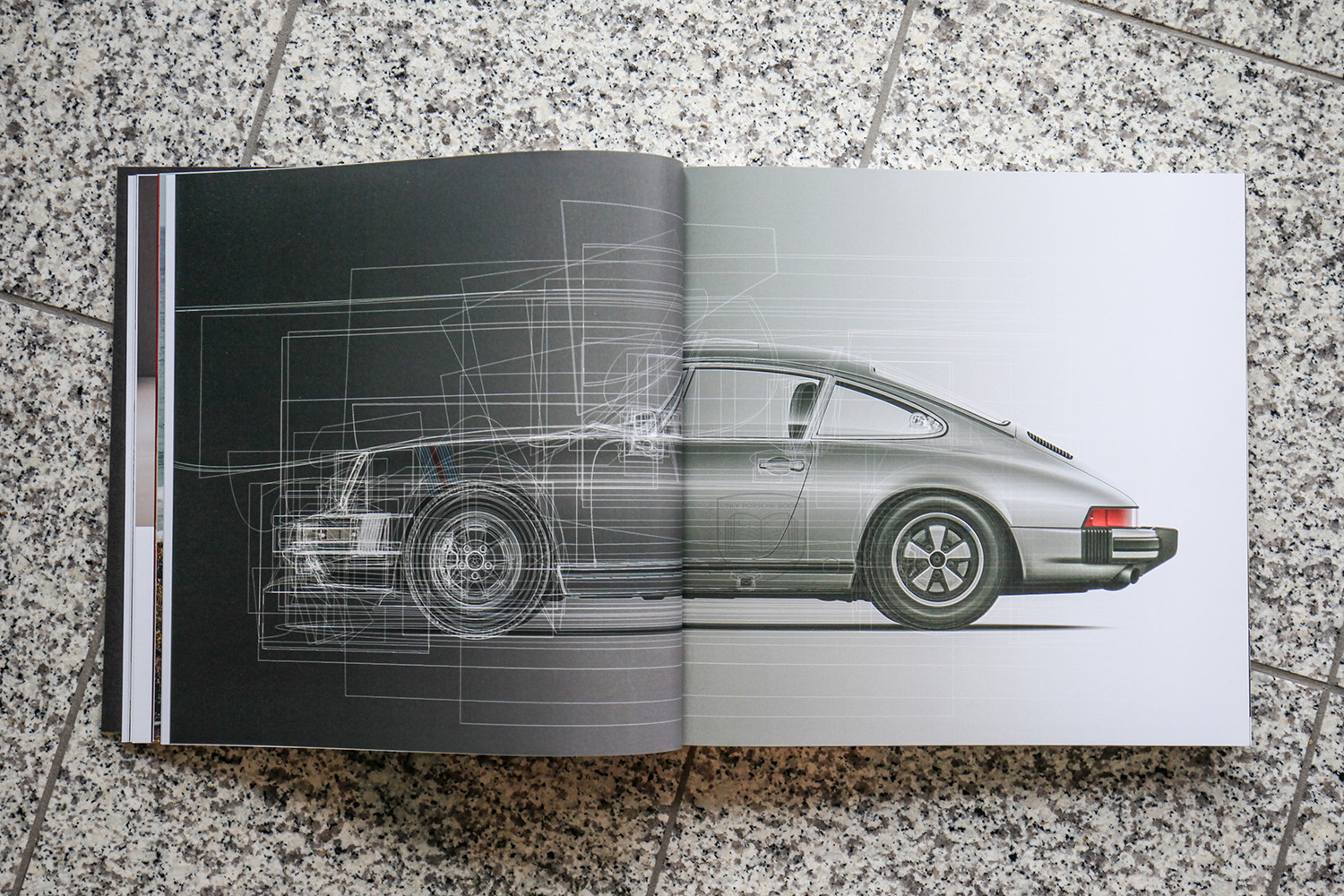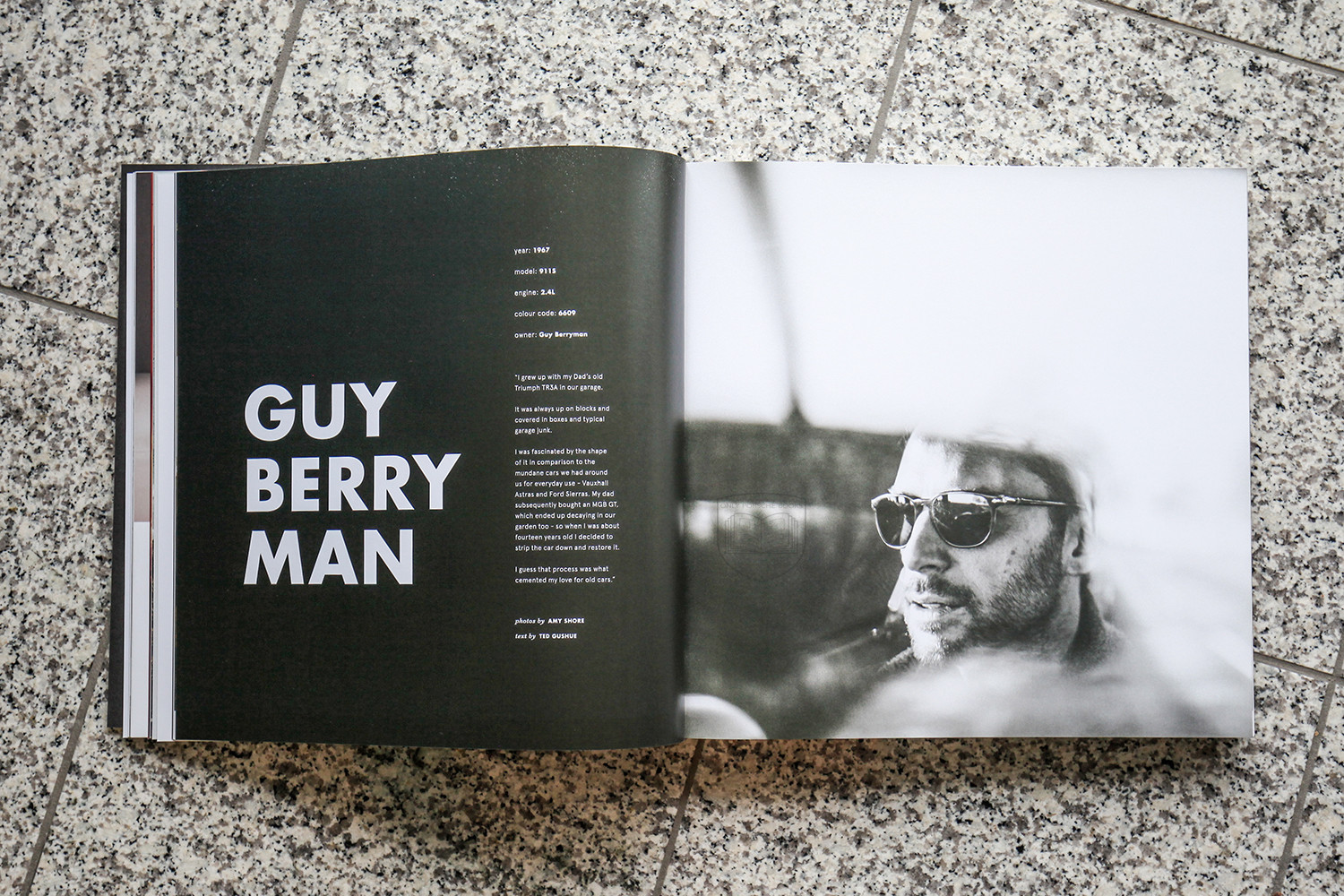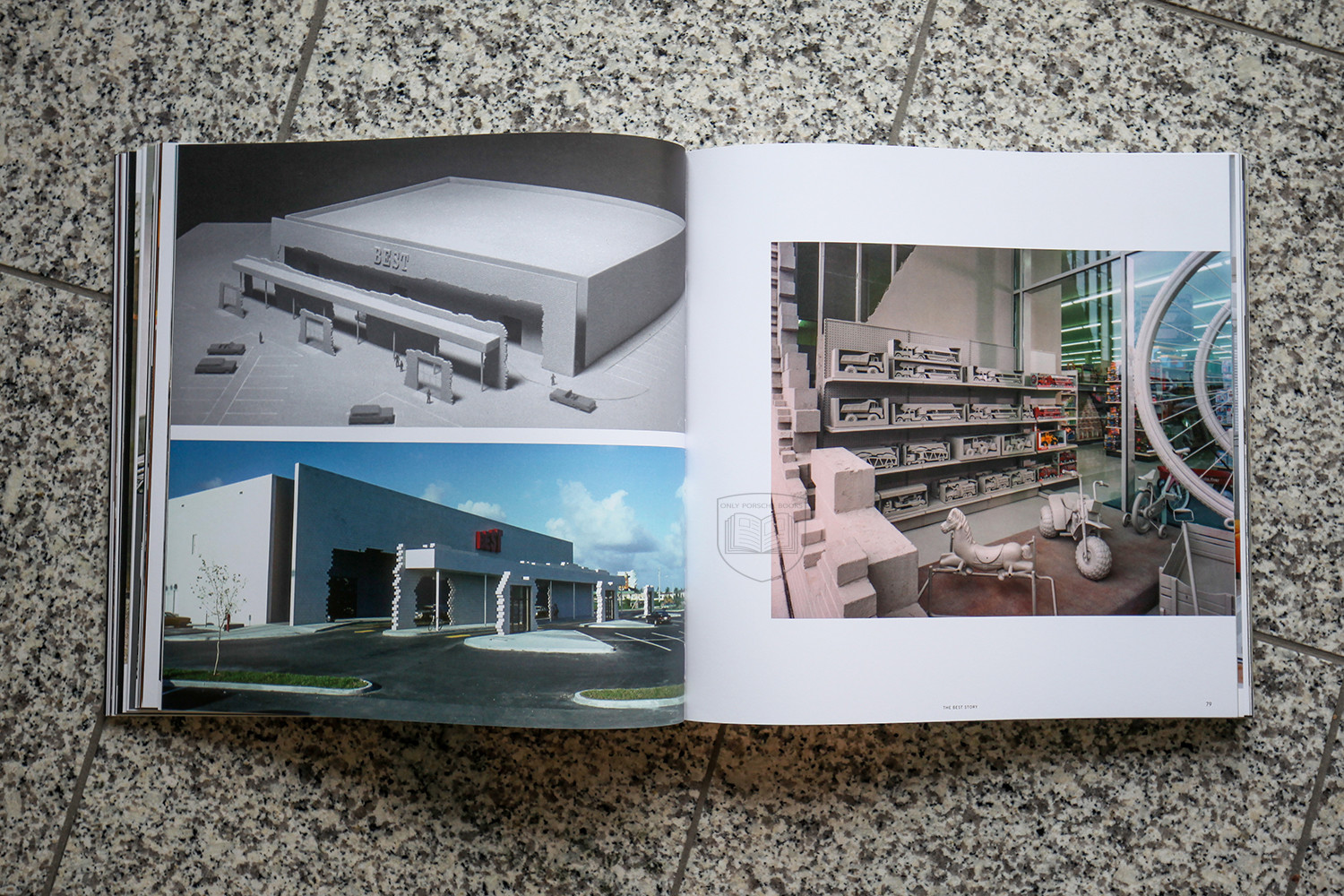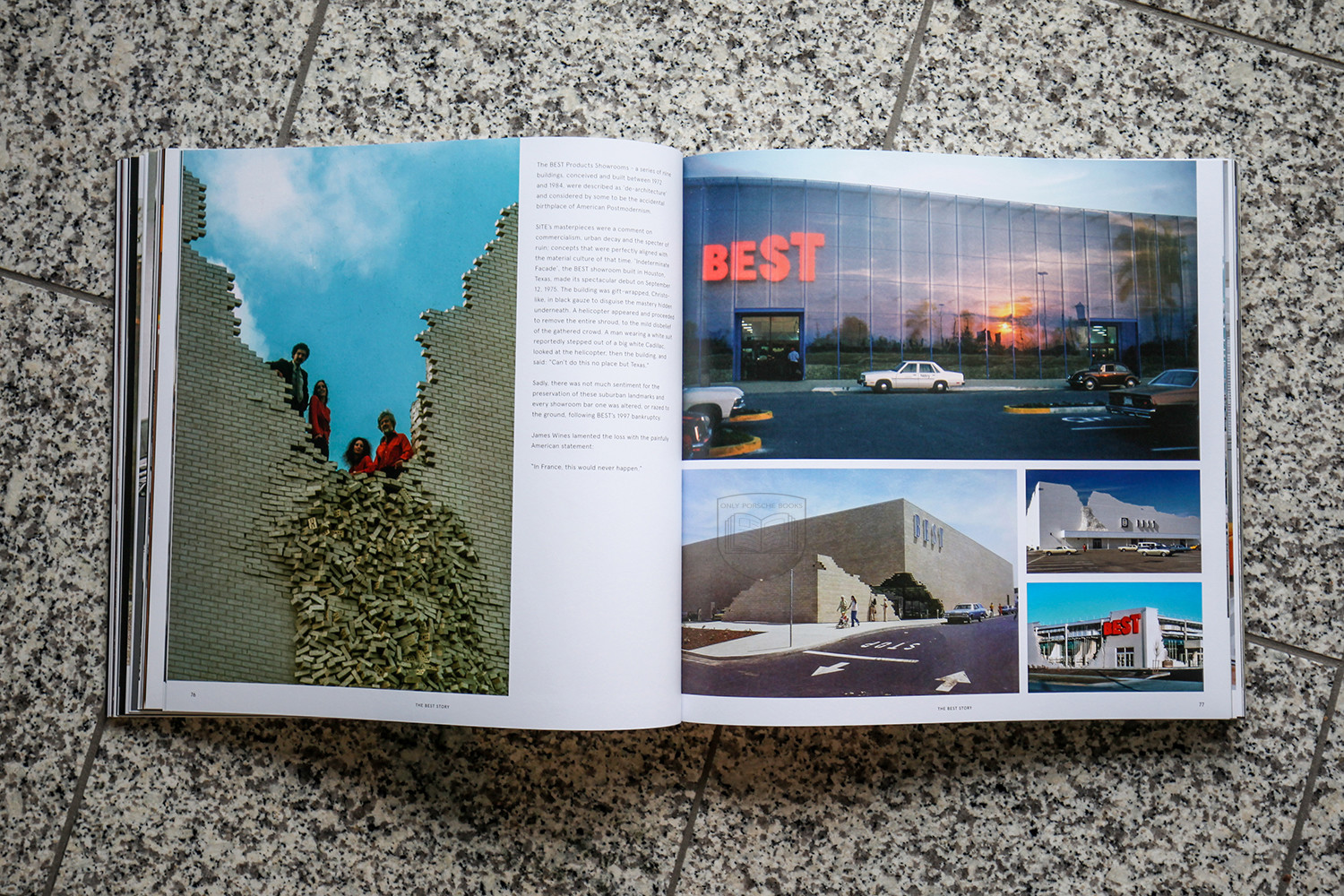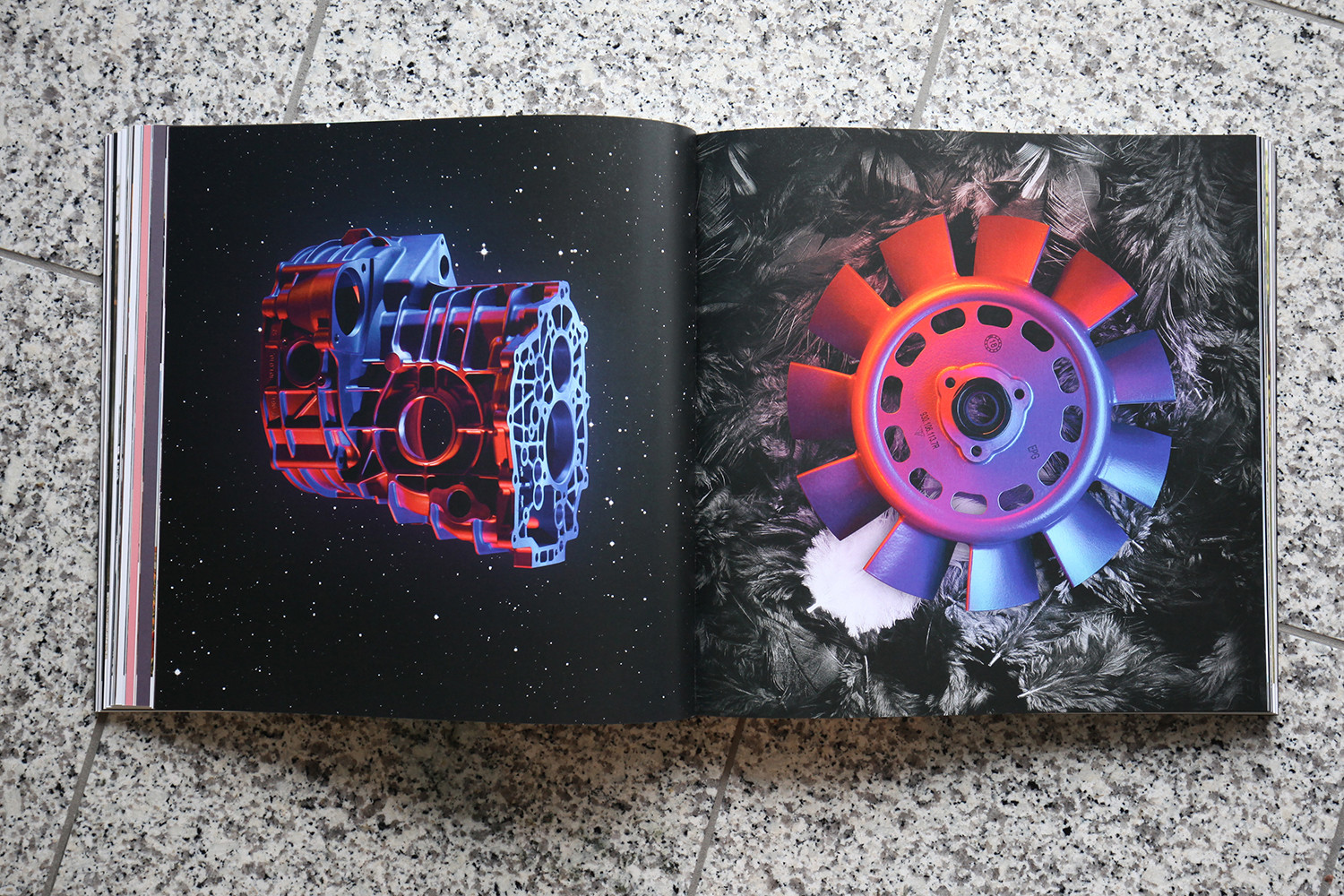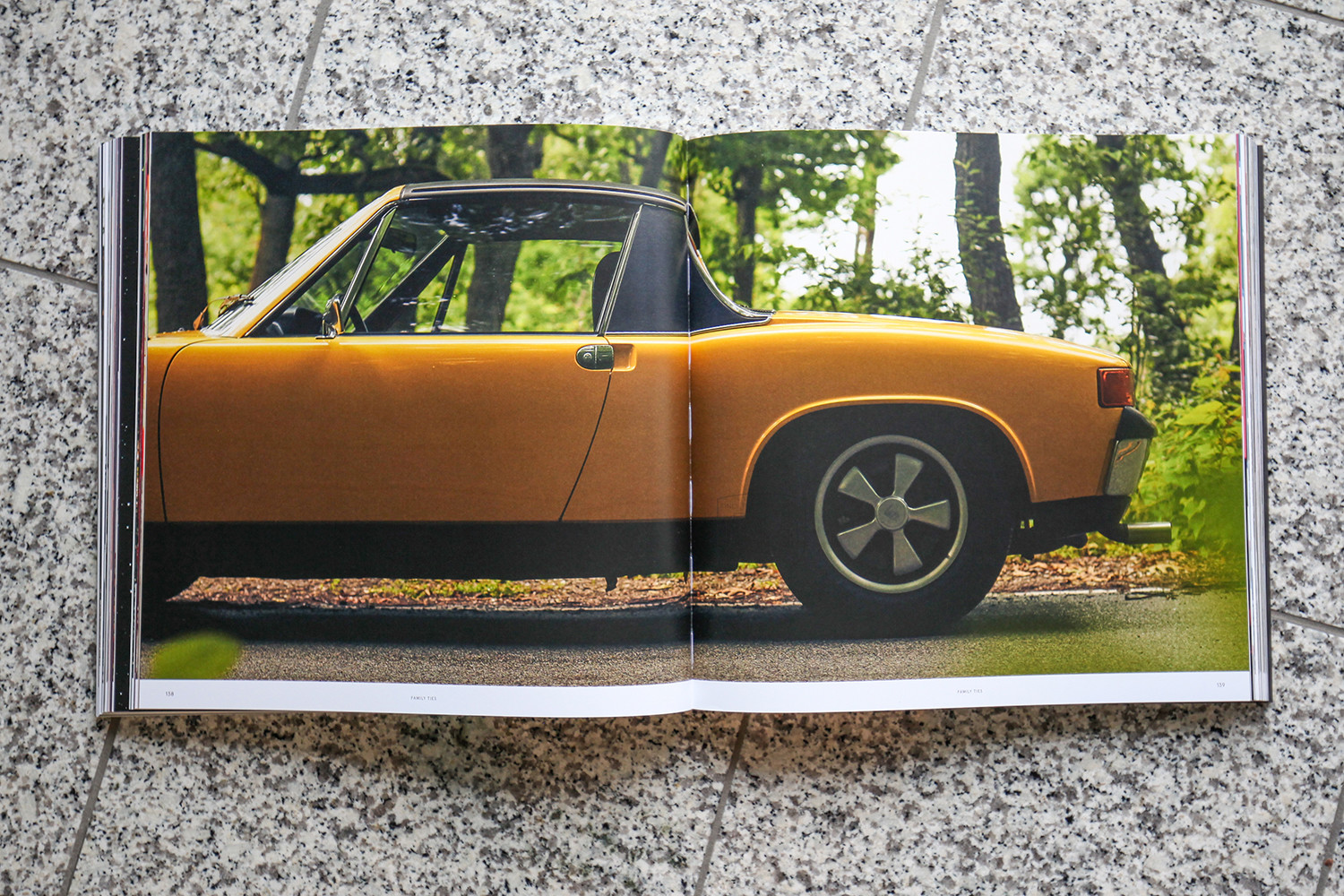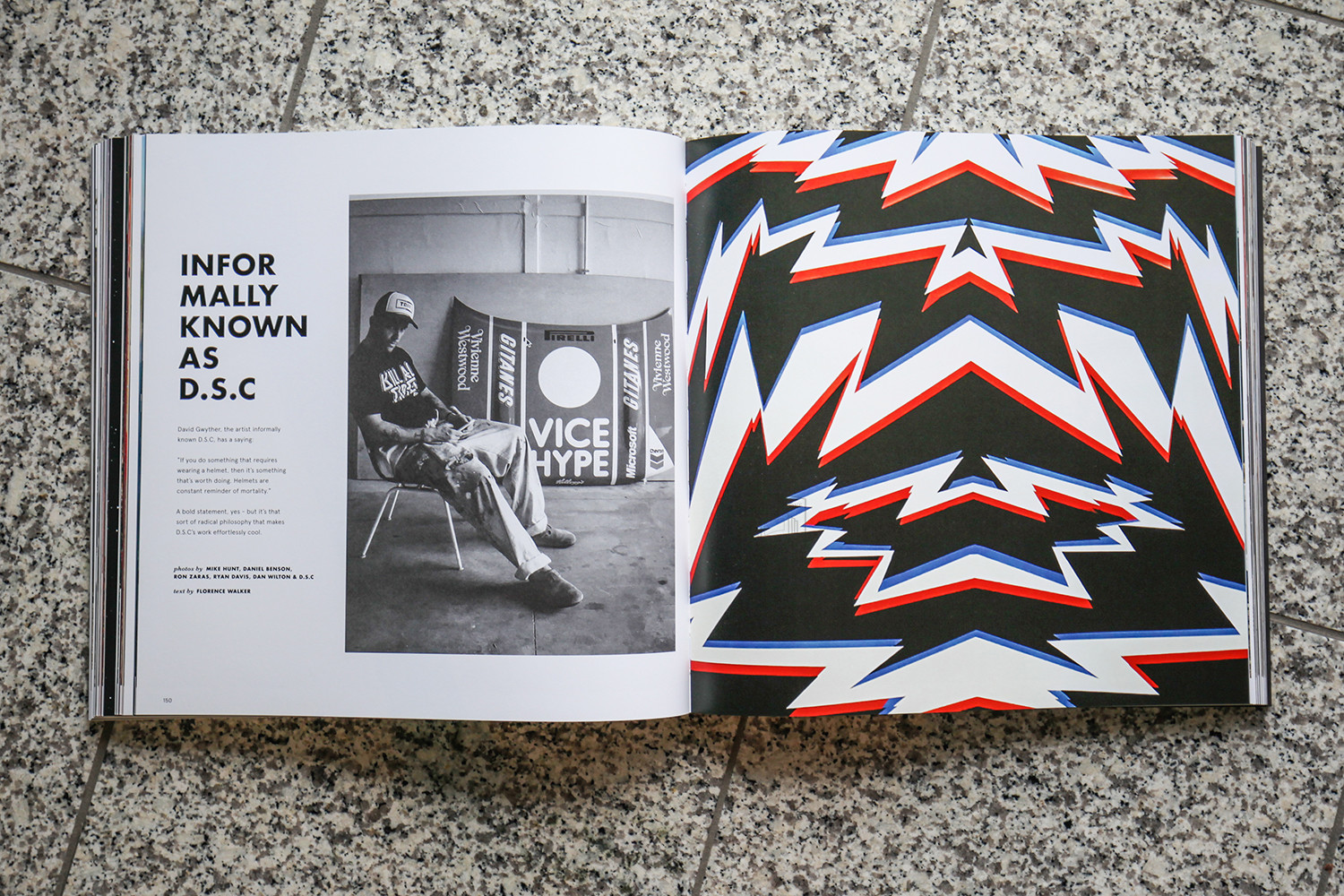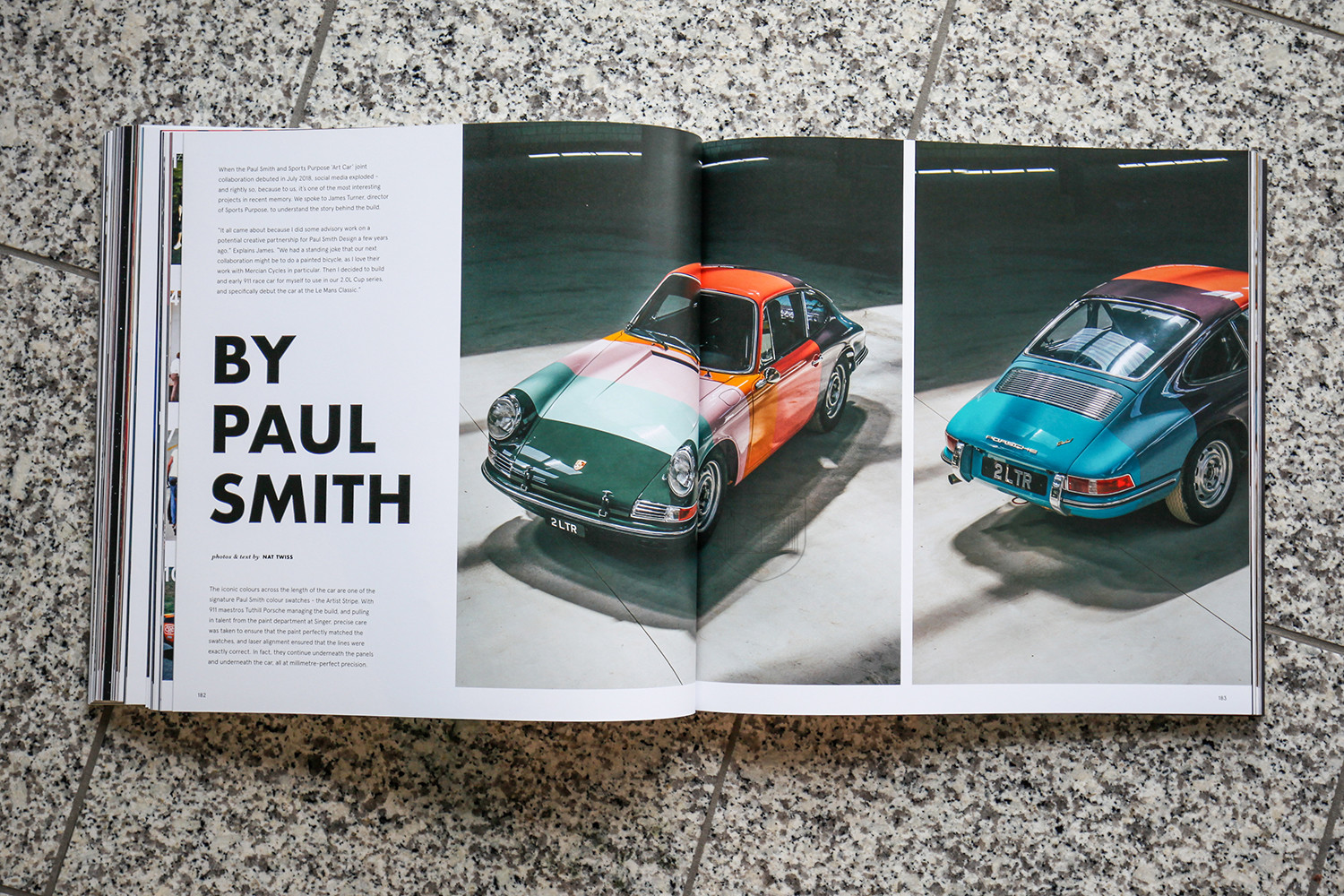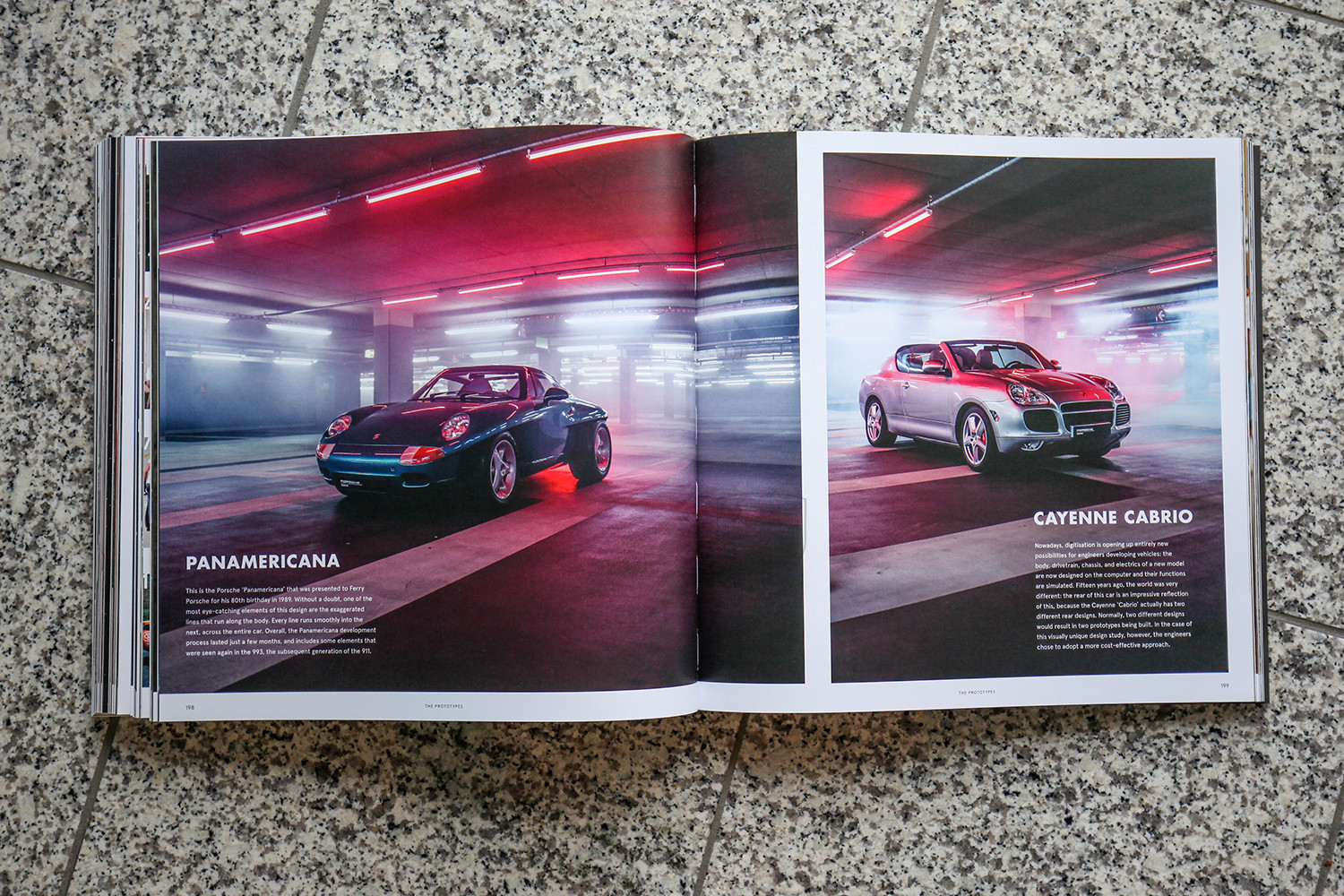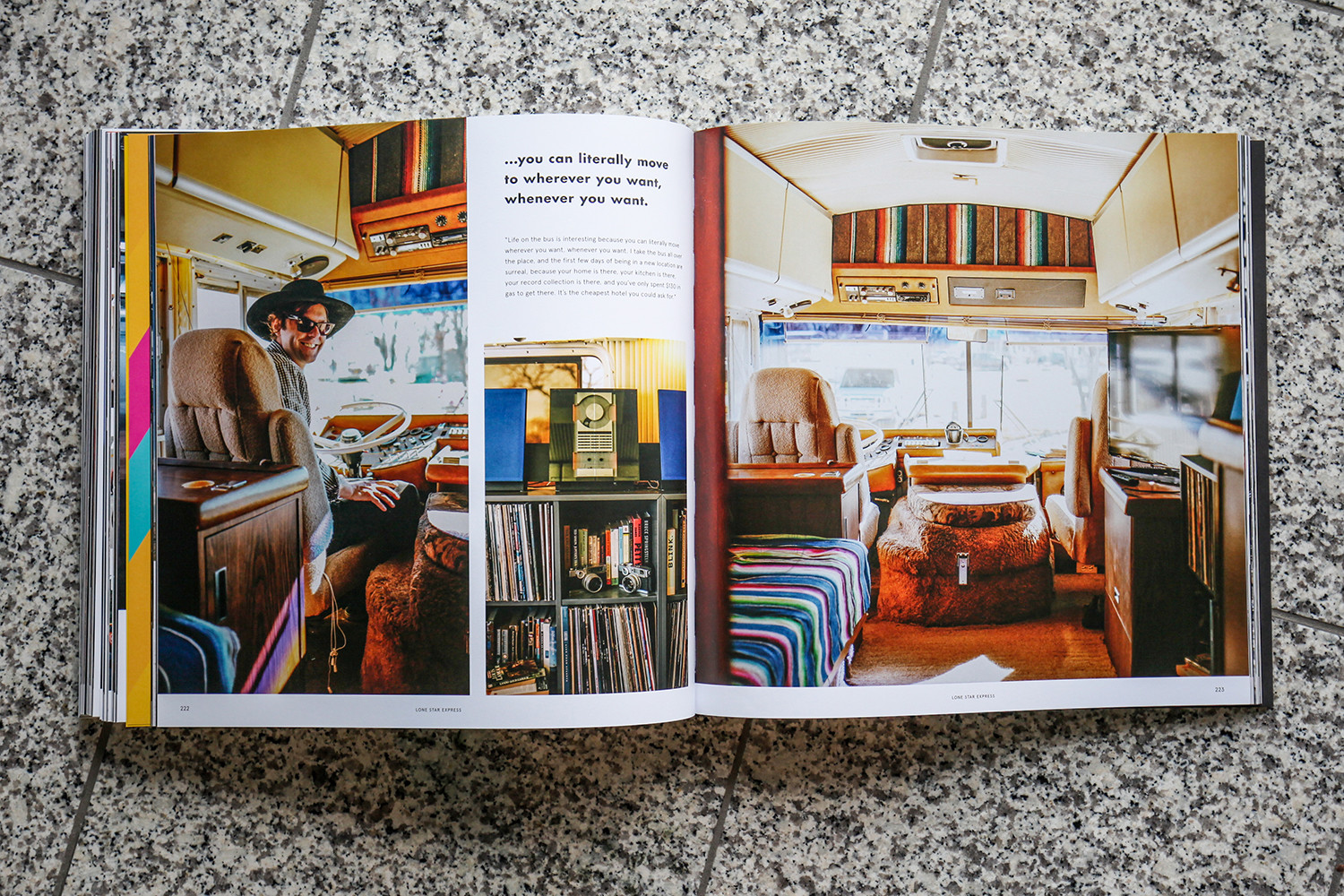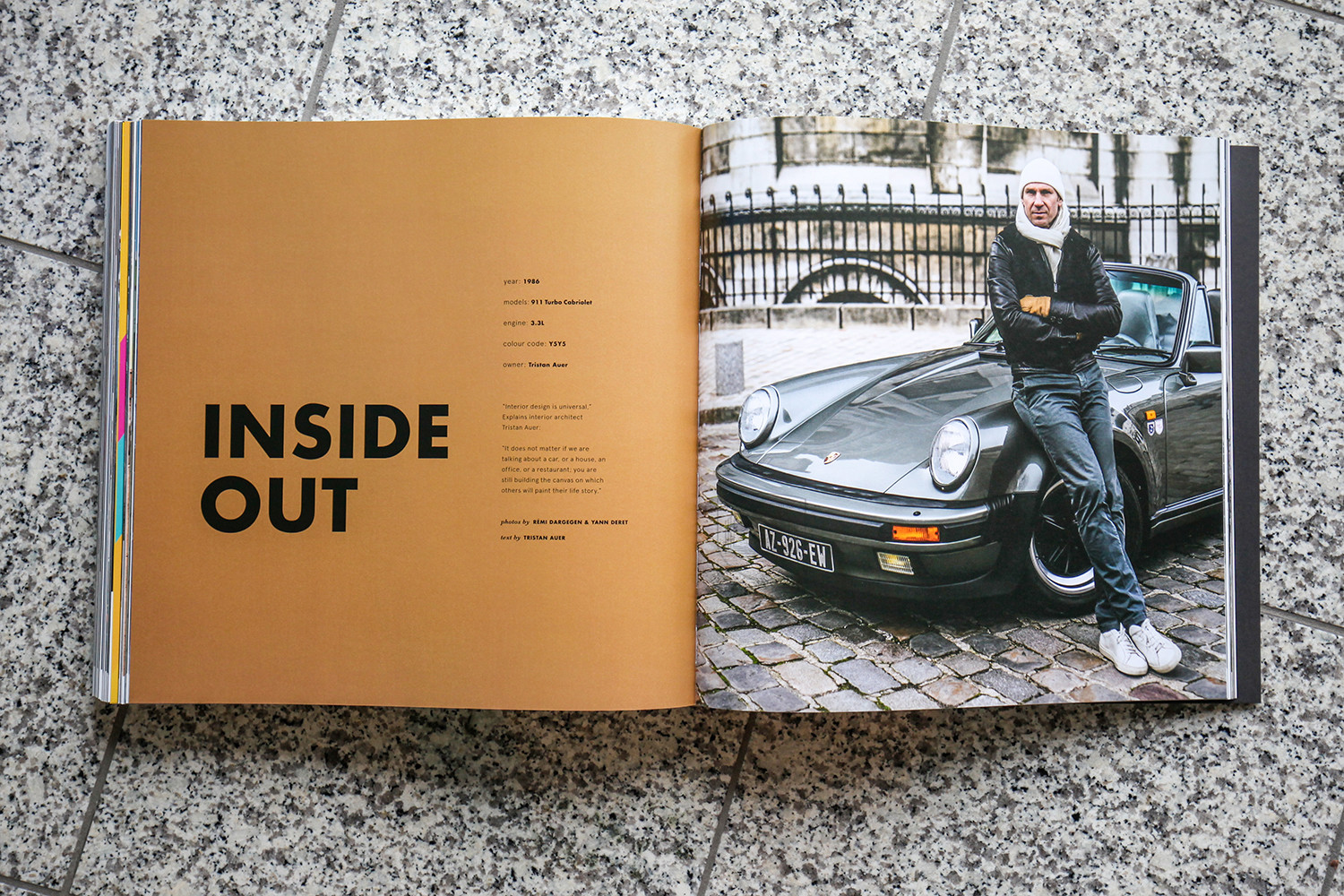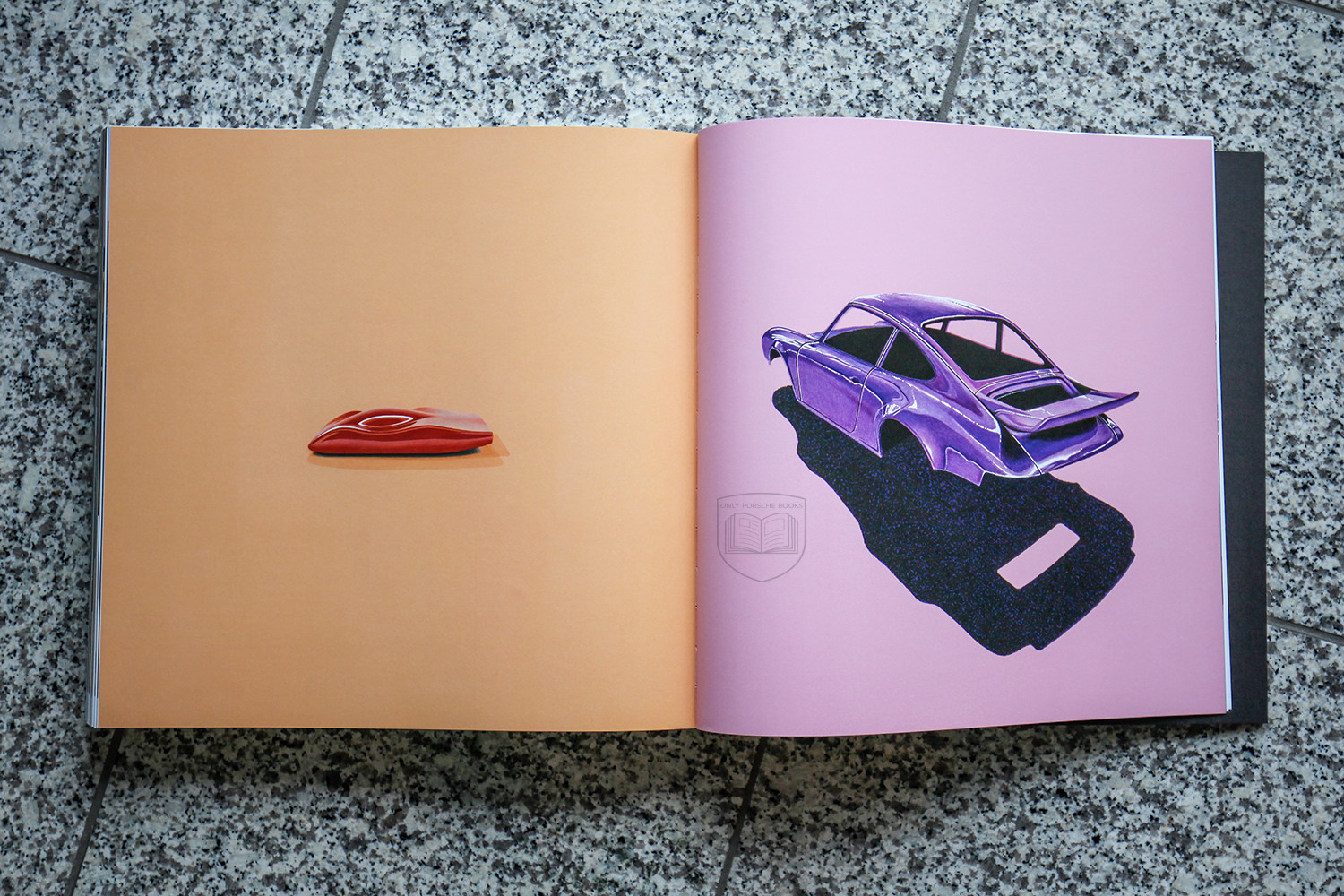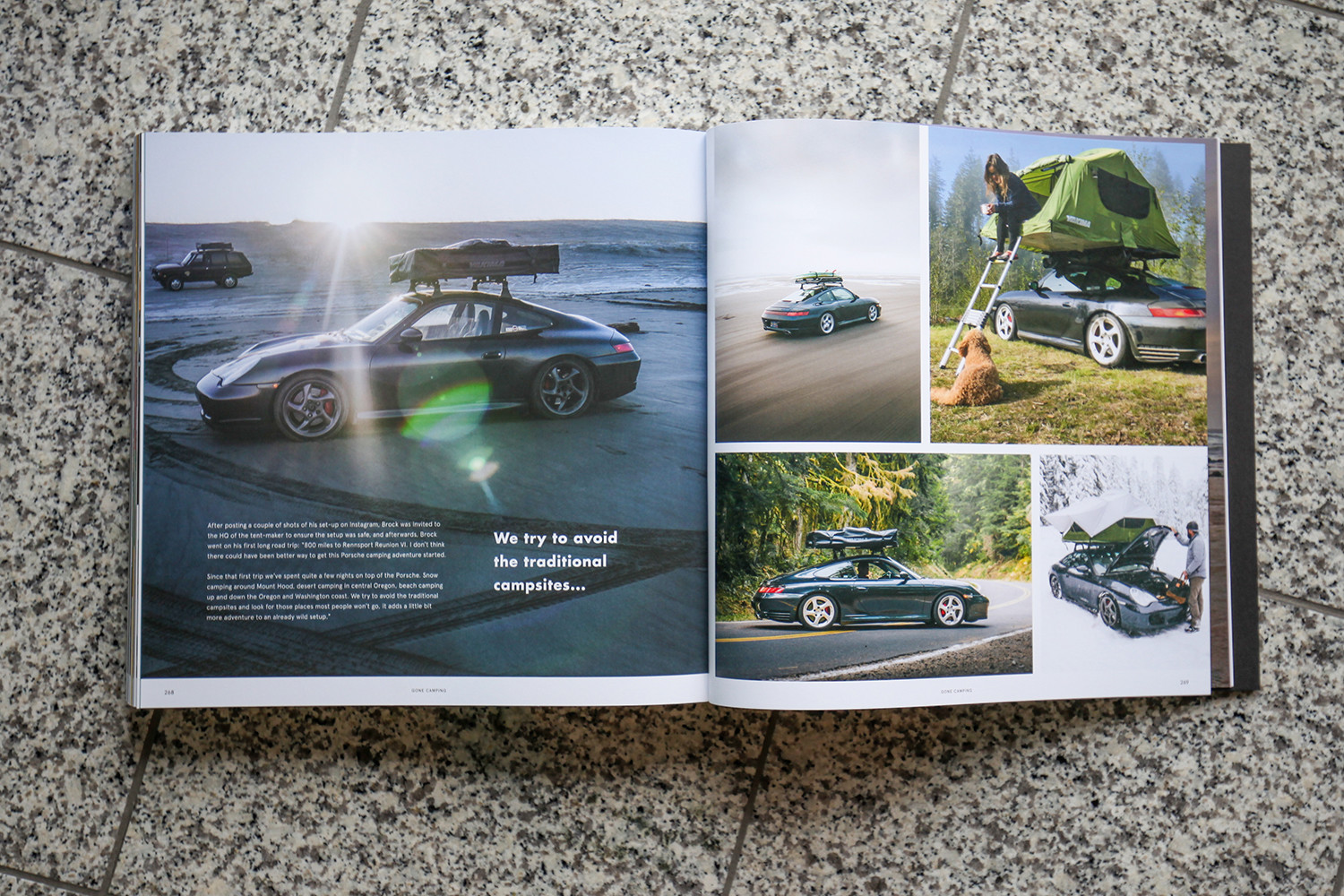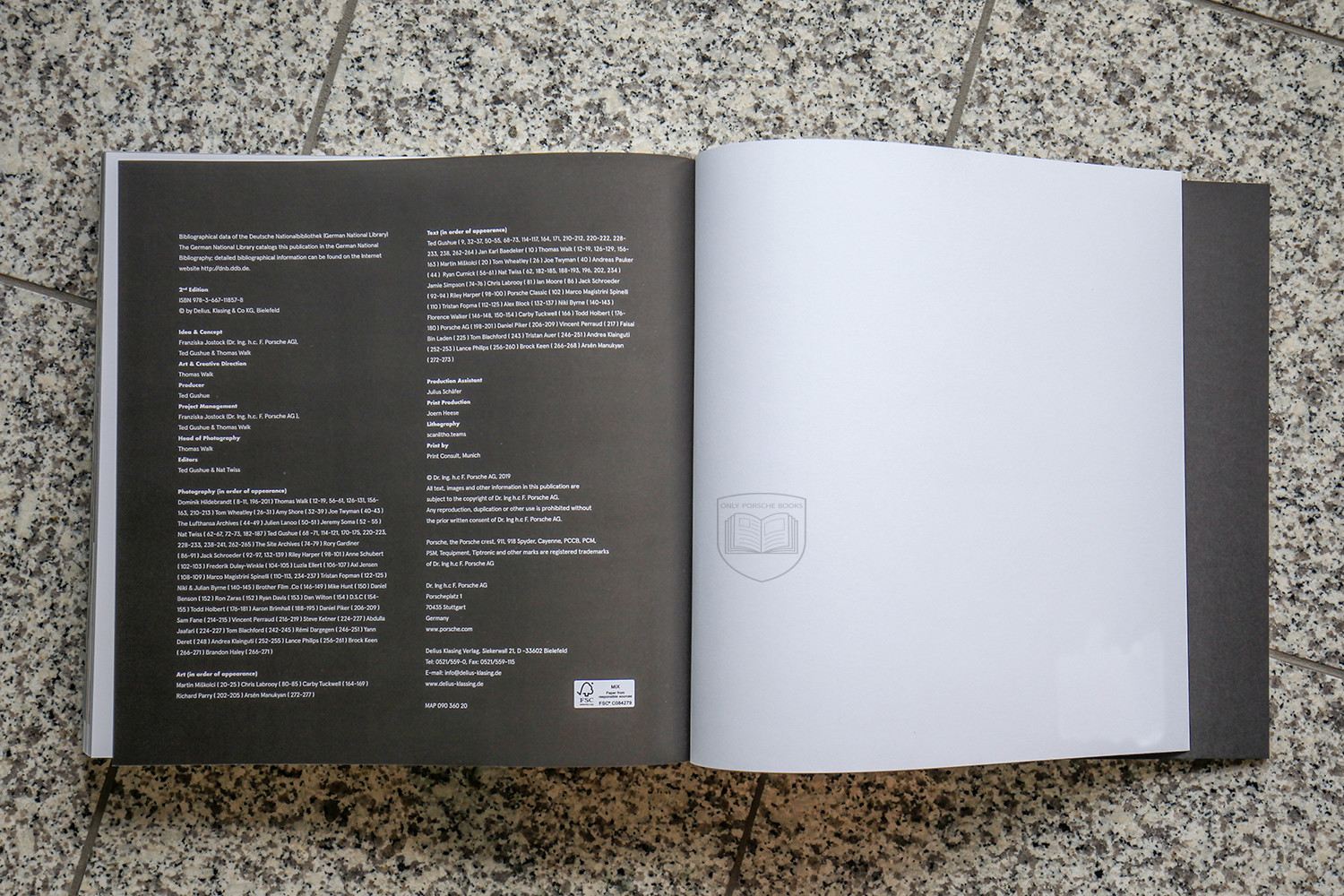English below
And the Oscar goes to „The RBook“ by Frank Kayser
Kopfkino 1: Einsame stille, endlose weite in der fernen Prärie, ein einsamer Cowboy sitzt auf seinem Pferd. Sie halten an einer langen Strasse die sie überqueren wollen. Der Cowboy schaut nach links, schaut nach rechts. Nichts ausser endlose Landschaft. Er gibt dem Pferd die Sporen um über die Straße zu kommen, doch das Pferd folgt ihm nicht, denn es spürt das auf der Strasse eine Herde von Pferdestärken herannaht…. Horsepower pur. In Metall geformt und auf die Strasse gebracht von Porsche. Die RGruppe naht und mit ihnen einzigartige Porsche und Fahrer.
Die Geschichte der legendären RGruppe ist lange und voll mir Historie, voll mit Erzählungen, die nun reich bebildert im „The RBook“ von Frank Kayser nachzulesen sind. Auf 580 Seiten wird diese Geschichte erklärt, erzählt und in unzähligen Bilder aufgezeigt. Bilder die aus dem Archiv der Landstraßen Cowboys der RGruppe kommen, Bilder die Frank Kayser in ihm eingenen typischen Art fotografiert und überarbeitet hat. Fast kommt das Buch selber wie ein klassischer Roadmovie rüber. Schon die Aufmachung und Gestaltung des opulenten Coffee Table Books ist einzigartig. Wie als ob man selber hinter dem Lenkrad eines 1969 Porsche 911 sitzt und über die Küstenstrassen und die kurvigen Täler im Hinterland von Kalifornien fährt, so möchte man aus dem Buch nicht mehr Aussteigen und immer weiter blättern. Hinter jeder Kurve im Buch kommt eine weitere Kurve, sei es eine langgezogene oder eine schnelle, oder eine enge Kurve. Das Buch und die Geschichten sind genauso, Kapitel für Kapitel kommt fährt man mal schnell mal langsam um jede Kurve. Dabei fahren wir im Buch mit verschiedenen Papiersorten durch die Geschichte und lassen uns von den Mitgliedern der RGruppe deren Erlebnisse erzählen. Es presst einen förmlich beim umblättern der Seiten immer tiefer in das Buch. Man versinkt in der Druckerschwärze der Typografie, gedruckt von der Offsetdruckerei Grammlich in der nähe von Stuttgart in bester Qualität. Die Finger werden leicht staubig beim blättern der durch das ganze Buch hindurch top-gestaltenden Seiten. Es muss gestaubt haben während des druckes, wie beim durchdrehen der Hinterräder eines frühen 911er auf dem sandigen Seitenstreifen einer langen Präriestrasse.
Es sind einzigartige Porsche und einzigartige Mitglieder in der RGruppe. So einzigartig wie auch das Buch über die RGruppe „The RBOOK“ ist.
Kopfkino 2: Der Cowboy hört auf sein Pferd und steigt ab. Mit der rechten Hand nimmt er ein Streichholz und zündet es auf seinem rauhen Sattel an. Die Hand mit dem Feuer geht zur Zigarette die im Mundwinkel steckt. Er schaut nach links, von dort kommt die RGruppe und fährt am ihm vorbei. Das Feuer in seiner Hand erlischt durch den Fahrtwind, das Feuer ihn ihm für die RGruppe flammt auf. Der Cowboy denkt über einige neue (alte) Pferde nach.
Der Film und das Buch gewinnen den Oscar!
Das RBook und/oder das RBook limited gibt es unter https://www.therbook.com
And the Oscar goes to “The RBook“ by Frank Kayser
Movie Scene 1: Lonely quiet, endless wide open spaces in the wide prairie, a lonely cowboy is sitting on his horse. They stop at a long road they want to cross. The cowboy looks to the left, looks to the right. Nothing but endless landscape. He gives the horse the push to cross the road, but the horse doesn’t follow him, because he feels a herd of horsepower coming towards him on the road… Pure horsepower. Shaped in metal and brought to the street by Porsche. The RGruppe is approaching and with them unique Porsche and drivers.
The history of the legendary RGruppe is long and full of memories, full of tales, which can now be read with rich illustrations in “The RBook” by Frank Kayser. On 580 pages this story is explained, told and shown in countless pictures.Pictures that come from the archives of the RGruppe’s Country Road Cowboys, pictures that Frank Kayser has photographed and reworked in his own typical way. The book itself almost comes across like a classic road movie. Even the layout and design of the opulent coffee table book is unique. As if you were sitting behind the wheel of a 1969 Porsche 911 and driving along the coastal roads and the winding valleys in the California back country, you don’t want to get out of the book and keep turning the pages. Behind every curve in the book there is another curve, be it a long or a fast, or a tight curve. The book and the stories are the same, chapter after chapter you drive around each curve, sometimes fast, sometimes slow. In the book we drive through the story with different kinds of paper and let the members of the RGruppe tell us their experiences. It pushes you deeper and deeper into the book as you turn the pages. You sink into the printer’s blackness of the typography, printed by the Grammlich offset printing house near Stuttgart in best quality. Your fingers get slightly powdery when turning the pages of the book. It must have been dusty during printing, like the rear wheels of an early 911 spinning on the sandy side strip of a long plain road.
These are unique Porsches and unique members of the RGruppe. As unique as the book about the RGruppe “The RBOOK” is.
Movie Scene 2: The cowboy listens to his horse and dismounts. With his right hand he takes a match and lights it on his rough saddle. The hand with the fire goes to the cigarette stuck in the corner of his mouth. He looks to the left, from there the RGruppe comes and passes him. The fire in his hand is extinguished by the wind, the fire in his head for the RGruppe flares up. The cowboy thinks about some new (old) horses.
The film and the book win the Oscar!
The RBook and/or the RBook limited is available at
And the Oscar goes to „The RBook“more of RGRUPPE and the book @ https://www.therbook.com01/the-rbook/



